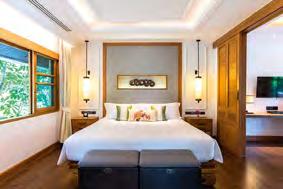








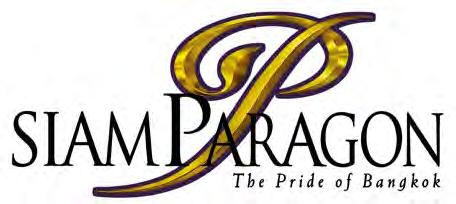











16 IT’S SHOWTIME
Our calendar roundup includes a circus, book fair and a music festival in a season of stellar performances in Asia, plus news of a Bangkok Airways route that goes from one northern capital to another – Chiang Mai to Hanoi.
20 LIGHTEN UP
The heat is on, and it’s time to be kinder to summer skin. A lighter
touch begins with our product suggestions for skin nourishment in beguiling light fragrances.
22 FEEL COOL, BE HOT
Feel more than fine with your summer style with bold prints in muted colours from your favourite brands.
24 INNERMOST KRABI
For every blue route on the waters of Krabi is a green route as well. We provide a guide to verdant pathways leading you inland to quiet rows of mangrove trees and villages.
28 FROM THE HEAVENS
Cool yourself from within. Khao Chae, the fragrant dish originally made for the gods and royalty can now be enjoyed by everyone, recipe included.

Colourful powders may be the headlining act of the Holi Festival; but we shine the spotlight on an equally important feast for the eyes: the food.
Thai eats rely on a history lesson from its food culture that goes back in time.
Red may be the colour of Chengdu’s spicy cuisine, but we’ll also tell you what else there is to savour.
80
Sweet nibbles are everywhere in Thailand. We share inside knowledge on the popular ones so that you, too, can enjoy.

When we’re not up in the air, we keep our ears to the ground for the latest and greatest in trends and events.
92 BANGKOK
94 SAMUI
96 PHUKET
100 CHIANG MAI / CHIANG RAI
102 PATTAYA / TRAT
104 CHENGDU / CHONGQING / GUANGZHOU
106 HONG KONG
108 SINGAPORE
109 KL
110 PHNOM PENH / SIEM REAP
112 DANANG / PHU QUOC
114 VIENTIANE / YANGON
115 MUMBAI MALDIVES
118 NEWS
Bangkok Airways holds events to thank loyal customers and continue our social responsibility programmes.
124 ROUTE MAP
128 AIRCRAFT INFO
130 HANOI
Indulging in pho soups and Vietnamese drip coffee is closer to reality with flights between Chiang Mai and Hanoi.

This month’s cover:
Chefs give Thai food a new spin from forgotten recipes.

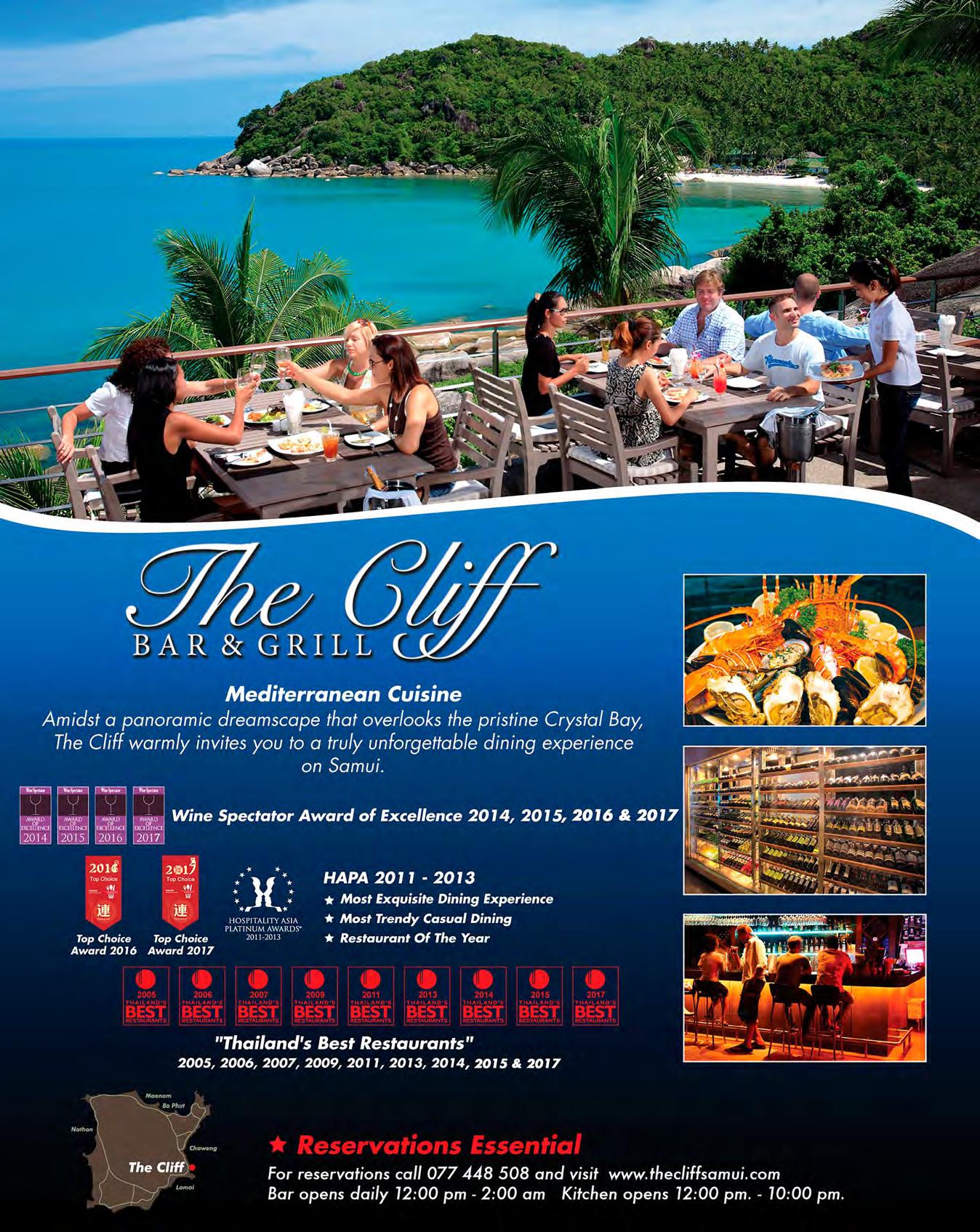


MESSAGE FROM THE PRESIDENT

On behalf of Bangkok Airways, I’d like to convey my gratitude for your support and thank you again for flying with us.
As you already know, aside from our services that work in consistent collaboration with flight schedules, Bangkok Airways operates and manages 3 domestic airports of Samui, Sukhothai, and Trat. We realise that the convenience of getting in and out of the airport becomes crucial to people from all walks of life. In ensuring ease of travel, on hand are limousines and taxis, providing on the spot options. Additionally, on January 9, 2018, our airline signed an agreement together with Thailand’s Department of Land Transport to provide public buses for travellers to commute between the 3 airports and city centres, including main tourist attractions and bus terminals for more convenience and options for travellers. These new transport services come with the reassurance of safety standards to be closely monitored and administered with government support.
In addition to offering better service quality in managing our three airports mentioned above, we’re also excited to announce our new expansion route of Chiang Mai to Hanoi (Vietnam) once a day using our ATR72-500 planes with seating for 72 people. We begin service on this route on March 25, 2018.
Again, I express sincere thanks for your trust in Bangkok Airways and we maintain the commitment to not disappoint you, our valued customers. We look forward to continue giving you our best in services.
ช่องทางการเดินทางเข้าถึงและออกจากสนามบินแต่ละแห่ง เป็นการช่วยอ�
ดูแลมาตรฐานความปลอดภัยและคุณภาพการให้บริการอย่างใกล้ชิดจากภาครัฐ นอกจากการยกระดับคุณภาพการให้บริการภายในสนามบินทั้งสามแห่งแล้ว

Captain Puttipong Prasarttong-Osoth
| President, Bangkok Airways Public Company Limited












BANGKOK AIRWAYS PUBLIC COMPANY LIMITED
99 Mu 14, Vibhavadi Rangsit Road, Chom Phon, Chatuchak, Bangkok 10900, Thailand www.bangkokair.com
ADVISORY BOARD
Mr. Prote Setsuwan
Vice President - Marketing
Ms. Sumalee Chaitientong
Vice President - Ancillary Revenues
Mr. Kridhakorn Sirabhabhoj
Director - Advertising and Creative
Mr. Benjamin Sirirat
Manager - Branding and Creative
Mrs. Rattanaporn Sa-Nguanjangwong
Business Services - Ancillary Revenues
PUBLISHER
MPMI Group Co., Ltd.
1 Soi Lasalle 23/2, Bangna, Bangkok 10260, Thailand
Tel. +66 2744 4975
Fax. +66 2744 5271
Managing Director
Chaovanee Ajanant
Email: chaovanee@mpmith.com
EDITORIAL
Email: editorial@fahthaimag.com
Editorial Director Somtawin Chanyawong
Editor-in-Chief Anutra Ungsuprasert
Senior Editor Nawa Acosta Wright
Deputy Editor Sarita Urupongsa
Contributors
Bussara Boonboot
Chalotorn Payomyol
Chusri Ngamprasert
Kay Choomongkol
Mark Pochaw
Nawarat A Wright
Nicola Hil
Passakorn Hongthong
Phoowadon Duangmee
Prachi Joshi

BEST PHOTOGRAPHY
Richard Augustin
Sarita Urapongsa
Sirin P Wongpanit
Veena Thoopkrajae
Photo Editor Thewin Chanyawong
Contributing Photographers
Apichat Sukhunnee
Permboon Wongpanit Wichit Kongsiangsung IS THE GOLD WINNER PEARL AWARD 2017

Chanathip Nantachaibancha
Dolnapha Ram-Indra
Kay Choomongkol
Mark Pochaw
Neha Mathur
ART
Creative Director JyeShen Koo
Graphic Designer Pongtorn Khaoplag
Contributing Stylist Saranya Ariyakul
PRODUCTION
Colour Separation: Soontorn Film
Printer: WPS (Thailand) Co., Ltd.
ADVERTISING
advertising@fahthaimag.com
Media Manager: Daruni Klaprapchon
Marketing Manager: Reza Bizmark
ADVERTISING HOTLINES
Guitar +669 2270 9528
Bob +668 2446 9192
AUSTRALIA THE MEDIA COMPANY
Leanne Richardson Tel: +612 9909 5800 leanne@themediaco.com.au
CAMBODIA, LAOS, MYANMAR
Kittikun Adunsirisaward Tel: +668 9468 2440 kittikun@bangkokair.com
Hathaiwan Chieochankitjakan Tel: +668 6900 5278 hathaiwan@bangkokair.com
CHINA, HONG KONG, MACAU, TAIWAN CHINA MEDIA OPTIONS CO., LTD.
Rebecca Tsang-Pereira Tel: +852 2321 9788 rebeccaCMOsupport@gmail.com
FRANCE, GERMANY, SWITZERLAND
INFOPAC MEDIA HOUSE
Jean Charles Abeille. Tel: +331 4643 0066 jcabeille@infopac.fr
INDIA, MALDIVES RMA MEDIA
Faredoon Kuka Tel: +9122 2925 3735 kuka@rmamedia.com
KOREA
MEDIREP CO.
Soohoon Oh Tel: +822 734 0786 soohoonoh@medireponline.com
JAPAN
PUBLICITAS JAPAN K.K.
Hiroko Minato
Tel: +8150 8882 3456 hiroko.minato@publicitas.com
MALAYSIA
MPMI SDN BHD
Alvin Tan
Tel: +603 7880 2185 mpmimy@gmail.com
SINGAPORE, INDONESIA
MPMI PTE LTD
S. S. Hoo
Tel: +65 6464 6261 mpmisg@gmail.com
UNITED KINGDOM
MAJOR MEDIA LTD.
David Hammond
Tel: +44(0) 20 8467 8884 david@majormedia.co.uk
USA
THE MULTIMEDIA INC.
Fernando Mariano
Tel: +14 0790 3500 fmar@multimediausa.com
“FAH THAI” is the in-flight magazine of Bangkok Airways Public Company Limited and is edited and published by MPMI Group Co., Ltd. All articles and photographs published herein are created by the authors and photographers at their own discretion and do not necessarily represent the views of the airline. Bangkok Airways holds no responsibility or liability arising out of the publication of such articles and photographs.
All information correct at press time. All rights reserved. No part of this magazine may be reproduced, stored in a retrieval system or transmitted in any form or by any means without the prior written permission of Bangkok Airways Public Company Limited and MPMI Group Co., Ltd.








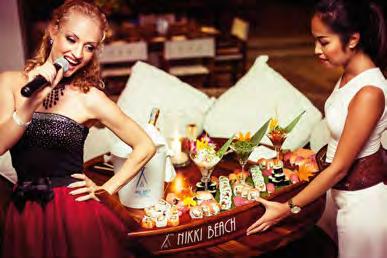


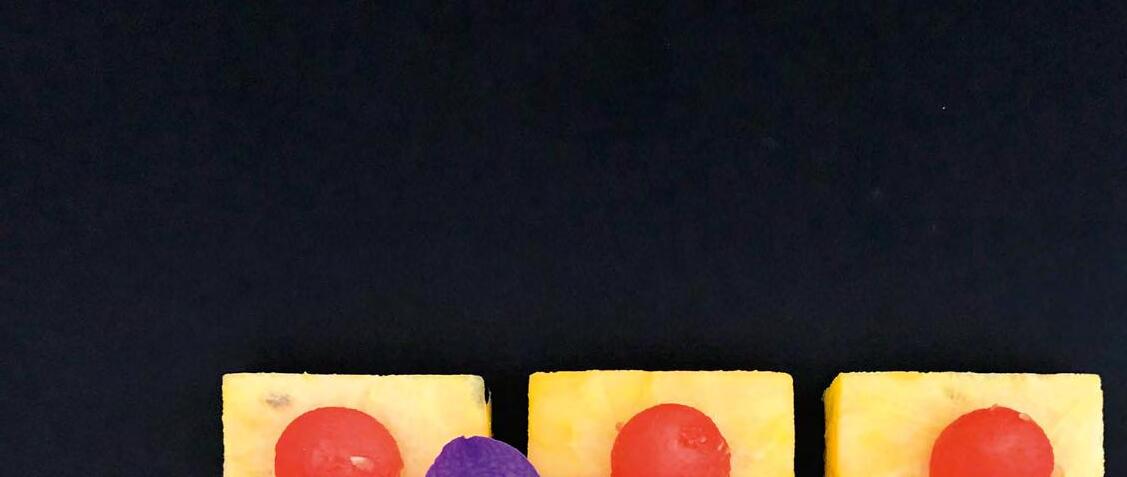
It’s the season for all things water –from a festival of non-stop splashing to fruits that give us their juicy best. In the Asian summer, it’s the watermelon that’s our best bet for a thirst quencher.

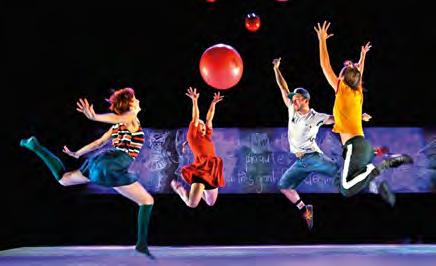

Hong Kong welcomes a performance arts extravaganza starting late February when the Hong Kong Arts Festival takes place throughout the island. Heading into its 46th edition, the Festival continues to present a wide array of music, opera and dance performances, ranging from the traditional to the contemporary and experimental. This year, the programme directors have curated an impressive list of performances around the theme of “What’s Real to Me,” a commentary on today’s “post-truth” era.
Highlighting the HKFA will be the World Music Weekend with klezmer music from eastern Europe, the presence of Korea’s singerstoryteller pansori tradition, and Buryat-Mongol music from the vast and distant Lake Baikal region of Siberia. The line-up also includes the Danish National Symphony Orchestra, and the B’Rock Orchestra, a unique group whose repertory combines classical music with theatre, visual art or video. Grammy-award winners like trumpeter Chris Botti and jazz artist Cecile McLorin Salvant and the Aaron Dhiel Trio will be there, along with other renowned performance troupes like the Ballett Zürich and the American Ballet Theatre.
The 46th Hong Kong Arts Festival will also present a number of theatre performances, such as a new take on flamenco dance and adaptations of Chinese opera. For lovers of the performing arts, choices abound.
Various locations throughout Hong Kong, hk.artsfestival.org
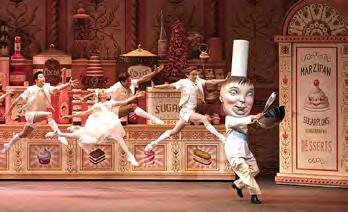
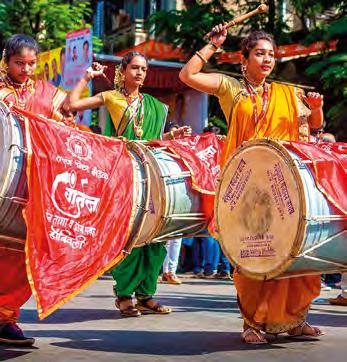

2MAR 2018
Spring is in the air as the city gears up for two important festivals in March. First comes Holi the Hindu spring festival, India’s second biggest festival after Diwali, which gets celebrated with much fanfare. In Mumbai, street jamborees compete with private Holi parties and the city takes on many colourful hues. The festival falls on March 2nd this year. Turn to page 44 to feast your eyes on some lip-smacking Holi delicacies.
In the second festival, On Gudi Padwa, people in this Maharashtra state bring in the new year. March 18th marks the first day of spring. Many households erect a gudi (a bamboo staff topped with a garlanded copper pot and a piece of silk cloth) outside their homes to usher in prosperity in the New Year. In the Girgaum area of Mumbai, residents march in huge processions to celebrate. It’s a street spectacle worth seeing as women dress in traditional nine-yard saris, young men beat the dholak (drum), and kids perform with lezhim (a musical instrument made up of small cymbals). indianholiday.com

25MAR 2018
CHIANG MAI-HANOI:
If you love the aromatic flavour of pho soups, cha ca (grilled turmeric fish with dill), bun cha (grilled pork patties), a café culture, along with a mixture of French culinary and architectural influences. Bangkok Airways “Boutique Airline” will open a brand-new route directly from Chiang Mai, starting this coming 25 March with one flight per day.
A few days in Chiang Mai on your way to Hanoi would be a nice bonus. Thailand’s northern city has the slow pace, tribal offerings, and increasingly eco approach to travel compared to Hanoi’s vibrant, fast-paced, free-wheeling street ambience.
Check out flight schedules for booking and information at bangkokair.com.



28 - 8
NONTHABURI MOTOR SHOWTIME
This is the biggest automotive event in Southeast Asia and you can expect the world’s latest innovations, technology and designs from the automobile industry.
Apart from the futuristic concept cars, the leading car manufacturers are moving towards the same direction – producing electric vehicles, autonomous driving technologies, with smart and connected vehicles. This will all be showcased at the 39th Bangkok International Motor Show held from 28 March until 8 April, 2018 at Challenger 1-3, Muang Thong Thani, Nonthaburi. Entrance Fee: 100 baht, open 12 - 10pm on weekdays and 11am10pm on weekend, 12 - 10pm on VIP Day (26 March 2018), bangkok-motorshow.com, facebook.com/BangkokMotorshow, T: +66 (0) 2522 1731-8




28 - 8
BANGKOK TIME TO READ
Pencil this in! Bangkok’s annual book fair will come alive again and thousands of books await their readers to discover them. Organised by the Publishers and Booksellers Association of Thailand, approximately 450 publishing houses and more than 900 booths will be offering books and interesting activities at the 46th National Book Fair and 16th Bangkok International Book Fair 2018 at Queen Sirikit National Convention Center, Ratchadaphisek Road. Events include a book exhibition, rare books, titles from local and international publishers, new book launches and other publishing-related activities. Open 10am - 9pm, pubat.or.th, facebook.com/bookthai, T: +66 (0) 2954 9560-4 ext 101


4 - 27
MUMBAI CRICKET MANIA
After the major festivals of Holi and Gudi Padwa, a celebration of the another “major religion” takes place in India – cricket! Cricket is a national obsession and it reaches fever pitch with the annual Indian Premier League (IPL) Championship. The 2018 season will begin on April 4th and carry on until May 27th, with 60 matches being played in the Twenty20 cricket format. This is the 11th edition of the championship and matches will take place across India. In Mumbai, the iconic Wankhede Stadium will host the city matches. It promises to be a season of great cricket with both Indian and international cricketers competing across 8 teams. Get set to watch the city’s team, Mumbai Indians defend its championship title amidst high-octane competition. Book your seats in advance and soak in the charged atmosphere. bookmyshow.com/mumbai
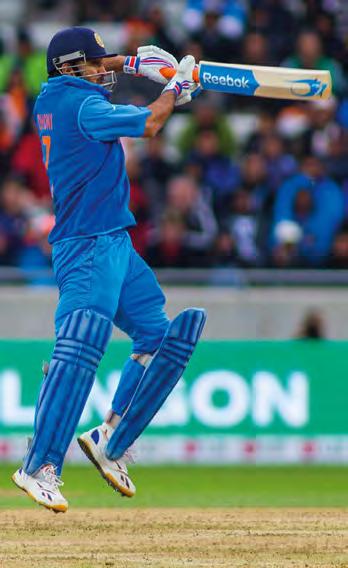
13-15APR 2018
Like Chiang Mai, Vientiane, Bangkok and some other cities in Southeast Asia over the traditional New Year celebrations, water plays a major role as a symbol of cleansing and blessing as much as cooling down the April heat. Find your way to the banks of the Mekong River on April 14 and witness thousands of sand stupas being created as locals make them to keep the evil spirits at bay over the new year celebration.
Luang Prabang in northern Laos will be celebrating the traditional New Year on April 13, and the festive event extends itself with fun activities, colourful processions and meritmaking ceremonies along the peaceful banks of the Mekong River. Legend has it that King Kabilaprom lost a quiz challenge to Prince Thammakuman, forcing him to pay a penalty –decapitation. Since no monarch’s head should touch the ground, it was placed on a tray and kept on Mount Krailard to be brought down every year by one of his seven angel daughters for a procession. Known as the Sang Klan Long Festival in Laos, the legend is recreated annually for Pee Mai Lao (Lao New Year), with a vibrant parade overseen by the most beautiful local women. Meanwhile, senior monks are seated on a palanquin, over whose hands the faithful pour perfumed water.
In Thailand, the Songkran festival is celebrated for three days from April 13 to April 15 in a grand way: in Chiang Mai, Khaosan and Silom roads in Bangkok, Pattaya, Koh Samui, other big cities and almost everywhere throughout the country. It marks a new year and a new beginning for Thailand.
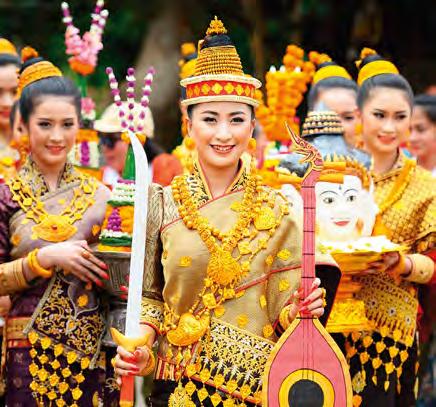
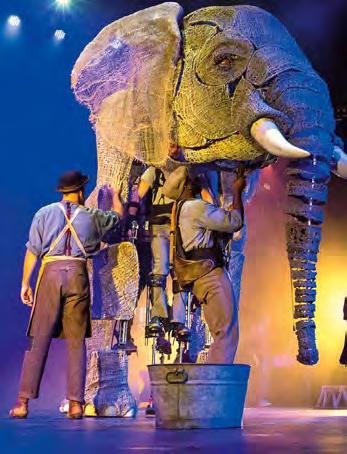
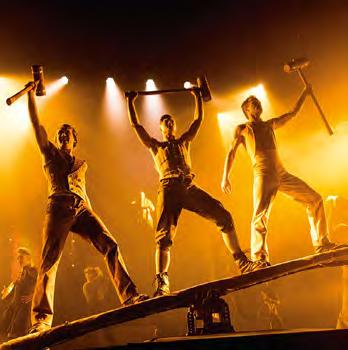
18-29 APR 2018
The circus has always had an allure of magic and mystery. Circus 1903: The Golden Age of Circus is offering guests of all ages to relive that very magic that brings to life a turn of the century circus performance.
Backed by the expertise of The Illusionist, the world’s biggest magic show, the performance will showcase an eclectic mix of sensational puppetry featuring giant elephants. Circus 1903 will also be complemented by a huge cast of the most unique, amazing and dangerous acts from all four corners of the world.
Step right up and be enchanted by the magic of the big top as Circus 1903 brings to life the golden era of circus with the aid of contortionists, acrobats, musicians as well as thrilling high wire acts. It’s a magical performance that will captivate audiences of all ages. Mastercard Theatres at Marina Bay Sands, circus1903.com
APR 2018 MAY 2018
29-1
The Malaysian International Shoe Festival (MISF) will once again showcase some of the biggest and popular brands and designs to shoe enthusiasts. The country is widely recognised as being one of the leaders in the ASEAN region with its high fashion footwear and exporter of international fashion wares. The event provides an ideal platform for brands and designers to reveal their latest creations.
Organised by the Malaysia Footwear Manufacturers Association, visitors will not only get to enjoy a journey into the world of stylish footwear but also gain the chance to meet world-renowned footwear designers, celebrities, and get the latest designs and collections. Some of the biggest shoe brands in the world will also exhibit their offerings as well. Part trade show, part retail – the MISF will also present the opportunity for visitors to purchase footwear on display at the event. Putra Wold Trade Centre, Kuala Lumpur, misfshoe.com




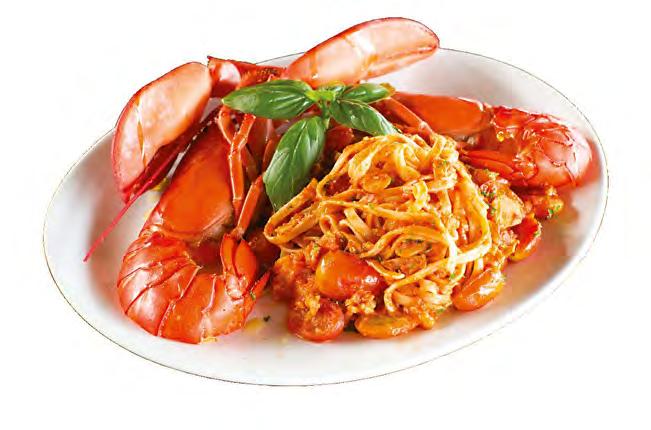



BEAUTY AND HEALTH
With summer’s approach, it’s time to change your routine to a low maintenance one. Let your products make the season feel light and prepare yourself for a bare, sun-kissed look. Our essentials provide you with a lighter touch but a stronger protection.

DAZZLING SPRING BODY OIL 100ML FROM ERB (890 Baht)
Pour a generous amount and apply liberally all over a damp and freshly showered body to nourish your skin with olive oil and grapeseed oil.
AROMATIC WOOD AROMATHERAPY CONDITIONER
200ML FROM THANN (550 Baht)
Leaves hair soft and shiny, helps repair, restore and strengthen your crowning glory from the sun’s strong rays.
ORIENTAL EXPRESS FLEURFUME
HAND CREAM 25G FROM ERB (290 Baht)
Notes of lemongrass and bergamot expresses the scents from the tranquil East. The sparkling and invigorating scents from Thai botanical ingredients deliver a perfumed Eden.
EDEN BREEZE HAND CREAM 40G FROM THANN (790 Baht)
More sun exposure does a number on your hands too. Revitalise dry and aging hands with 6 natural precious oils in a non-greasy lightweight but intensely enriched formula.
HAND SALVE 3OZ FROM BURT’S BEES (250 Baht)
Moisturise rough, dry hands with 100% natural ingredients.
Brimming with botanical oils, herbs and beeswax, this hand salve offers skin the hydration it craves, plus nourishment.
OIL-FREE FACIAL SUNSCREEN SPF30 PA+++ 40G FROM THANN (1,000 Baht)
Protect against the damaging effects of harmful UVA and UVB rays on the skin and prevent premature aging and wrinkles.
SPECIALIST DREAM SCREEN SPF
45 PA+++ 45ML FROM BENEFIT
(1,350 Baht)
It absorbs instantly to help prevent skin from aging by protecting against sun damage and leaves your skin feeling moisturised.

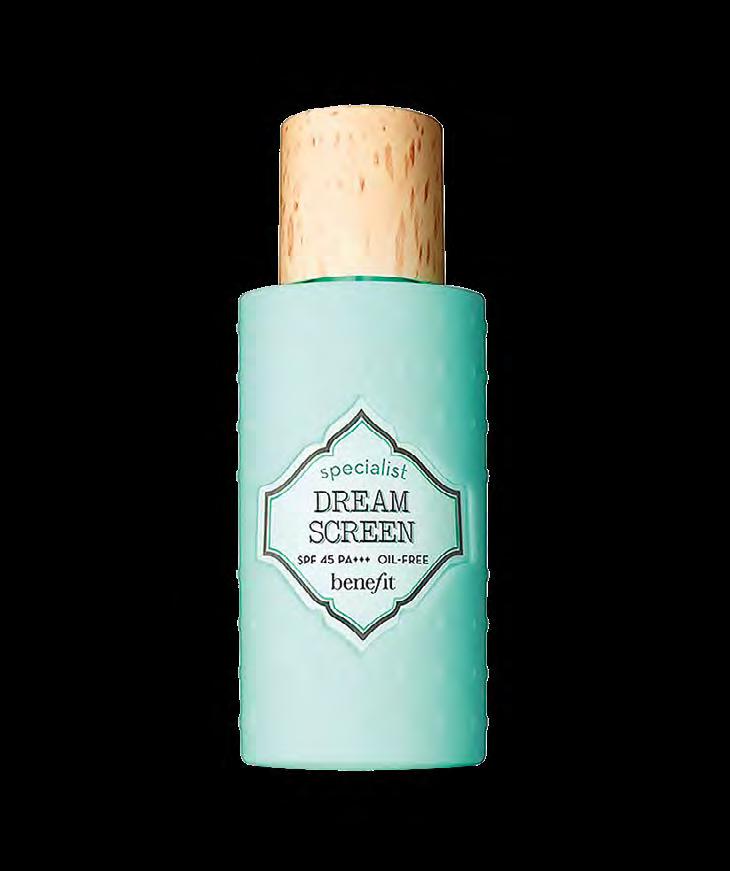
Provides moisture to skin and keeps your skin healthy and moisturised by forming a protective layer that protects skin from various external environments.
HYDRATING PRETTIFYING FINISHER
SPF 35 PA+++ 50ML FROM ORIGINS
(1,600 Baht)
Fortified with energising coffee beans and panax ginseng, it instantly restores luminosity as it perfects your skin to look smooth, supple and vibrant.


As the temperature rises, the number of day dreams do too, of days at the beach or a picnic in the park. We may love the feel of a little sun on our face, but we’ll get by with help from some SPF
FIRMING BODY LOTION 200ML FROM TRILOGY (1,040 Baht)
Fragrance of lavender, frankincense and rose geranium gets your skin moisturised, more

TOTAL AGE DEFY CREAM
SPF 15 SUNSCREEN 1.69OZ FROM SEPHORA COLLECTION
This anti-aging facial cream produces visibly younger-looking and beautiful skin.

Remember what the SPF number means: the numbers are a guide that tells you how long you can stay in the sun without getting burned. An SPF of 15 means that you can be in the sun for fifteen times longer without burning than you’d be able to without sunscreen.
Apply generously. Wearing sunscreen is a great start, but it won’t live up to its sun protection potential if you’re not putting enough on.
Don’t rely on clothes for protection. Covering up is a great added measure of protection, but experts say that an average t-shirt only provides an SPF of about 8.
Don’t miss those hard-to-reach or easily forgotten spots, like your ears, behind your knees, and the tops of your feet. If they’re exposed, it’s getting some unwelcomed love from the sun.

COLLECTION (520 Baht)
A luxurious yet light ‘whipped cream’ texture, with a delicate fragrance, and a feeling of comfort upon application. It provides a light sensory experience, complementing their bath scents collection.

finishing shine spray for a lustrous look.

FIZZING BATH CUBE CHERRY BLOSSOM 18G FROM SEPHORA COLLECTION (50 Baht)
Indulge in a special moment of well-being as the colourful cube dissolves in bath water – leaving an inviting milky-ness that leaves your skin silky with a delightful scent. Just sit back and relax and be assured it’s all tested to be kind to your skin.

AHA BOTANICAL BODY SOAP 236ML FROM MARIO BADESCU (300 Baht)
Refresh your skin with a body wash infused with fresh fruit extracts to thoroughly cleanse and exfoliate skin.
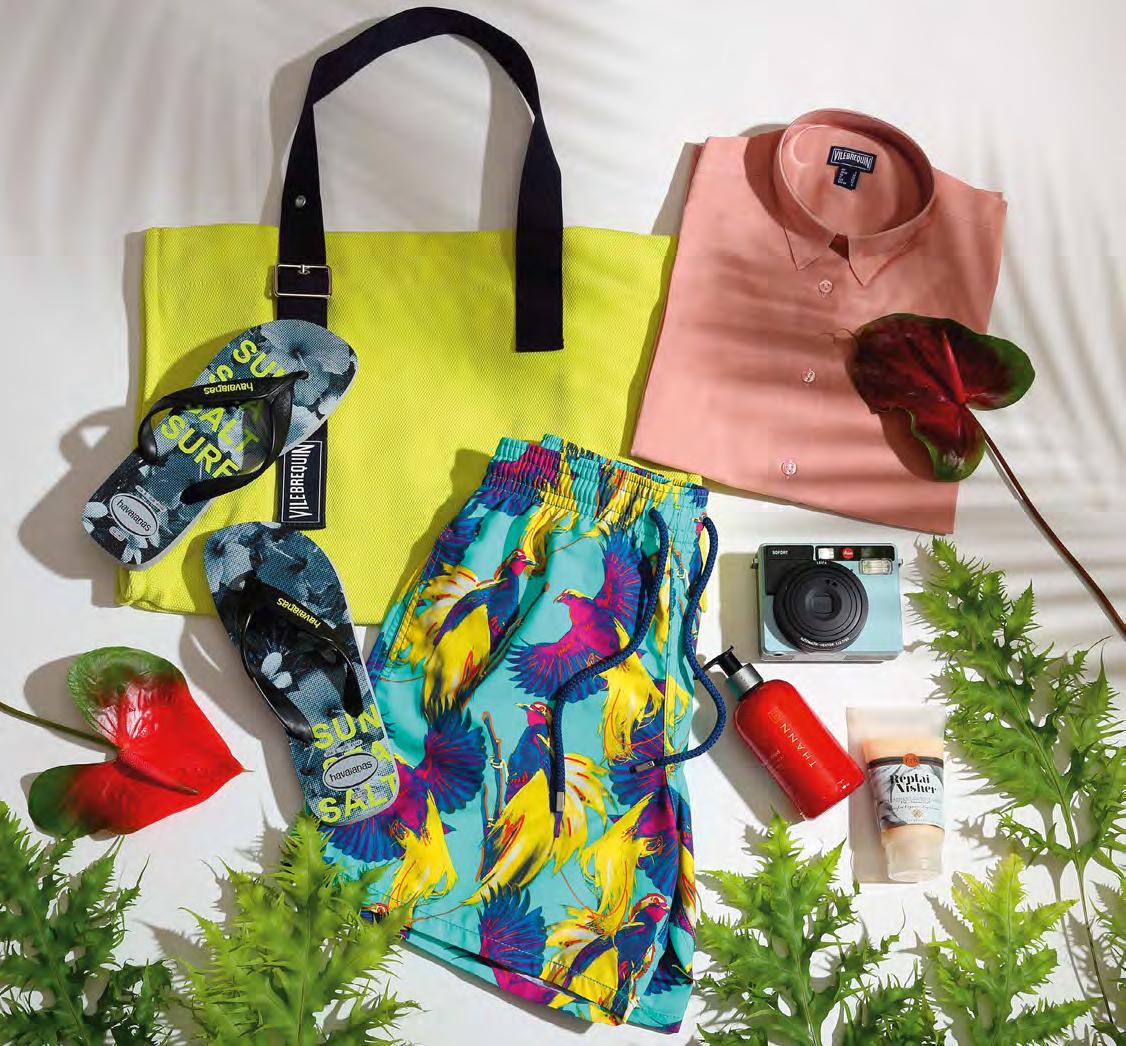
Get into the spirit of summer and also look the part. Begin with the smells of the season and move on to your wardrobe style. Your lifestyle should not come to a grinding halt with the rise in mercury. Instead, be the cool look of summer.
LARGE YAZU COTTON BEACH BAG FROM VILEBREQUIN (6,800 Baht)
➋ CAROUBIS SOLID LINEN SHIRT FROM VILEBREQUIN (8,500 Baht)
➌ SOFORT SMALL FUNCTIONALITY AND
CONTEMPORARY COLOUR CAMERA FROM LEICA (11,800 Baht)
➍ AROMATIC WOOD AROMATHERAPY SHAMPOO 250ML FROM THANN (550 Baht)
➎ REPLAI WISHER TREATMENT
CONDITIONER 140ML FROM ERB (590 Baht)
➏ MOOREA BIRD OF PARADISE POLYAMIDE SWIMSHORTS FROM VILEBREQUIN (9,000 Baht)
➐ SUN SEA SALT SURF SANDALS FROM HAVAIANAS (990 Baht)
Erb 5F Central Chidlom
Tel +66 (0) 62 597 5563
Havaianas
MF Siam Center
Tel +66 (0) 2658 1602
Leica
2F Gaysorn Village
Tel +66 (0) 2656 1102
Thann
3F Gaysorn Village
Tel +66 (0) 2656 1399
Vilebrequin
2F Helix Bldg. Emquartier Tel +66 (0) 2003 6132

Havaianas
MF Siam Center
Tel +66 (0) 2658 1602
Maison La Bougie@Matter Maker
GF Siam Center
Tel +66 (0) 2658 1098
S’well@Matter Maker
GF Siam Center
Tel +66 (0) 2658 1098
Thann
3F Gaysorn Village
Tel +66 (0) 2656 1399
Vilebrequin
2F Helix Bldg. Emquartier
Tel +66 (0) 2003 6132
WAIKIKI PALM TREE PRINT WATER BOTTLE FROM S’WELL@MATTER MAKER (1,790 Baht)
➋ BIRD OF PARADISE PACKMIN DELIGHTFUL ZIPPED CASE FROM VILEBREQUIN (2,250 Baht)
➌ EDEN BREEZE AROMATHERAPY SHOWER GEL 320ML FROM THANN (650 Baht)
➍ HUMLAN WASH AND WEAR HEADPHONES IN TOMATO FROM URBANEARS (1,990 Baht)
➎ JANGALA SCENTED CANDLE 190G FROM MAISON LA BOUGIE@ MATTER MAKER (2,150 Baht)
➏ SLIM PAISAGE SANDAL AERIAL BEACH SCENES FROM HAVAIANAS (1,290 Baht)
➐ TRIANGLE SHAPE BIKINI TOP MIX POLYMIDE FROM VILEBREQUIN (5,500 Baht)
➑ SOLID NEOPRENE BIKINI SHORTS FROM VILEBREQUIN (5,500 Baht)
} PARADISE 3D PRINTS ONE PIECE SWIMWEAR SILKY TOUCH FROM VILEBREQUIN (10,500 Baht)
Get in the mood for summer with fun and colourful tropical designs that proclaim the season. Surround yourself with the sights of summer and get into the breezy rhythm with everything you own.
The sheer beauty of Krabi – radiant in its dazzling cerulean waters that blend and sometimes contrast with an indigo sky and dreamy sunsets – puts it at the top of the list for many travellers.
If the pull of the sea, sand, and karst islands weren’t enough, Krabi offers forests and mountains, along with local history, a thriving mix of cultural heritage and therapeutic regimens that create an overall feel of wellbeing. To top it all off is the hospitality and friendliness of the local people that makes the island a true sanctuary for relaxation and indulgence in nature.
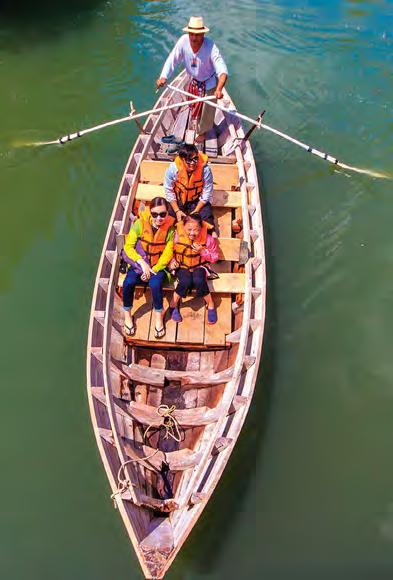
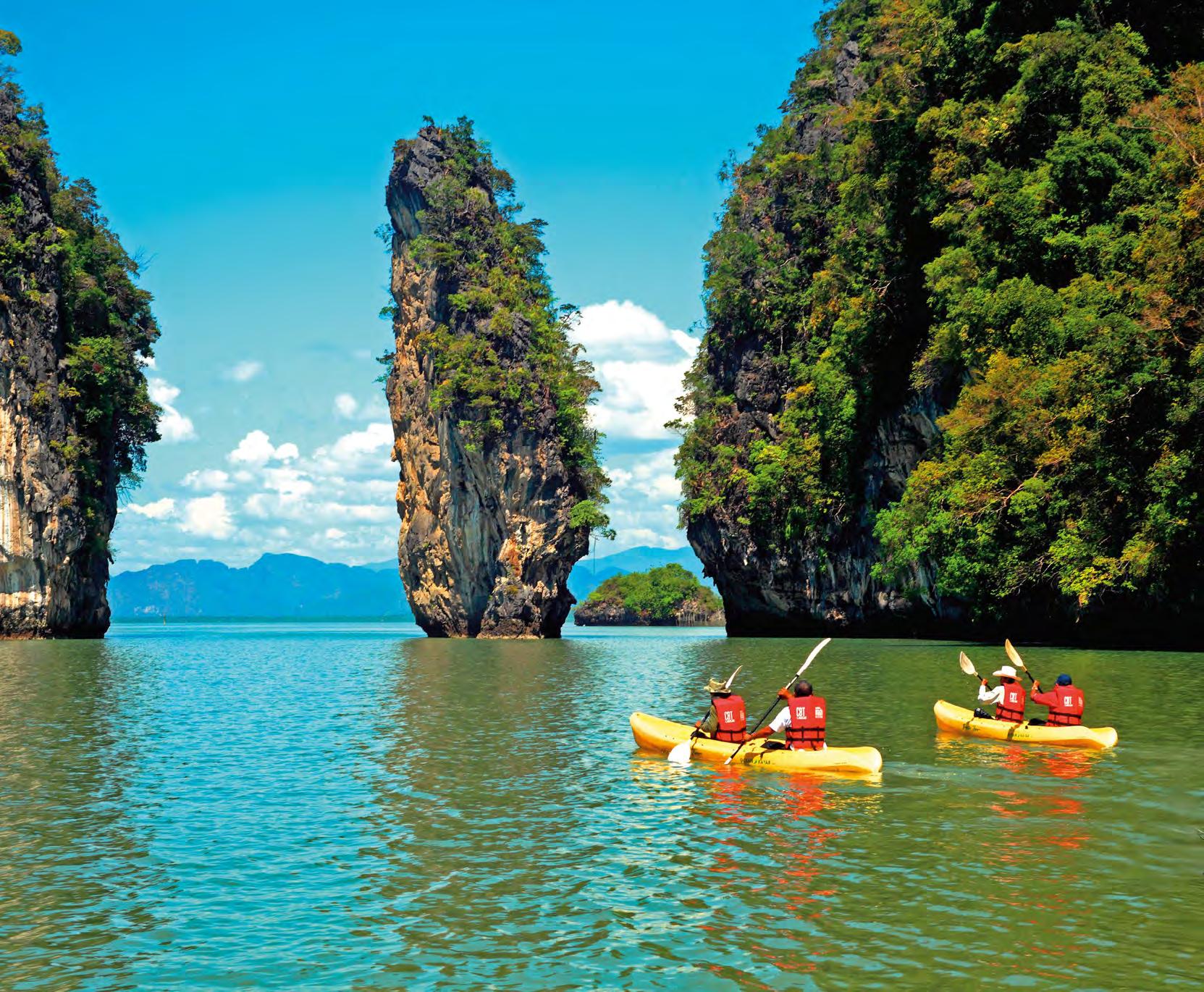
In Krabi, you’re spoilt for choice with the many well-known natural havens – having been amplified by word of mouth and power of social media. Popular islands and destinations include Koh Phi Phi, Koh Lanta, Koh Hong, Koh Poda, Ao Nang bay, Ao Railey, Ao Luek, and Khlong Muang beach. From bungalows to luxury hotels, abundant places offer modern and comprehensive facilities, and travel companies are at the ready to arrange island-hopping daytrips or pampering massages and wellness retreats. We highly recommend a deep immersion in the Krabi experience and the following five compelling trips should tell you why the alluring attractions of the island makes for a special getaway.

Your boat trip from Laem Sak will pass by dramatic landscapes, including the amazing ancient cliff paintings. Be part of the flora and fauna preservation by participating in an orchid planting activity. Experience the diverse BuddhistIslamic-Chinese culture, where people of different origins and beliefs have co-existed in harmony for generations. A local dish not to be missed is rice prepared with a local shrimp paste and served with the crunch of seaweed grapes known as green caviar.
A Krabi outing takes you to the mangrove forest and the tranquil village of Thung Yi Pheng in the Lanta Island district. Relax your mind and body during your stay in the local community, enveloped by tranquillity and surrounded by nature. Practise some mindfulness while listening to birdsong and rustling leaves and cool breezes. Let your thoughts flow with the streams. This great combination with nature makes you come away revitalised.
Opposite Page, Bottom Left Calm waters smooth the path to paddle through Thung Yi Pheng. Expect to see fishes, lobsters, shrimps and hopefully, a crab-eating macaque monkey.
Opposite Kayaking along the Laem Sak route brings you closer to nature and its stillness.
Below Top Koh Klang is one place to visit and learn about local village life.
Bottom The mangrove trees of Thung Yi Pheng.
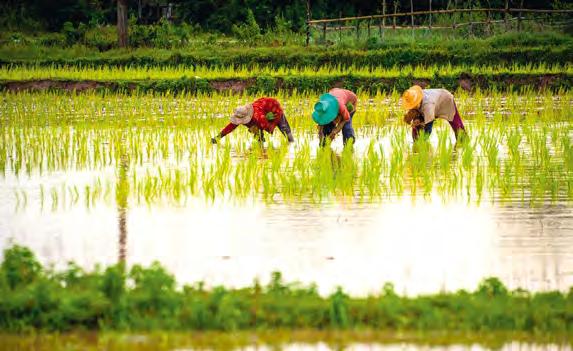

THAILAND TREASURES
As you meander around a local village that’s only a 5-minute trip from the city, you will be in the unique Baan Koh Klang community, Khlong Prasong subdistrict. Experience the simplicity of the pre-dominantly Muslim community’s way of life and the surrounding nature. Take the time to also glide along the quiet of the mangrove forests, local fishing areas, and their nursery habitats. Local foods and crafts include locally-grown Sung Yod rice, long-tail boat miniature models, colourful Pateh cloth and exquisitely painted Batik cloth. The village exudes its rural charms despite its close proximity to the city.
This begins when your body is soothed with the natural hot springs at Wareerak Hot Spring Retreat, Khlong Thom district. The hot and natural water pools will put your mind at ease and improve your overall health. Combine this relaxation opportunity with tasty and healthy food. This journey would include spa facilities such as Nattha Waree Spa, a resort with a network of eight bathing pools at different temperatures, or a natural “hot-tub jacuzzi” from thermal springs like Khlong Thom Hot Waterfall and Krabi salt water hot springs.

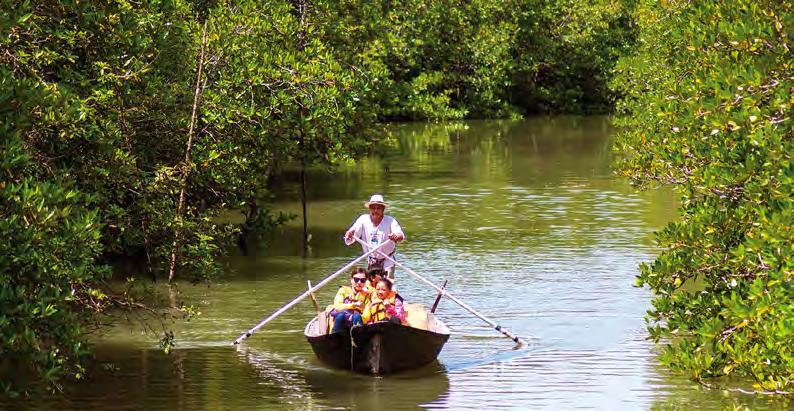
Armed with your enthusiasm, soar past hilltops with three different heights of adrenaline and exhilaration. Surrounded by the local forest, these adventure activities will make your heart beat faster. Enjoy rope climbing, fixed ladder climbing, cycling, a “flying broom,” cliff-climbing and numerous other pursuits. The panoramic view from the highest spot, along with the vastness of preserved forest, will take your breath away.

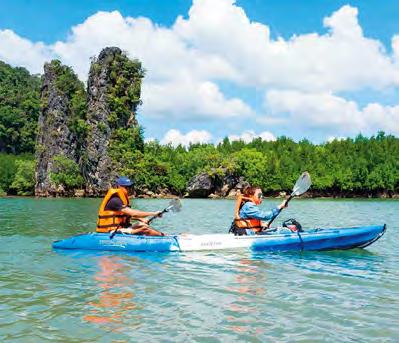
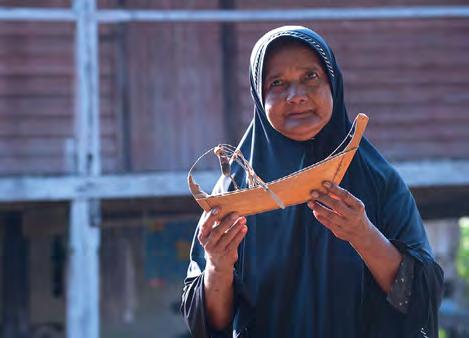
These travel itineraries show Krabi in all its finest through the exploration of the island paradise. The current government tourism campaign, “Amazing Thailand Tourism Year 2018,” reached out to local communities for collaborative initiatives focusing on environmental sustainability, like the orchid-planting activity mentioned earlier, with messages of Thai social and cultural values.
Local communities design, manage, and operate tourism activities, impressing upon visitors and locals alike the values of responsible tourism. With the tourism campaign serving as a guiding force, everyone is encouraged to fully enjoy Krabi’s stunning beauty while protecting its nature sanctuary. Bask in genuine friendliness from the local folks and their natural role as hosts to travellers from all over world. They’ll make sure you find the true wonders of Krabi.
The mangrove trees of Thung Yi Pheng provide a lush landscape, ideal for a meditative ride along the waters.
A village artisan from Koh Klang shows a miniature boat that makes a nice handmade souvenir.
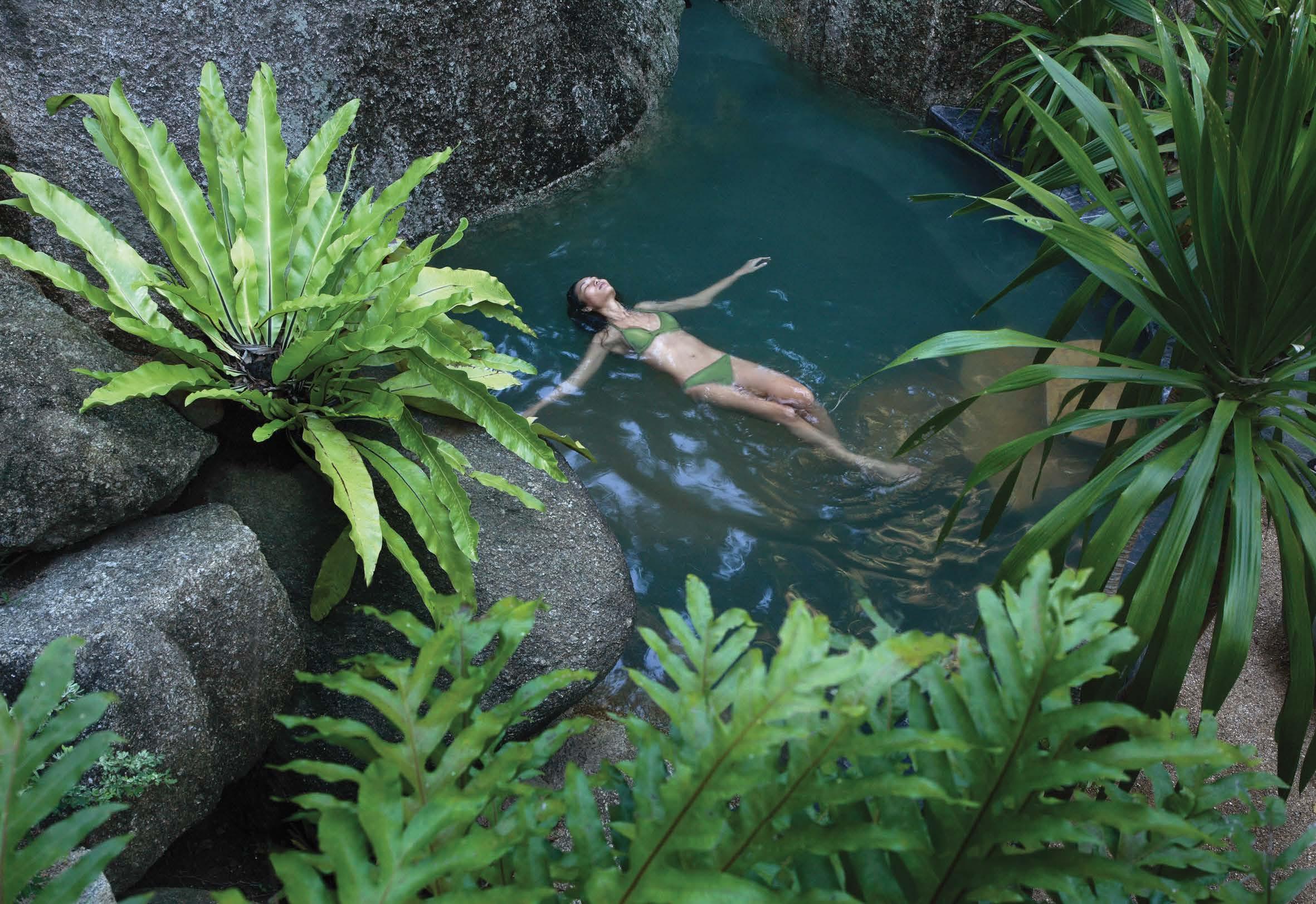
Enjoy an outdoor massage by trained experts at Wareerak Hot Springs Retreat.
Large karst formations along the Laem Sak route.
Krabi offers ecotourism projects that include replanting orchids in the forest.

By wanting auspiciousness from the heavens, the Mon people created a dish meant for the gods that later became fit for royalty. Now this ambrosial dish, Khao Chae, is enjoyed by all.
In Mon tradition, the refreshing fragrant dish Khao Chae (khao, rice in Thai, while chae means to soak) features the purity of jasmine rice infused by floral water with the tasty companions of savoury side dishes – meant for celestial beings during the Songkran rites of the ancient Mon group.
Khao Chae was His Majesty King Rama IV’s favourite and during that era, Yison Phad Waan (sweetened stir-fried eagle ray fish), and Chai Pow Waan (sweetened dry turnips) served as accompaniments. Other side dishes like Hua Hom Yad Sai (stuffed onions), Prik Yuak Yad Sai Moo (green peppers stuffed with minced pork), and colourful vegetables were added in the later years of King Rama V’s reign — making the recipe known as “Khao Chae Savoey” the Royal Khao Chae. After the passing of His Majesty in 1910, the Khao Chae menu was shared with the rest of the kingdom, in many provinces in the central part of Thailand and eventually become the sought-after summertime menu, particularly during Songkran. The recipe we see these days is the adapted version and is a specialty dish in menus belonging to old-style restaurants. Apart from the gustatory satisfaction and the aromatic fragrance of the cooling rice soaked in the local floral water, each accompanying side dish is crafted marvellously, with unique and sophisticated ingredients and methods. The way to prepare Khao Chae is thus a vibrant and enjoyable process, just like its gratifying results.
TIP
Cook rice (jasmine rice is highly recommended for its ideal texture and gentle fragrance) until it softens. In a rice cooker, this should be a few minutes before it goes off. Drain any remaining cooking water from the rice before pouring in cold water and do it again until the rice cools down. Later, scrub the rice gently with both hands to rinse off any starch and let it dry by using a straining or cheese cloth. The next step is a little more complex and requires the Thai aromatic candle. Smoke the rice in a container with a lid. Put the lit candle in. Its smoke releases a fragrance that should be that of Thai flowers like a light jasmine and cananga. Keep the candle in and close the lid as it snuffs itself out with the absence of oxygen. Leave it overnight to rest.
Kapi Thod (deep-fried shrimp paste balls); a key side dish.
Pound garlic, coriander seeds, sliced shallots, sliced Chinese ginger, and sliced lemongrass together before adding shrimp paste.
Add catfish meat and more shrimp paste.
Stir-fry all the ingredients together until they become cooked and dry. Knead into balls, soak them in eggs and fry to golden perfection.
Hua Chai Pow Waan (sweetened dry turnips)
Clean and slice the dry turnips.
Saute sliced onions in the pan and add the dry turnips. Continue cooking them together, adding palm sugar and continue frying some more.
Add an egg and continue frying. Make sure that it doesn’t dry up since it can harden the turnips and impact the taste.
Prik Yuak Yad Sai Moo (green peppers stuffed with minced pork)
Mix the minced pork with garlic, peppers and season with sugar and fish sauce for a deeper savoury taste.
Cut open the green peppers, clean out the membranes and seeds inside, and stuff it with the marinated pork mixture.
Steam in high heat, wait for about 15 minutes until the green peppers change colour.
Soak them in egg and fry to golden perfection.
Fresh Vegetables
Khao Chae should be accompanied with fresh vegetables to cut the greasiness of fried items. Prepare vegetables such as Chinese ginger, thinly-sliced green mangoes, thinly-sliced fresh turmeric, cucumbers, spring onions and do carve them for an impressive presentation.
Place the smoked rice in a bowl and pour the cool flower-scented and fragrant water in before adding ice (flakes). First, taste the side dishes separately. Follow this by having the rice and a taste of the scented water.
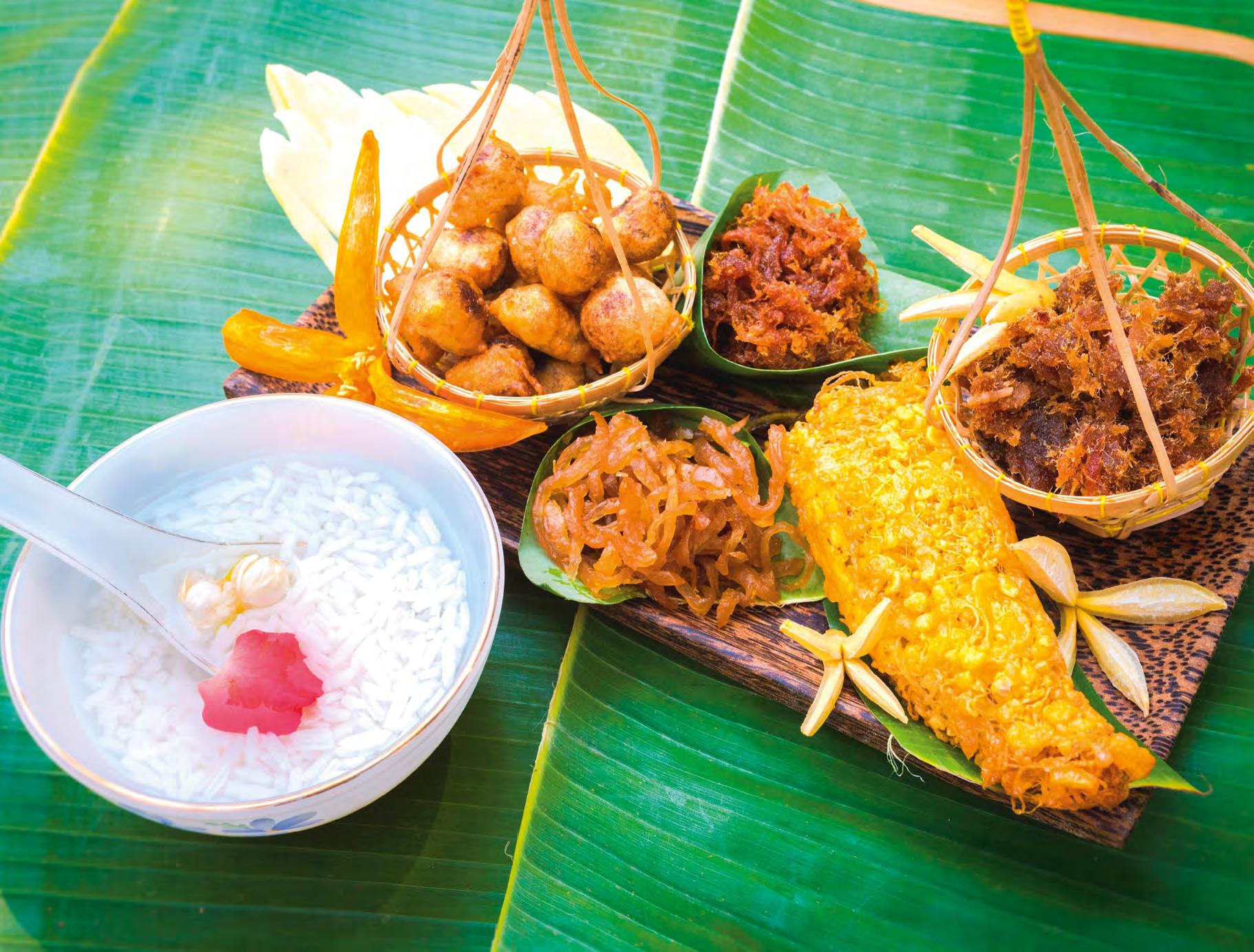

In Thailand, the watermelon is easy to find in any open air market, supermarket or at any fruit cart on the street. You can find several watermelon varieties available. The four most popular ones in Thailand are Jintara (recognisable with its striped skin and oval shape and red flesh) the Torpedo (a large oval shape, with a crisp flesh and fewer seeds), Kinnaree (marked by a dark green skin, round shape and red flesh) and Nam Phueng (called honey, aromatic and yellow, with a crisp bite.)
Another great way to enjoy the thirst-quenching properties of the watermelon is to gulp down a shake, one of the all-time favourite slushy drinks in Thailand. The Thai people have much passion for this juiciest of fruits
and it’s not just appreciated as a sweet treat, but also as a savoury one. At the peak of summer, it’s an ideal accompaniment in the recipe called Phad Pla Haeng Tang U-lit or Phad Pla Haeng Taengmo (Fried Salted Snakehead Fish with Watermelon). This well-known summer dish from the early Rattanakosin era was created when ice was scarce and enjoyed in the absence of refrigeration.
The recipe calls for the flaked meat of fried salted fish that is seasoned with sugar, salt and crispy fried shallots. Watermelon pieces get topped with this fried salted fish and enjoyed in one bite as a snack or mixing the fried salted fish with steamed rice for a light meal. The combination of salt and sweet is a common
The watermelon is the glamour star of summer fruits. On a hot sunny afternoon, the tastiest way to keep cool is to take a bite of a refreshingly cold one.
enough in many cuisines, and this summer treat is no exception.
Some varieties of watermelons come with different sizes of seeds and less flesh, and grown intentionally for their larger seeds. Once separated from the rest of the watermelon, they get washed, soaked in salted water and then roasted to make Guay Ji or Guazi,
one of the most popular snacks in China. These nutty-flavoured seeds can be traced to the Yuan Dynasty and was very common in the Ming and Qing dynasties as well. So enjoy a watermelon in its wholesomeness – take a bite of its crisp juiciness or practise the art of cracking a seed for its nourishing crunch.
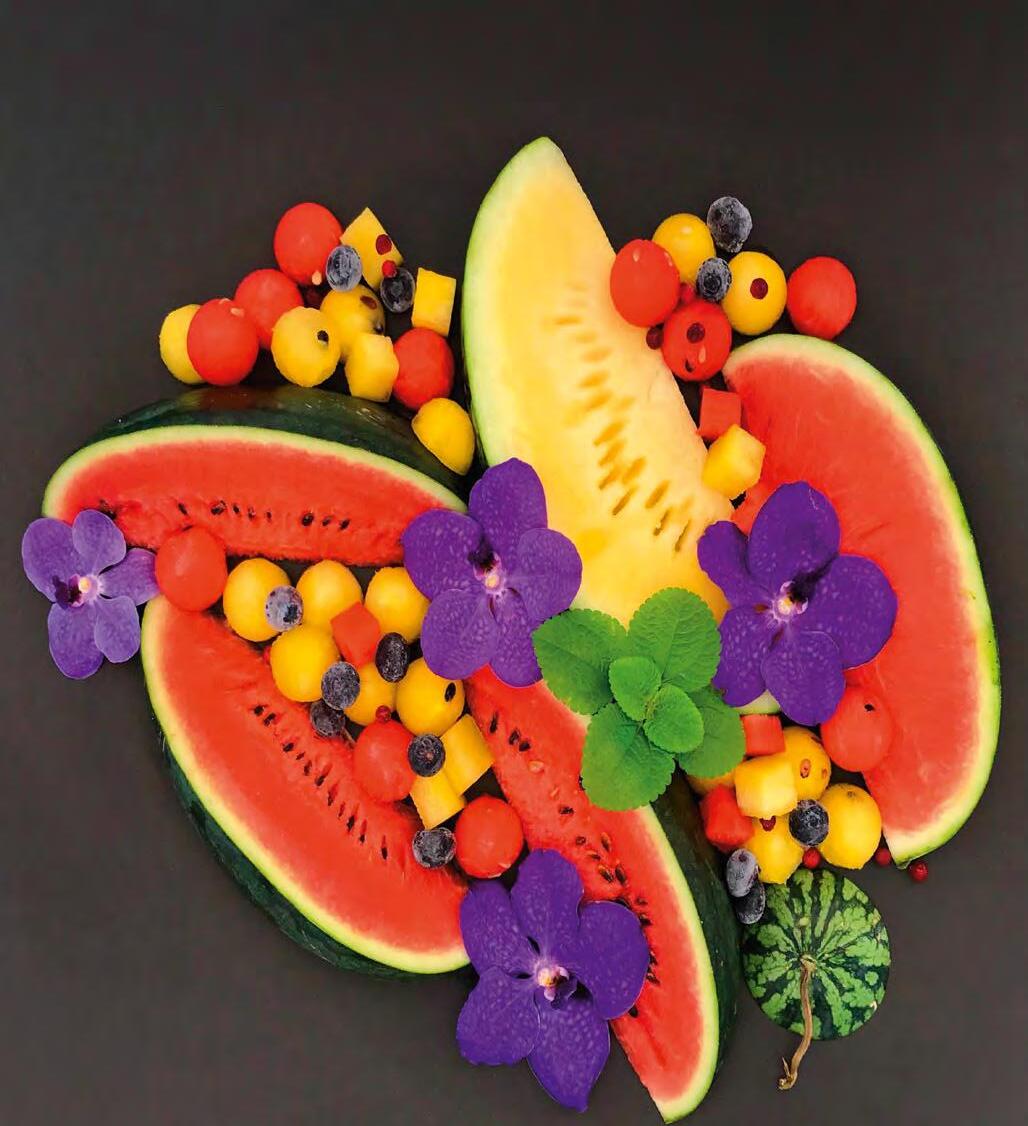








Words Sarita Urupongsa

In the celluloid world, the languages may differ and forms of expressions vary. Yet the magic of cinema binds us all. What’s needed is the hush ambience in a dark screening room and the unfolding of stories in different life journeys. Here, we list independent cinemas in Asia that take on art films and the occasional box-office hits.

L’Étranger Books & Tea is a place where you can linger for hours. Its shoes-off policy encourages neighbourly lounging amid wicker sofas and soft pillows. Named after Albert Camus’s novel “L’Étranger” (The Stranger), the bookstore and lounge has a nightly 7pm movie screening. Guests feel at home in the cosy and small house of rosewood in Ban Aphay just opposite the Royal Palace/Main Street in Luang Prabang. This laidback place is founded by a Québécois filmmaker and her partner in 2011 and has risen to become one of the town’s sanctuaries for restful breaks. You can chill at the 2-storey house with its teas served in a proper pot, delicious Western cuisine, and books that you can both buy and swap. facebook.com/Booksandtea


PHNOM PENH
THE FLICKS COMMUNITY MOVIE THEATRES
Started in 2009 by a New Zealand couple, and subsequently changed hands via a crowdfunding project in 2011, The Flicks have turned into Phnom Penh’s leading art house cinemas. Featuring two locations on Street 95 and Street 136, the Flicks Community Movie Theatres are fully volunteer run, and are the official venues of the Phnom Penh International Film Festival. With only a charge of US$3.50 per day, moviegoers can enjoy the latest blockbusters, classic masterpieces, and documentaries on the HD quality big screen. The profits earned from the tickets help to support social and cultural events in Phnom Penh. A distinguishing feature is a very strict no cellphone policy, and you can get asked to leave if caught. theflicks.asia




BANGKOK SCREENING ROOM
Among the ordinary-looking shophouses and spacious residential homes in Soi Sala Daeng 1, the cinematic goldmine of the Bangkok Screening Room (BKKSR) tucks itself quietly on the 2nd floor of Woof Pack creative hub. The 52-seating cinema showcases independent movies, classic films and rare Thai masterpieces. The screening programme changes every month, with various themes to suit movie lovers. With a high quality sound and visual system, BKKSR promises the full experience of motion pictures. Adjacent to the theatre is the café, with delicious selections of snacks – bite into some Larb Fries, Spaghetti with Northern Sausage or Sai Ua, a Hendrick’s Tonic, maybe include the popcorn with their unique flavours before entering the cinema. Best of all, drinks from the bar can be taken into the theatre. bkksr.com




Hong Kong’s only arthouse cinema, Broadway Cinemathèque, runs indie movies and numerous film festivals. It also hosts retrospectives of filmmakers such as Francois Truffaut and Yamada Yoji. The Yau Ma Tei venue in Kowloon has often hosted the Hong Kong Asian Film Festival and the Hong Kong Lesbian and Gay Film Festival, along with screening the most diverse range of film selections in the city. The cinema’s Kubrick Café is also a great spot to browse through the wide range of books and magazines about films. bc.cinema.com.hk

Formerly part of the Flicks Community Theatre, Tarantino Movie House parted ways and offers a unique venue as it only shows movies that came out before 2000. Similar to its previous affiliation, ticket prices are US$3.50, along with a meal option and popcorn that claim to be “the best in town.” facebook.com/tarantinomovietheater

Cinema Winehouse may not be that noticeable among the colonial-inspired shophouses along Samsen Road. But the unpretentious venue combines a brunch spot, wine bar, and laidback upstairs lounge that screens mainstream classic films from around the world. A broad selection of wine complements the high quality food. Reservations are recommended in advance on busy nights. Starting in 2018, the cinema will emphasise more indie and interesting themes to their selection. facebook.com/cinemawinehouse
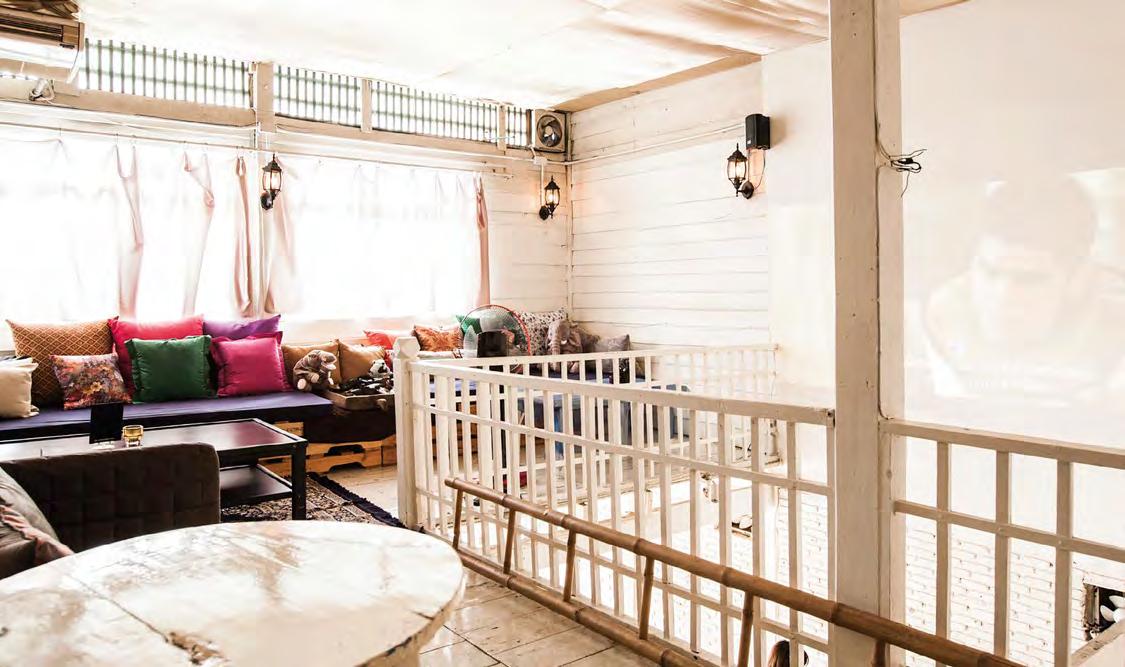
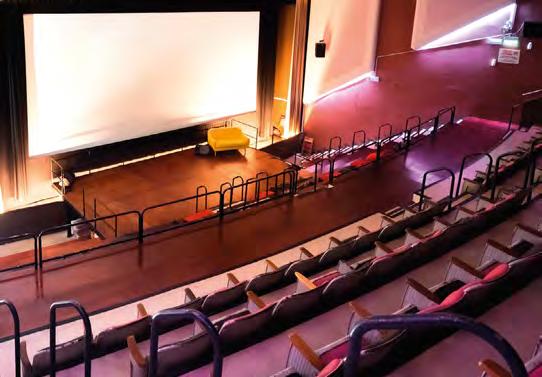

The Projector is an independent cinema resulting from a collaboration of design professionals who renovated two iconic theatre halls. Housed in the historic Golden Theatre, the Project is known for its niche selection of award-winning alternative films and a venue for unique events. The art house consists of “The Green Room,” a hall with 230 seats, “The RedRum” — inspired by the goose-bumps-causing line from Stanley Kubrick’s movie “The Shining,” a casual lounge for events and private screening room, and the foyer café. Differentiating itself from other mainstream cinemas in Singapore, the Projector provides a clean, minimalist, and playful design together with vintage charms like original flip-up theatre seats and wooden armrests. It aims to bring back the old way of going to the movies; along with cultural events and inspiring experiences. Several upcoming movie festivals include the Swedish Film Festival 2018, held for the 3rd consecutive year, and the Polish Film Festival 2018, to be held for the first time. Both events will take place in April. theprojector.sg


CHECKED IN:
SAMUI
Koh Samui continues weaving its island magic on vacationers with ever-increasing options to sleep, relax and dine. Fully experiencing a resort getaway requires sampling as much of the holiday offerings from meals in awardwinning restaurants to spa treatments. We’ve done the research to lessen your guesswork on blissful accommodations, scenic dining and luxuriating spa treatments.
Bottom Privacy and

STAYED: Relaxation begins upon arrival at Koh Samui International Airport and continues twenty minutes later at the Le Meridien Koh Samui Resort and Spa . Unique in its architecture and intimate in its setting, the hotel design is an homage to Chinese craftsmanship with traditional Thai aesthetics that feels like the inviting home of a wealthy merchant. Fourteen villas and sixty three suites spread out surrounded by fragrant trees and verdant tall plants lining the walkways to the rooms, affording intimacy and privacy.
EXPERIENCED: With a continuing nod to feng shui, one nightly ritual is their 1919 tradition. At the designated time of 7.19pm, guests gather around a wading pool to welcome the night by releasing a krathong – small floats shaped like a lotus – and make a wish, truly a moment to unwind and watch the twinkling lights. And if that doesn’t calm you enough to retire for the night, a free shuttle awaits guests wanting to check out a little more action on Chaweng Beach.
For another version of a magical


night – there is the Ocean Pier, a 120-metre platform gently bobbing on the water with views of fishing boats on the Gulf of Thailand. On serene mornings you can feed the fishes or practise yoga poses – but a sundowner marks the best way to end the day.
A Starlight dinner is available, a private dining setup where a curtain of lights gives you privacy from the rest of the world.
Additional relaxation also comes with the hotel’s spa that evokes a cave, with muted colours and dramatic arches leading to zen massage rooms and walls cascading with water. Jacuzzi baths face waterfalls as natural birdsong lend to the atmosphere. Other pursuits at the hotel include cooking classes and learning to make Thai food in Samui is a treat with fresh ingredients, and hands-on instructions from the hotel chef in making classics like Green Curry Chicken, or Tom Yum Gung.
Website: lemeridienkohsamui.com



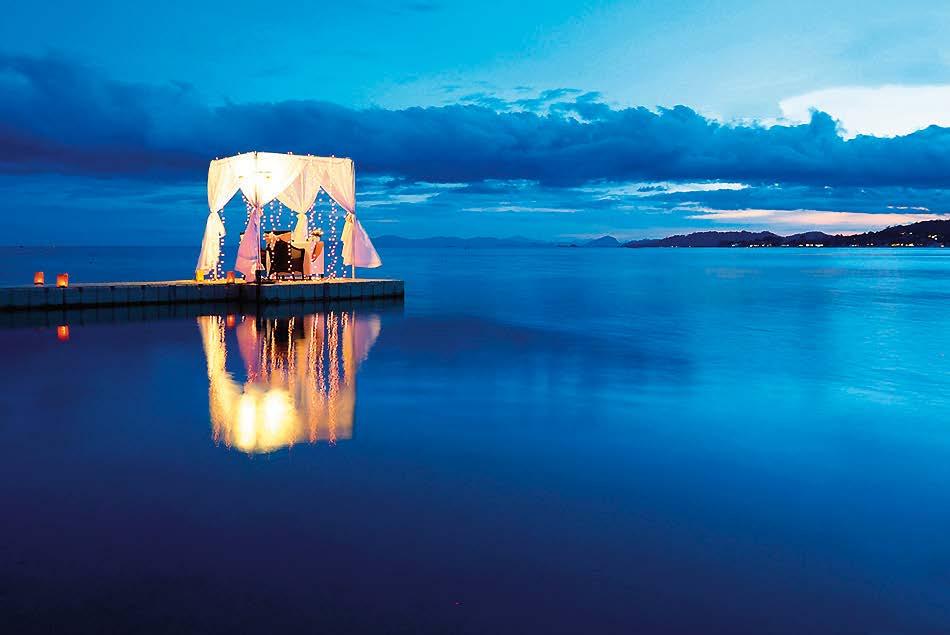


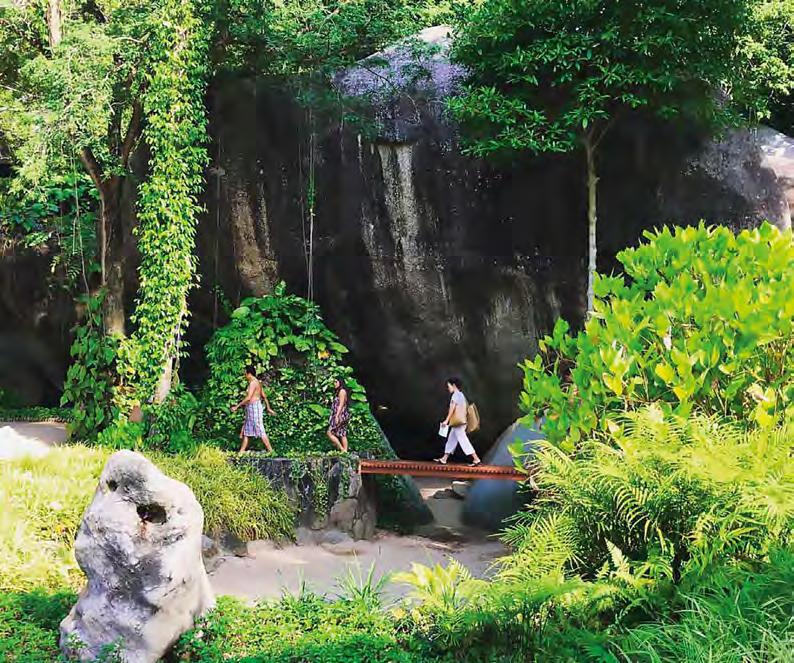
In many ways it takes to bliss out in Samui, doing a spa retreat should be high on the list. When it comes time to further soothe the body and soul, a place like Tamarind Springs Forest Spa achieves it upon first glance of the verdant property and rock formations.
Formerly a jungle, the now pristine and lush environment transforms you to a different realm of calmness. It’s a literal climb to spa nirvana, with massage pavilions spread out at different levels of a tranquil environment lush with trees and flowers and the jewel in the crown – an herbal steam cave.


But as Kanjapha Kitijapirak, the managing director points out – just looking at all that greenery and hearing the birds are already part of the relaxation process. The cares of the world go away as soon as guests tie on the sarong provided by the day spa. There’s reassurance that their massage therapies and wellness treatments balance the physical, mental and emotional wellbeing. There should be no pain, no strong pressure that brings on a feeling of discomfort, she stresses. While massage treatments are based on established principles, certain techniques are structured to address whatever ails a modern lifestyle.
The pathway to all treatments requires a meandering climb pass big stone boulders appearing like little hideaways. The steam cave sits next to a cold dipping pool so guests can alternately sit indoors in the heat, in the engaging outdoors for a therapeutic cold splash in the dipping pool. On hand are scrubs made from ingredients liked crushed sesame, oranges and coffee grinds, all artfully presented. Specialised snacks await guests at the conclusion of the treatments
Clockwise from Top Left
Though a short walk to the treatment areas, guests pass by greenery as far as the eye can see.
After the steam caves: a welldeserved and cooling splash for improved circulation.
Nature provides a meditative view between wellness treatments. Outdoor refreshments include nutritious snacks and herbal drinks.
Exfoliating scrubs made from sesame seeds to orange peels await guests coming out of the steam caves.
Massage areas tucked into greenery and trees, complete with natural sounds of birds singing.
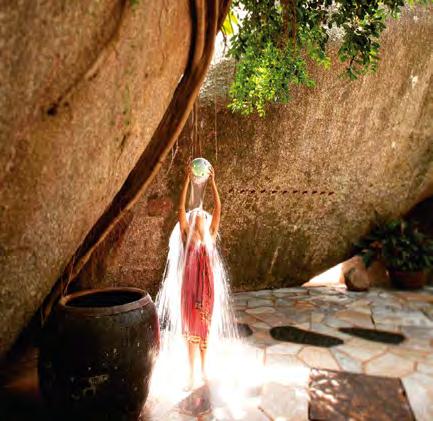


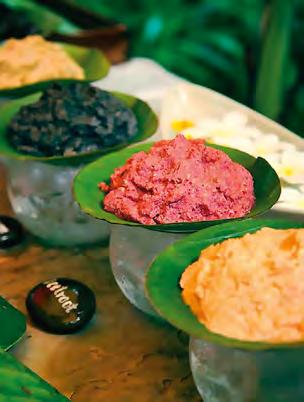
or during contemplative moments. The on-site restaurant has a menu of nourishing meals carefully curated with close attention to the healthful benefits of foods. Aptly described as a “sparadise,” the total package offers the ultimate in how you can feel once serenity is obtained.
Website: tamarindsprings.com







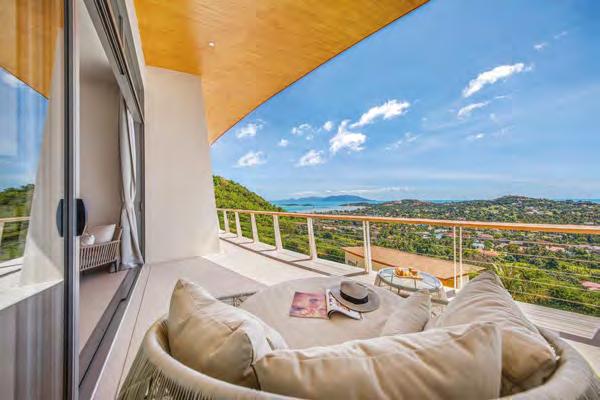

CHECKED IN: SAMUI
Together with Samui’s offer of a good night’s rest and some pampering should include meals with spectacular views. Dr Frogs offers all that as you enjoy the flavours basking in sunsets and a panorama that create true holiday moments. It takes a scenic winding road between Chaweng and Lamai beaches to get to the restaurant. Once there, you’re rewarded with breath-taking sea and coastal views from an open-air dining veranda.
This notable restaurant offers a menu of Italian specialties, as well as Thai dishes. Park yourself at a table and order classic Italian favourites of pasta or pizza. The long-time chef creates his own menu of classics, from antipasti to the favourite tiramisu. The versatile menu of Thai dishes includes the catch of the day, such as a fried pompano, which gets cooked to crisp perfection.
A stalwart in the Samui dining scene, Dr Frogs has the views, vibe and vongole.
It’s not just pastas and pizzas on the menu: the extensive list includes a surf and turf.
The design of the restaurant maximises the water views, with live music on most nights of the week.
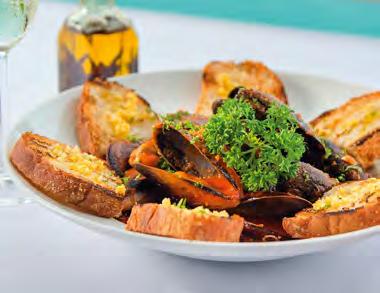
Dr Frogs offers breakfast, lunch, or dinner, with a space large enough to accommodate a party or function. While some items like their breakfast granola is made by a local community, plans are underway to source more ingredients and foodstuff locally. Some tunes with your meals continue the casual beach vibe as

the restaurant also has live music and entertainment. Catch the acoustic talents of Oliver Jones and Nok, two separate and popular acts who are there every week. Reservations are a must at Dr Frogs to ensure the best spot and views in the house.
Contact: drfrogs.com
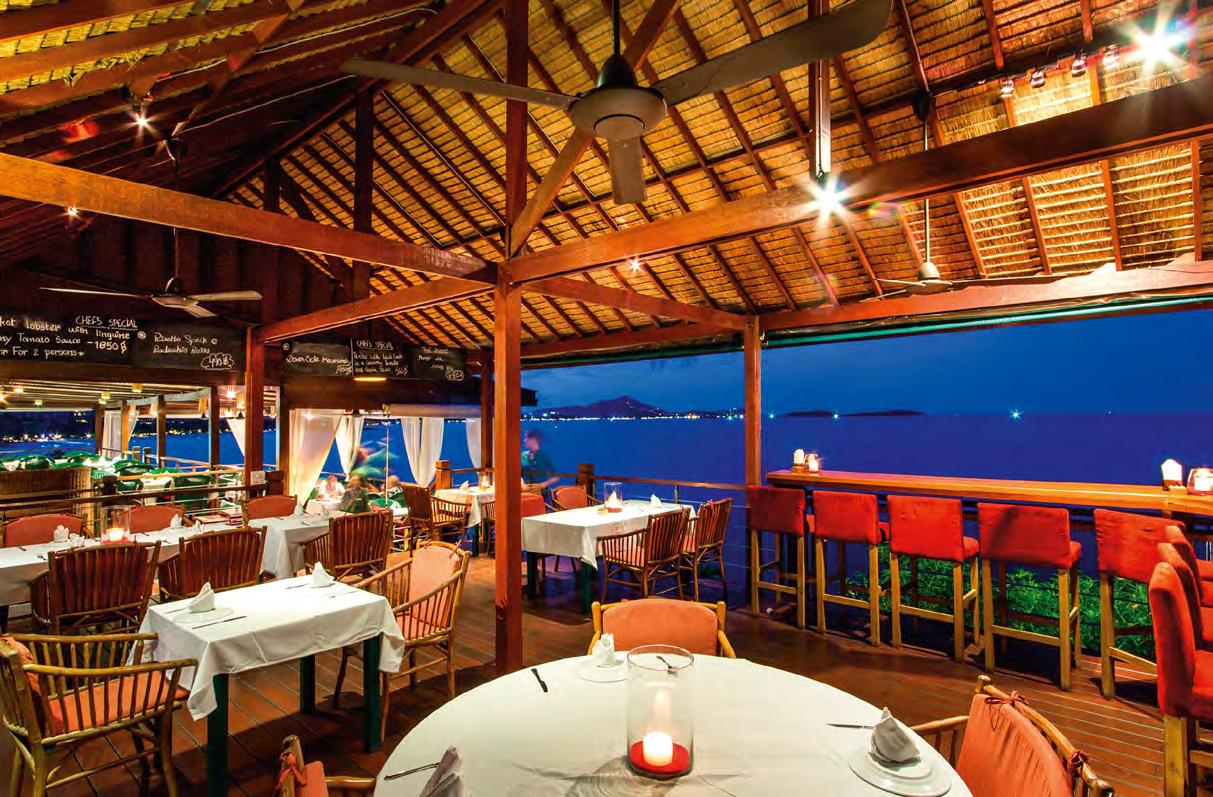


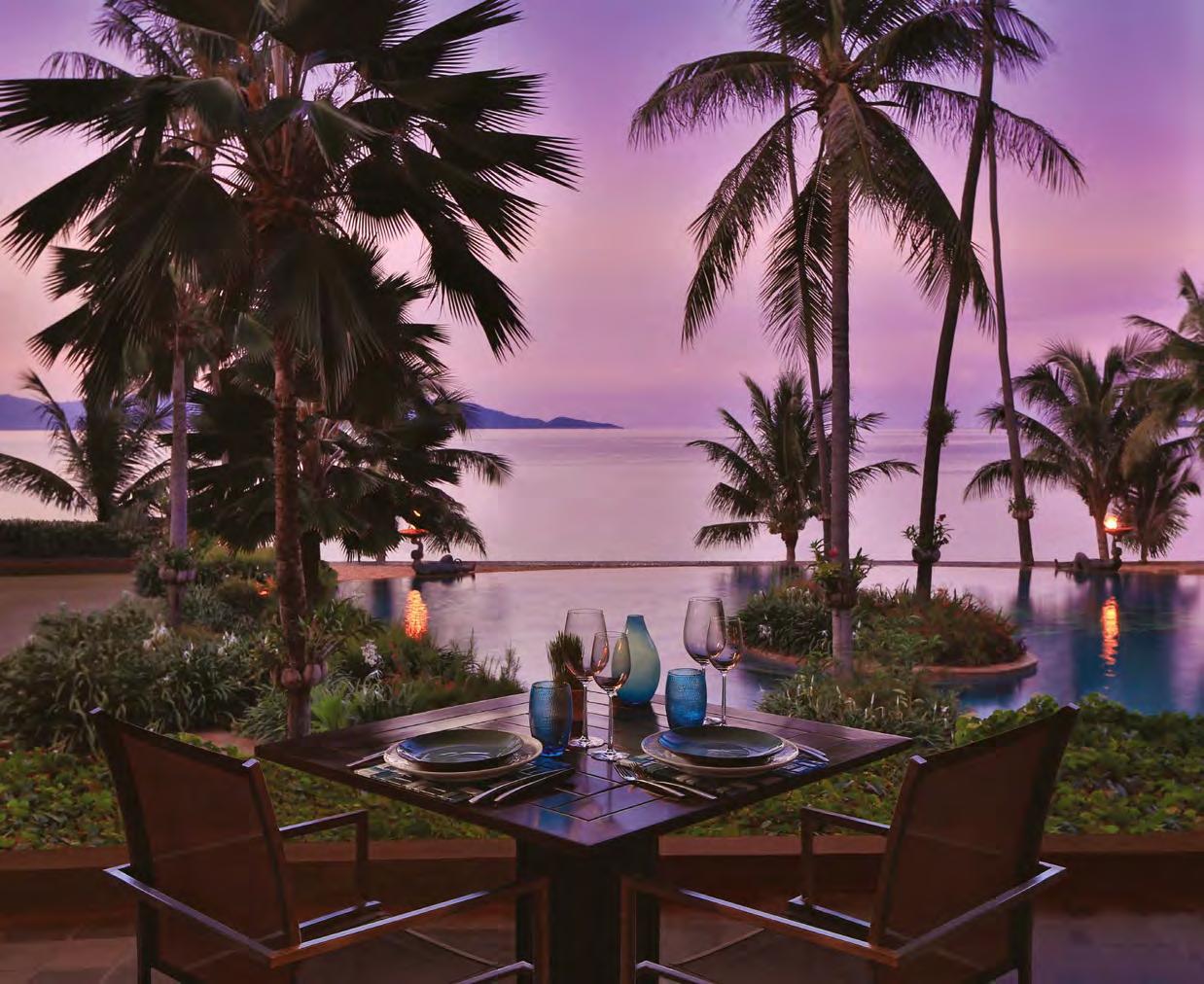




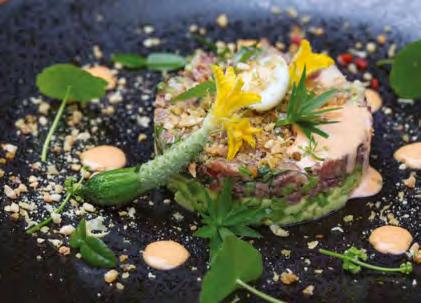


Since its debut on vivacious Samui in 2004, The Cliff Bar & Grill has been the must-visit destination for those with an appreciation for high quality dining. The restaurant holds a great number of prestigious awards and recognition, including Thailand Tatler’s Thailand’s Best Restaurants (2017). Blessed with unobstructed views of the serene Gulf of Thailand, the restaurant boasts the reputation of all-day dining destination led
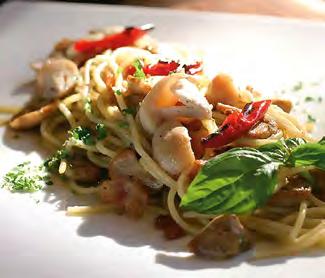


by executive chef Sergio Martelli, with extensive menus from fabulous tapas to noteworthy Mediterranean dishes. Piri Piri Chicken is the house specialty done on a chargoal grill, while only the freshest fish are used for their seafood platter. They don’t compromise on their beef either, with the best brought in from King Island in Australia. Inspiration for the menu hails from Portugal, Spain and Italy; with many of the classics and familiar tastes expertly executed. Vegetables are organically grown with fresh herbs coming from their garden.

Easily found between Chaweng Noi and Lamai, the restaurant is just minutes away from Crystal Beach/Silver Beach whose inviting shoreline beckons from the dining terrace itself. With such unrivalled views and a sophisticated menu, booking is a must.
Contact: thecliffsamui.com
Always make room for dessert as The Cliff features a chocolate brownie cake.
Pasta inspired by the true flavours of Italy have been a mainstay on the menu.
Grab a chance to gaze at the view of Silver/ Crystal beach with your meal.
Seafood Platters can be enjoyed with wine from an impressive cellar.
Meats imported from Australia and New Zealand, grilled expertly.







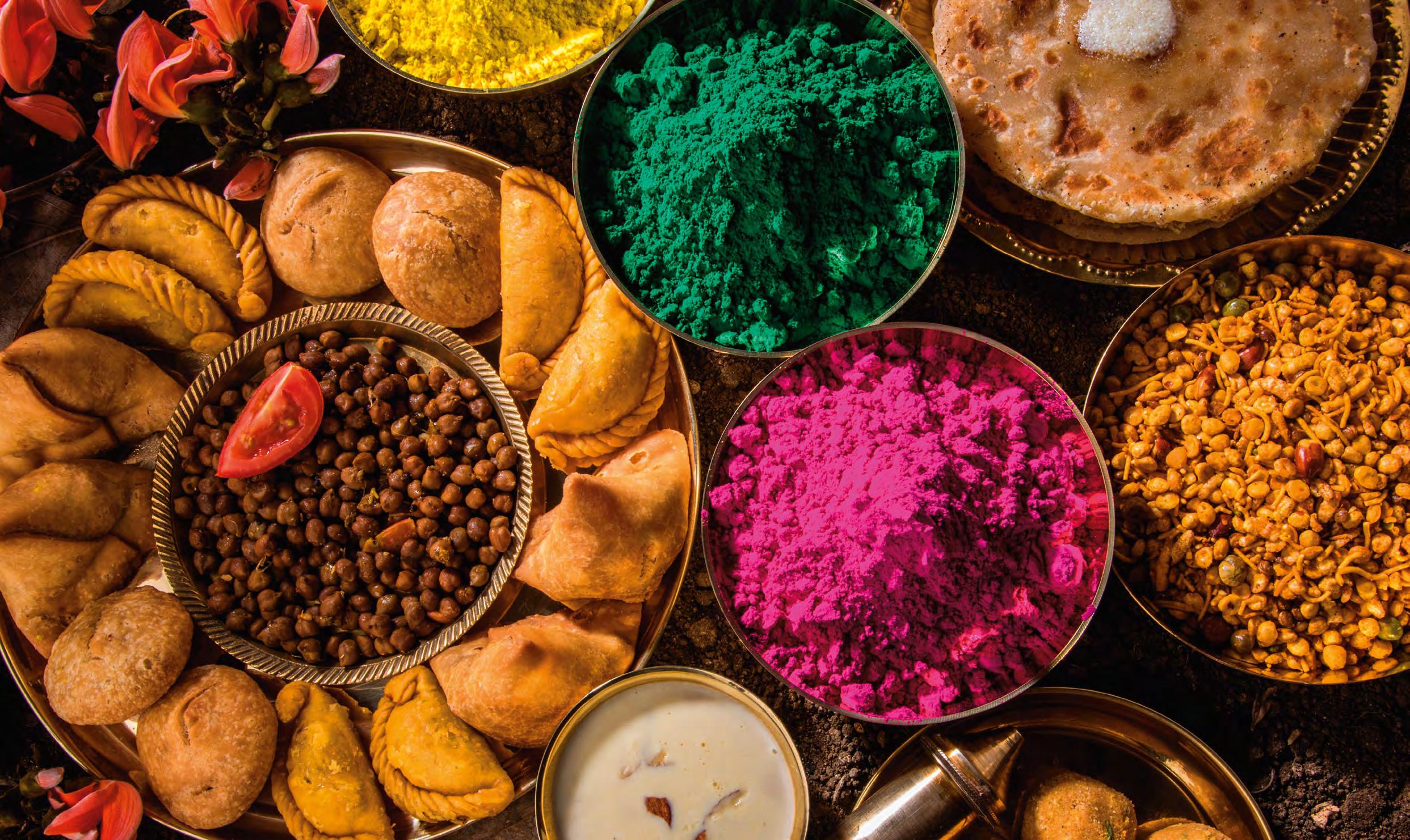
The advent of spring is marked with colourful celebrations of Holi across India. Prachi Joshi takes you on a journey to explore its festive foods.

s winter wanes, India gets ready to welcome spring with much fanfare. From burning bonfires, to the fun and frivolity of colouring each other with gulal (coloured powders), joy and merriment mark the celebration of Holi all over the country. In fact, in Northern India, Holi is a bigger festival than even Diwali (the festival of lights considered as one of the most important holidays in India.)
Holi is celebrated over two days. The first night is Holika Dahan or Chhoti Holi when people gather around bonfires, perform rituals, and symbolically burn evil. Legend has it that the demon witch Holika was burnt to death by Lord Vishnu. The act of lighting bonfires symbolises this victory over evil. The next day, is known variously in different parts of India as Holi, Rangwali Holi, Dhulivandan, or Phagwah.
This is the day when almost every street in India turns into a colourful party. People smear each other with colours and pelt waterfilled balloons, while kids run around squirting coloured water from plastic pistols. After spending the entire morning getting their faces painted in rainbow colours, everyone retires home for a long bath, followed by a huge feast. Because where there is an Indian festival, feasting goes hand in hand.
Holi is no exception and the sheer variety of food – both savoury and sweet – made across India is quite mindboggling. Here are some of the most popular Holi foods.
Top
A gujiya may resemble a savoury samosa in appearance, but is actually a sweet dumpling.
Bottom The diamondshaped shakarpare and deep fried snack.
Opposite Page Dahi bhalle, a popular snack provides a nice salty contrast to the sweetness of other Holi snacks.
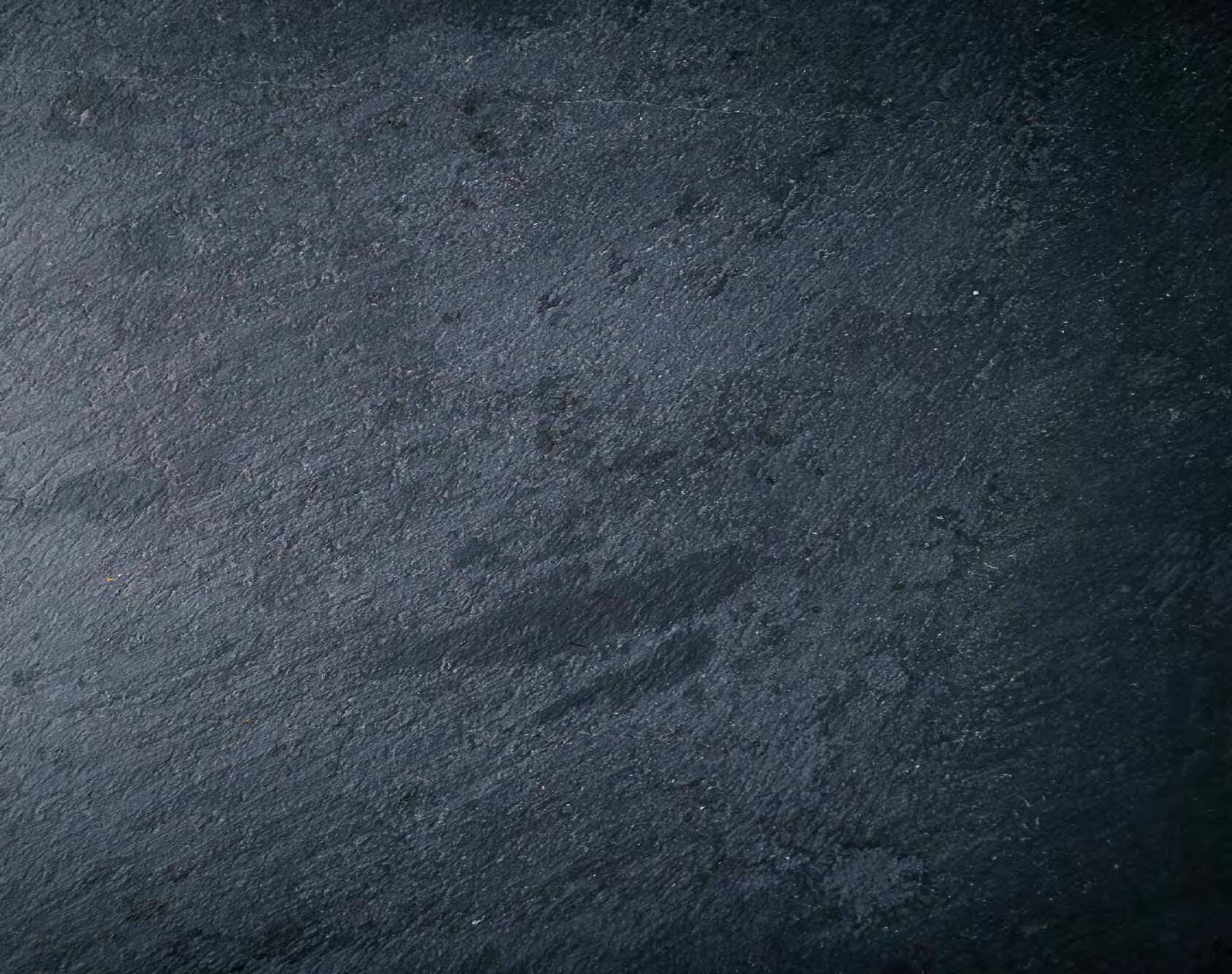
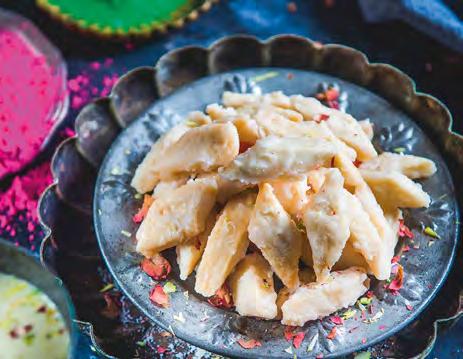

The most symbolic of festive foods made for Holi, especially in North India, is gujiya – a decadent sweet dumpling of sorts. Pastry sheets are made with refined flour and semolina. These are filled with a sweet mixture of sugar, dry fruits, and khoya (milk solids made by heating whole milk for several hours in an open iron pan till it’s thickened). The dumplings are folded over to form a semicircle and its round edge is twirled to form a serrated design. The dumplings are then deep-fried and often also dipped in sugar syrup. In Maharashtra state, these are called karanji and contain a mixture of coconut and jaggery (a traditional cane sugar) instead of the dairy product of khoya.
Sweet shakarpare or savoury namakpare are also quite popular as Holi snacks. A mixture of refined flour, semolina, ghee, milk, sugar and salt is kneaded together to form dough. This is then rolled out into a disc and
diamond-shaped shakarpare are cut out, which are then deep-fried in ghee or oil. For shakarpare, some jaggery may also be added to increase the sweetness or they may be rolled in powdered sugar. Namakpare are the savoury version where sugar is replaced with spices such as cumin, caraway seeds, and occasionally even chilli powder. Both shakapare and namakpare are made in bulk, as they stay fresh for several days, making these addictive snacks a favourite teatime accompaniment even after Holi fest. These are typically made in Gujarat and Maharashtra states.
DAHI BHALLE
To counter the sugar overload, dahi bhalle are often brought out. This is a chaat preparation made of fried lentil balls served with thick beaten yoghurt. The dish is also laced with chutneys – sweet and sour chutney made from tamarind and jaggery, and spicy chutney made with chillies and coriander or mint.

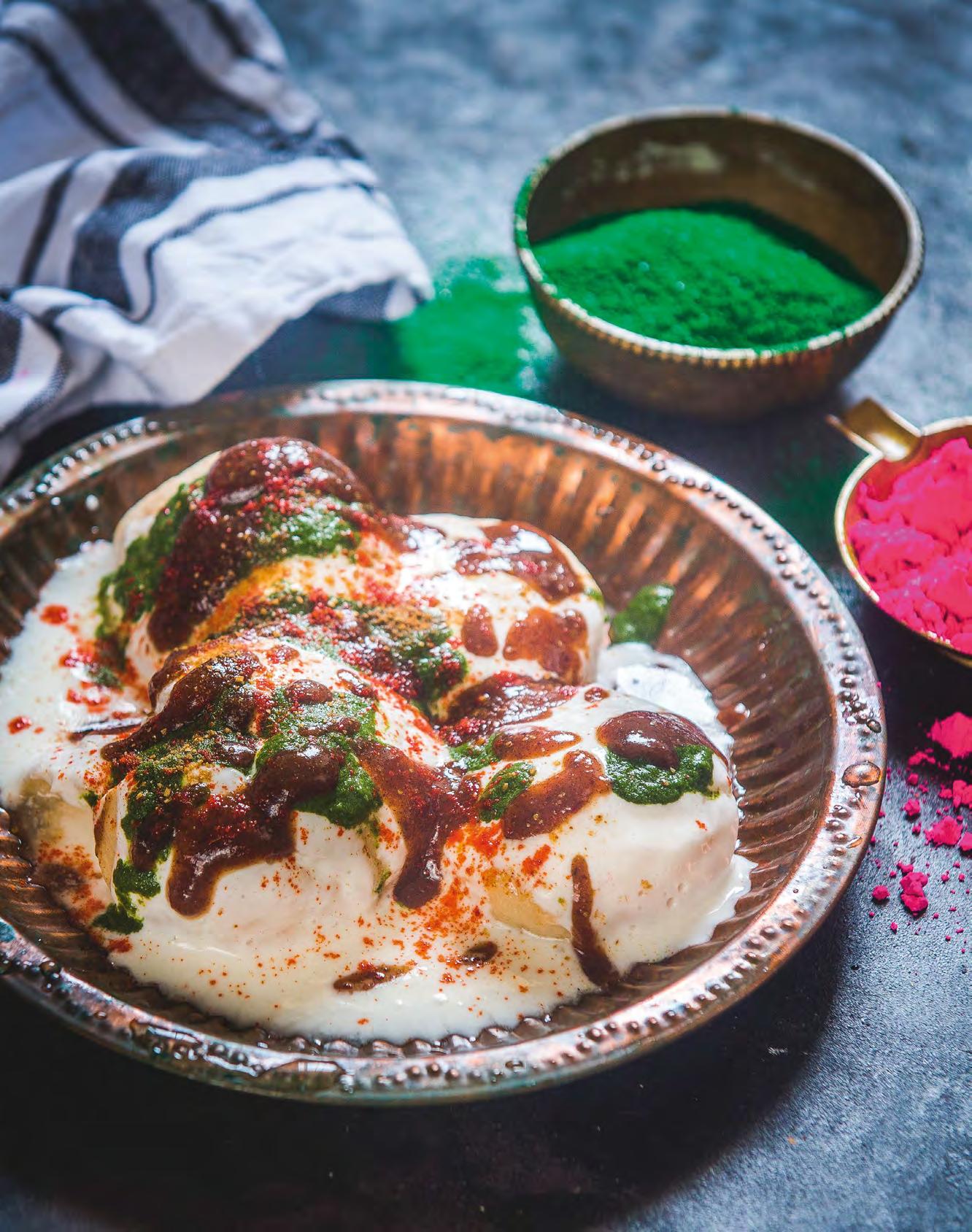
Right
Often associated with the Holi fest is Thandai, a cold drink made fragrant with spices and nuts, such as saffron and cardamom.
Bottom
The sweet flatbread, Puran Poli, gets folded into a treat made during special festivals like Holi.
One of the most popular drinks during Holi is bhang thandai –sweetened yoghurt lassi spiked with very small quantities of marijuana. The buds and leaves of cannabis are crushed into a green paste (called bhang goli) and added to the lassi, which is a mixture of milk, sugar, dry fruits, and spices (saffron and cardamom are most common) to make bhang thandai. It gives you a pleasant high and brings to mind all those Bollywood songs – from Rajesh Khanna singing “Jai Jai Shiv Shankar” (invoking the cannabissmoking Lord Shiva) to the illicit
It gives you a pleasant high and brings to mind all those Bollywood songs – from Rajesh Khanna singing “Jai Jai Shiv Shankar” (invoking the cannabis-smoking Lord Shiva) to the illicit crooning of Amitabh Bachchan in “Rang Barse”.
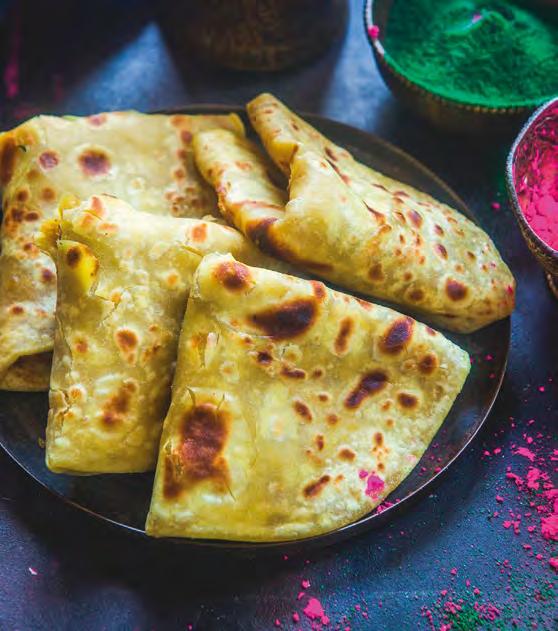
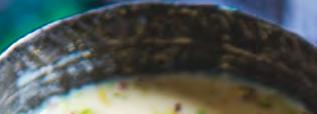
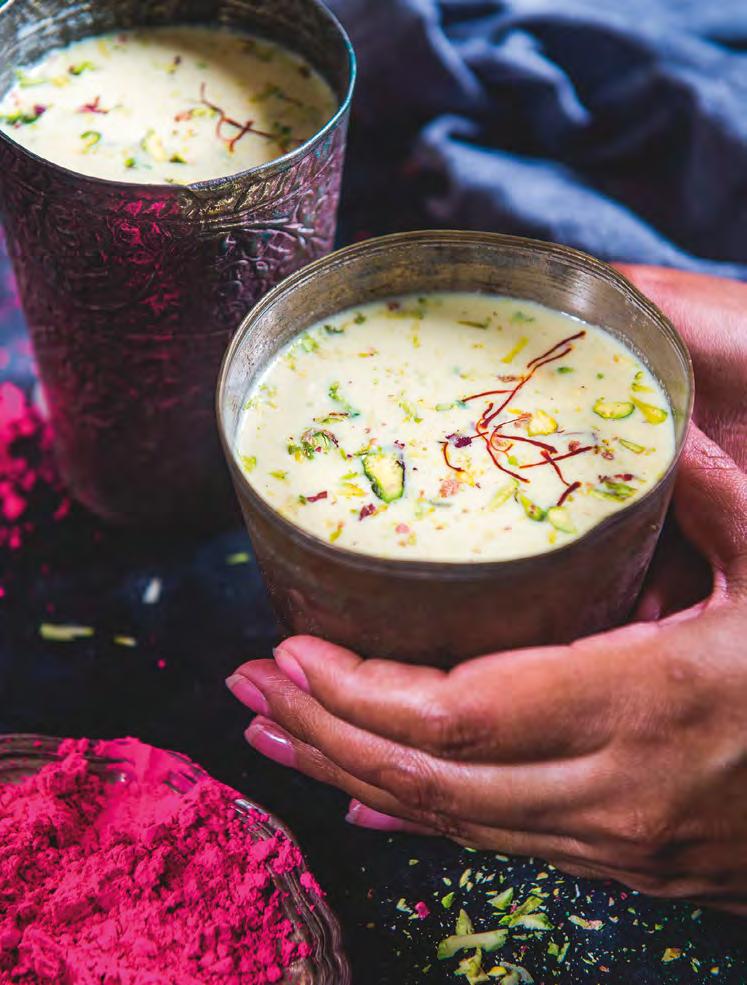
crooning of Amitabh Bachchan in “Rang Barse”. Of course, thandai can be made without adding the bhang, but where’s the fun in that? This drink is particularly popular in the northern states of Rajasthan and Uttra Pradesh.
PURAN POLI
In Maharashtra, puran poli is the staple Holi food. Jaggery and split yellow gram lentils
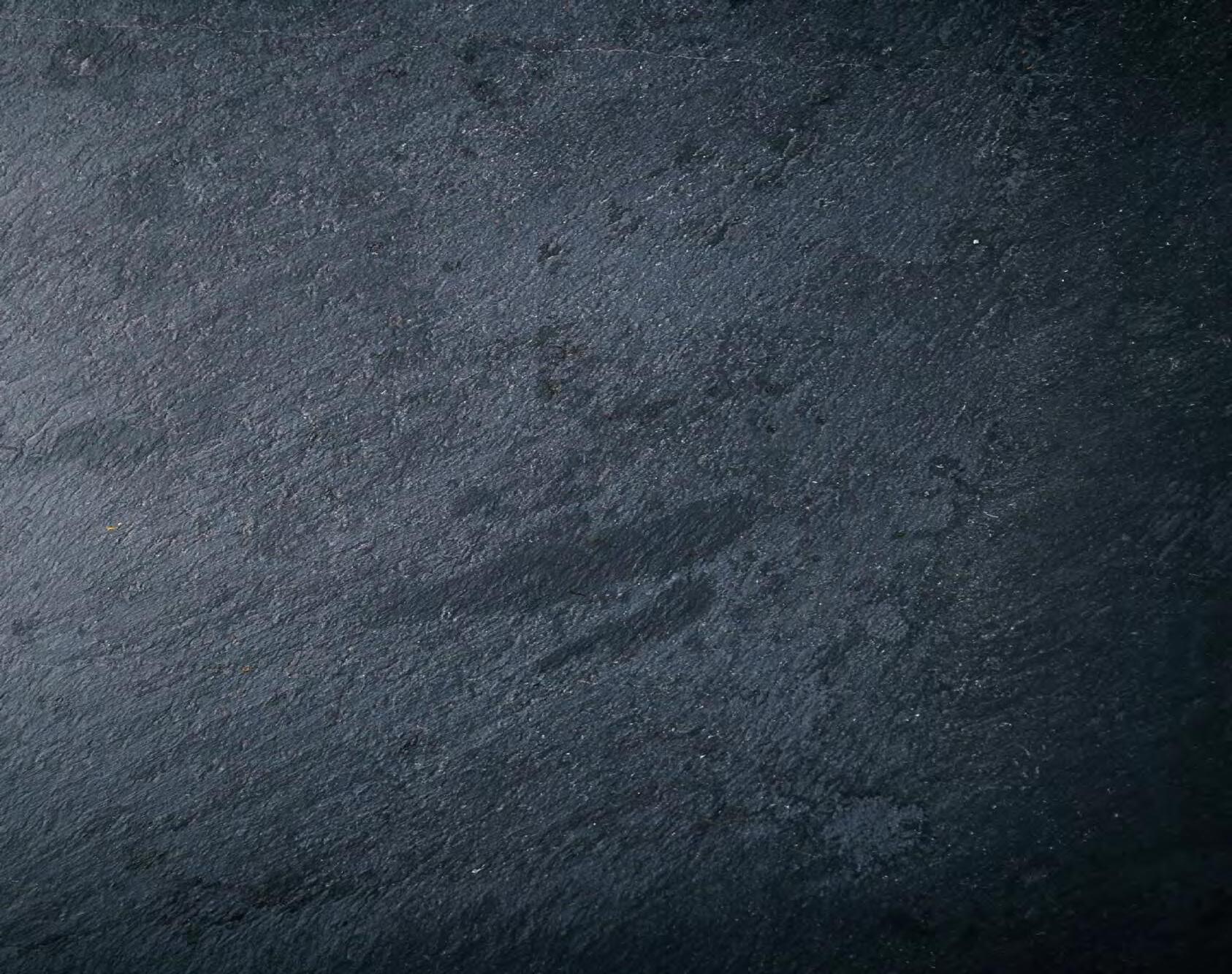
are cooked together to form a sweet paste, which is flavoured with cardamom and nutmeg. The paste is then filled into a wheat flatbread, which is roasted on a pan. The puran poli is usually served with a generous dollop of ghee and a bowl of plain milk to dunk the flatbread. Another accompaniment to this sweet preparation is a thin and spicy lentil curry.
Holi falls on March 1st and 2nd this year. If you’re in India, don’t miss trying out some of these festive sweets, most of which are made as special treats for Holi.







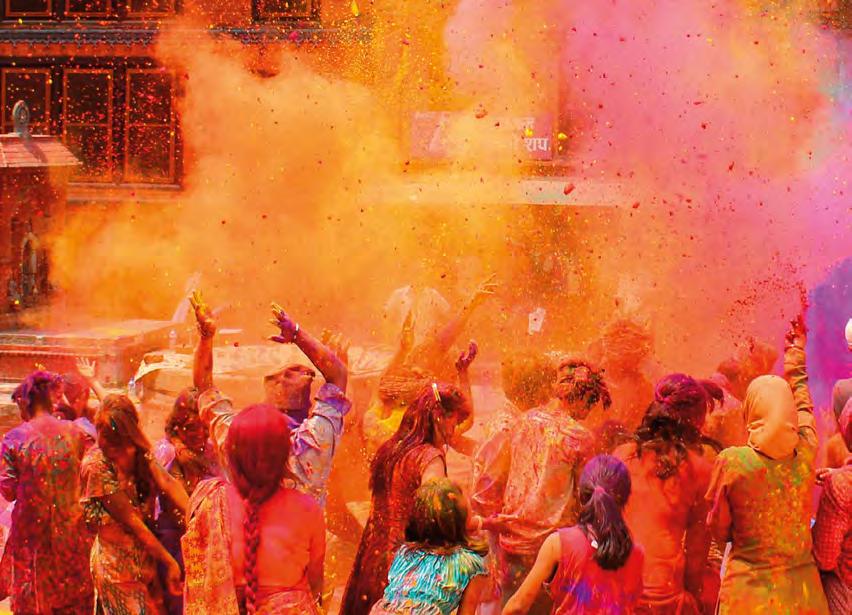
เมื่อลมหนาวพัดผ่านไป ก็ถึงเวลาแห่ง
การเฉลิมฉลองเทศกาล “โฮลี” ถ้าจะ
ว่ากันตามจริง เทศกาลโฮลีของชาว อินเดียทางตอนเหนือดูเหมือนจะยิ่งใหญ่ กว่าเทศกาลดิวาลีเสียด้วยซ�้ า
เทศกาลโฮลีฉลองกันสองวันสอง คืนติด ในคืนแรกหรือ โฮลิกา ดาฮัน ผู้คนจะมารวมตัวกันรอบกองไฟเพื่อ เป็นสัญลักษณ์แทนเหตุการณ์ที่พระวิษณุ ได้แผดเผาแม่มดชั่วร้ายโฮลิกา เป็นอีก ครั้งที่ทุกคนก� า ชัยเหนือความชั่วร้าย
ส่วนชื่อของเช้าวันรุ่งขึ้นจะเรียกแตกต่าง กันไปตามสถานที่ของอินเดีย เช่น โฮลี รางวาลีโฮลี ดูลีวันดัน หรือปักวา ท้องถนนทุกสายเปลี่ยนเป็นลานส� า หรับ
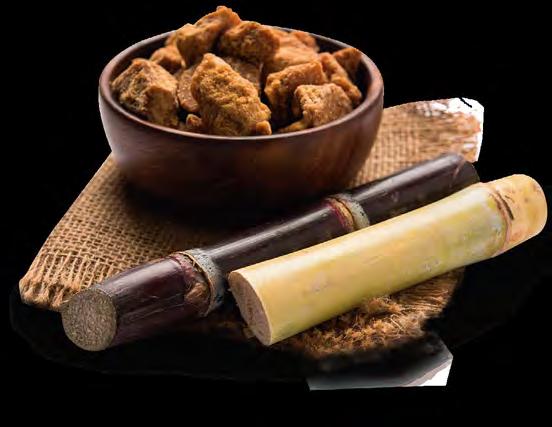
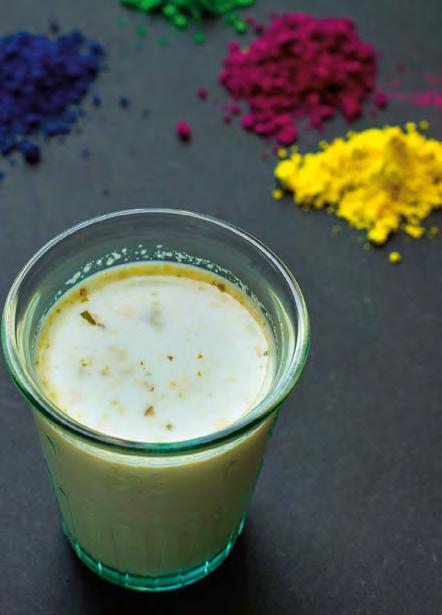















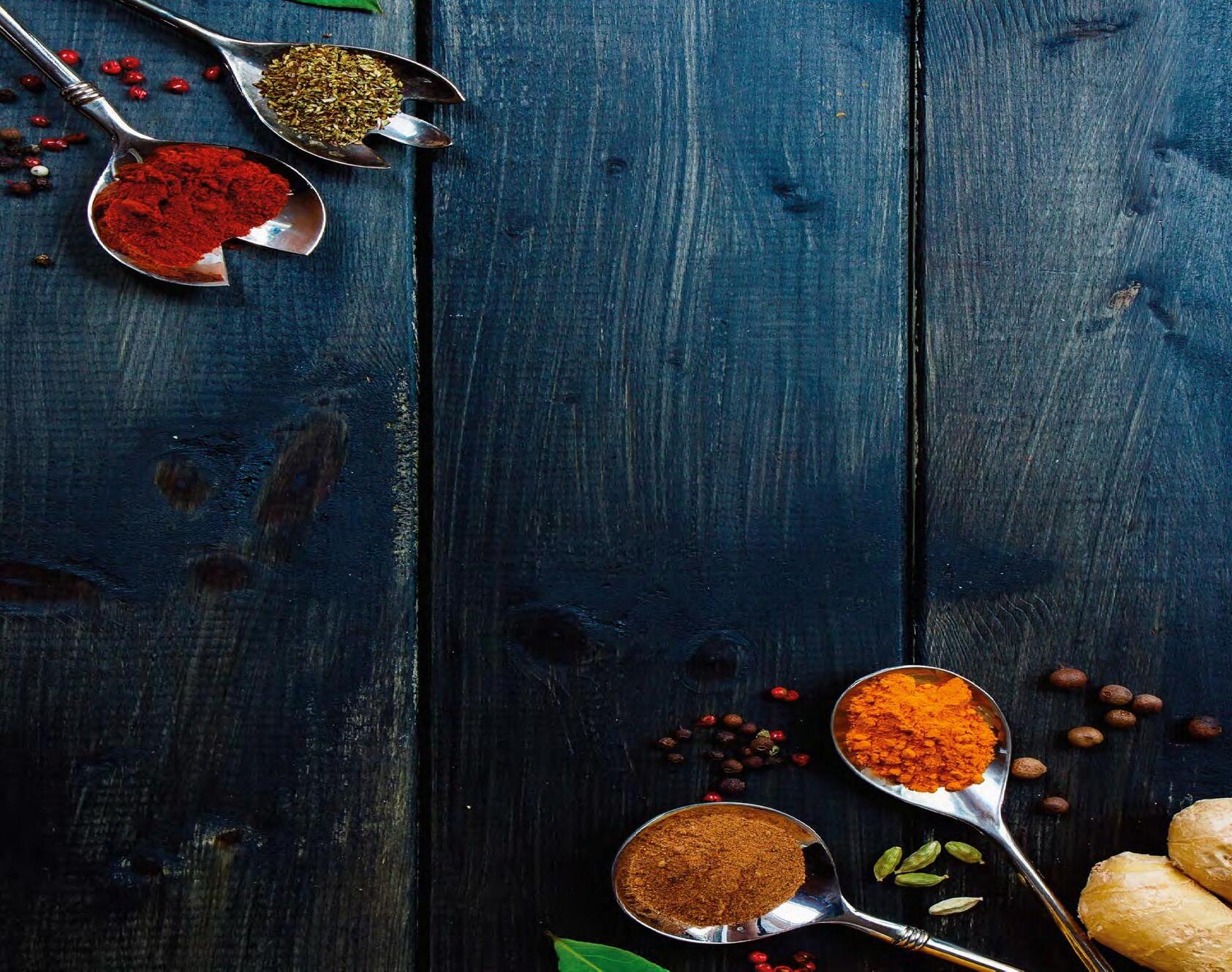
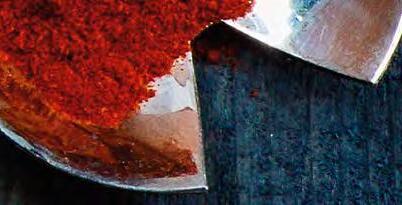
xAfter abandoning an early career using her skills a food analyst, our Top Chef winner finds contentment in a professional kitchen using her talents to create exciting cuisine.
When Chudaree Debhakam started her culinary career at fine dining restaurant, the Water Library at Chamchuri Square in Bangkok, it was a lesson in misplaced confidence. As a trained food scientist, she was quite sure that knowledge would translate to complimentary abilities in the kitchen.
“I was assigned to do a glass of beetroot juice,” Chudaree remembers. Known as “Tam” with friends and family, she recalled the days of being young and naïve. “I ran the beetroot through the juicer and left a visual hell of red splats all over the kitchen wall. The sous chef asked me to leave the restaurant right away. I broke down in tears and vowed that I would learn how to prepare food properly.”
That determination led to New York City and the Professional Culinary Arts programme at the International Culinary Center. After graduation she cut her teeth as a sous chef at Blue Hill at Stone Barns – an acclaimed

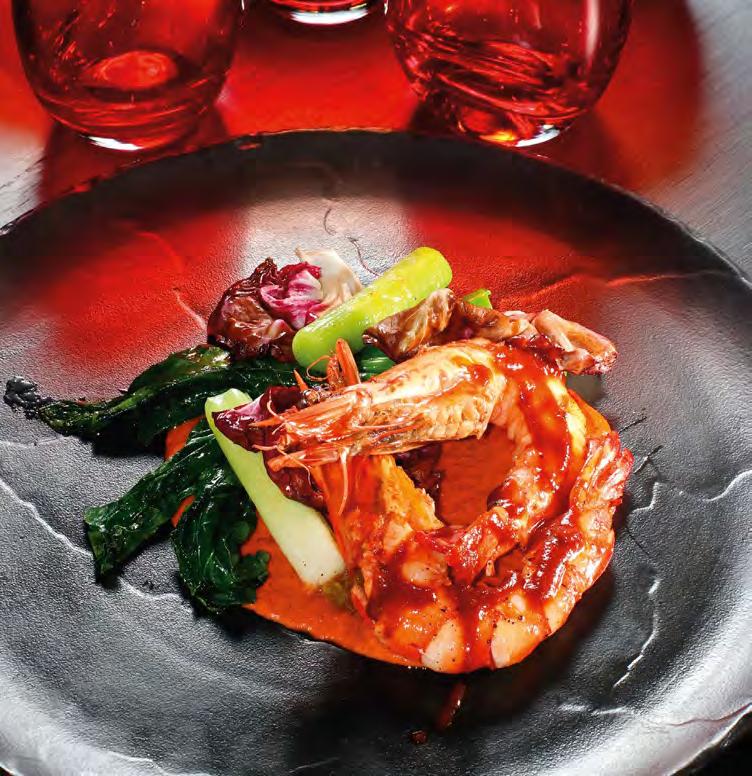
farm-to-table restaurant north of New York City. There she learned to combine the art and science of food preparation. The upscale restaurant’s acclaimed chef, Dan Barber, is recognised as an early practitioner of the farm-to-table movement. When Chudaree came back to Thailand, she felt like she finally returned as a chef.
Last year, she won Top Chef Thailand in its premier series on the One 31 cable network. Battling it out amidst crazed cooking drama, the 24-year-old was the youngest contestant and walked away from the network show with a cheque worth 1,000,000 baht. Like the original “Top Chef” reality show in America, Chudaree competed against 14 aspiring chefs and was grilled by judges like old school chef Willment Leong and Thailand’s celebrity chef Suphamongkol Suphaphiphat.
Life has now taken a worthy turn. Before, scant knowledge made her splatter the kitchen wall red with beetroot juice, but now honed skills resulted in a win of a million baht in a cooking contest. “I was supposed to be a food

analyst working in the laboratory, trying to improve food safety and flavour,” says Chudaree, who graduated in Nutrition and Food Science at the University of Nottingham, England. It can be said that she found the idea of living off a job in food analysis unappealing. Why, just look at what she would deal with: a cold and quiet laboratory with folks in white outfits, for one. Then there are microbes to study and food additives and artificial flavours – no wonder being a food scientist job is not her cup of tea. She was once captain of her basketball team; a fact that wasn’t mentioned on the reality show. The sport encouraged Tam to move quickly in unexpected directions and enjoy chasing a challenge and the ball, of course.
“I followed my passion for cooking and it lead me to other side of the food industry; to a kitchen with a chopping board and heat. I like the ambience of the kitchen,” says Chudaree. “Food analysis is too scientific, leaving no room for art. Cooking is a blend of art and science. In the kitchen, imagination and
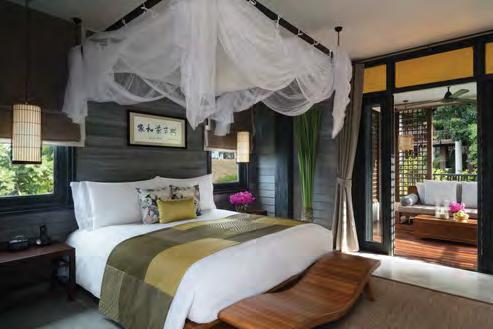



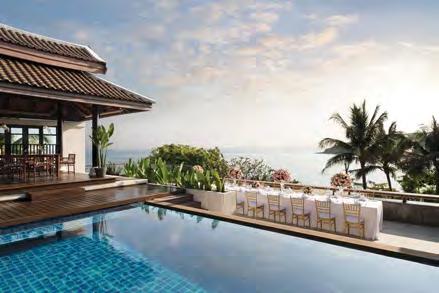

creativity play a part when you want to create a menu. However, you can’t throw whole ingredients into a pot all at once to make a good stock. You need to think scientifically when you start cooking up relevant flavour and body.”
Top Chef showed Chudaree’s imaginative concepts, with liberal views when it comes to cooking. In the final episode of Top Chef Thailand, she duelled with female chef Phattanant Thongthong using everyday ingredients. She added a sizable piece of blood curd into her fish soup. The blood curd was a mistake and considered by judges to be an odd pairing of proteins. Nevertheless, it (Top Chef Thailand) indicated that she is a big fan of underdog ingredients and the unsung hero too – and bold when it comes to pushing an ordinary and overlooked ingredient and giving it a new culinary perspective.
So for the main course, she made “Beef Two Ways,” of beef belly and lengua – beef tongue. “Beef belly is an undercut piece from over the belly of the cow. It’s cheap, tough and chewy,” noted chef Suphamongkol Suphaphiphat, one of the judges who commented on chef Tam’s dish. “If you can make it tender, you’re awarded with big fat flavour. Chef Tam did well with her beef belly,” the judge concluded.


Nevertheless, it (Top Chef Thailand) indicated that she is a big fan of underdog ingredients and the unsung hero too – and bold when it comes to pushing an ordinary and overlooked ingredient and giving it a new culinary perspective.
Top Scarlett Wine Bar and Restaurant, Pullman Bangkok Hotel
Below Chicken Liver Mousse with spiced Tamarind and Grilled Sourdough is presented by Chudaree Debhakam.


She battled against professional chefs and stayed on top with cheap, but not cheap - looking ingredients like “ma kwaen,” a type of black rice with a wild pepper with tangy end taste, “pony fish,” the “katuk plant,” phak waan in Thai and “bai bua bok (pennywort)” –among some of the affordablypriced ingredients.
“I don’t need fancy ingredients to cook up fancy food,” she added. “Local and seasonal ingredients are the best, and the rest is all about the cooking technique.”
At the International Culinary Center, Chudaree, along with her classmates were trained on classic French cuisine techniques with a farm-to-table concept that sourced ingredients from nearby producers. She immersed in traditional cooking techniques and discovered the strong ties between agriculture and cuisine. “We travelled a lot to farms, got exposure to farmer’s markets and talked to local producers and butchers working on the quality of ingredients and flavours. There is a season for everything.”
This chef listens to culinary wisdom to take her cooking to new heights. “For the best in taste, I only buy available ingredients that are in season and hopefully grown in local areas,” confirms Chudaree.
Her tasting menus served on the reality TV show held much promise and the audience got to hear about the ideas and stories behind her dishes. But are those meals that she prepared what she actually makes for herself, we wonder?
“No, I don’t cook such meals for myself,” she affirmed. “At the end of the day, after a long hour of cooking in a kitchen, I will go for nothing fancy – just something simple. A bowl of rice topped with “phad ka phrao moo” (spicy stir-fried pork with holy basil leaves) and a fried egg will do.”
Meanwhile, Chudaree continues travelling around Thailand in search for inspiration and exposure to local taste and flavour, including common ingredients with bold characteristics. With cooking techniques – classic and modern (and even avant-garde), she wants to take a local ingredient to a new taste perspective.
Now at Scarlett Wine Bar and Restaurant, at the Pullman Bangkok Hotel, our Top Chef Thailand winner offered Fah Thai magazine two tasting menus – an entrée of “Chicken Liver Mousse with Spiced Tamarind and Grilled Sourdough” and “Grilled Tiger Prawns with Charred Romesco,” complete with grilled greens and a prawn reduction as a main course.

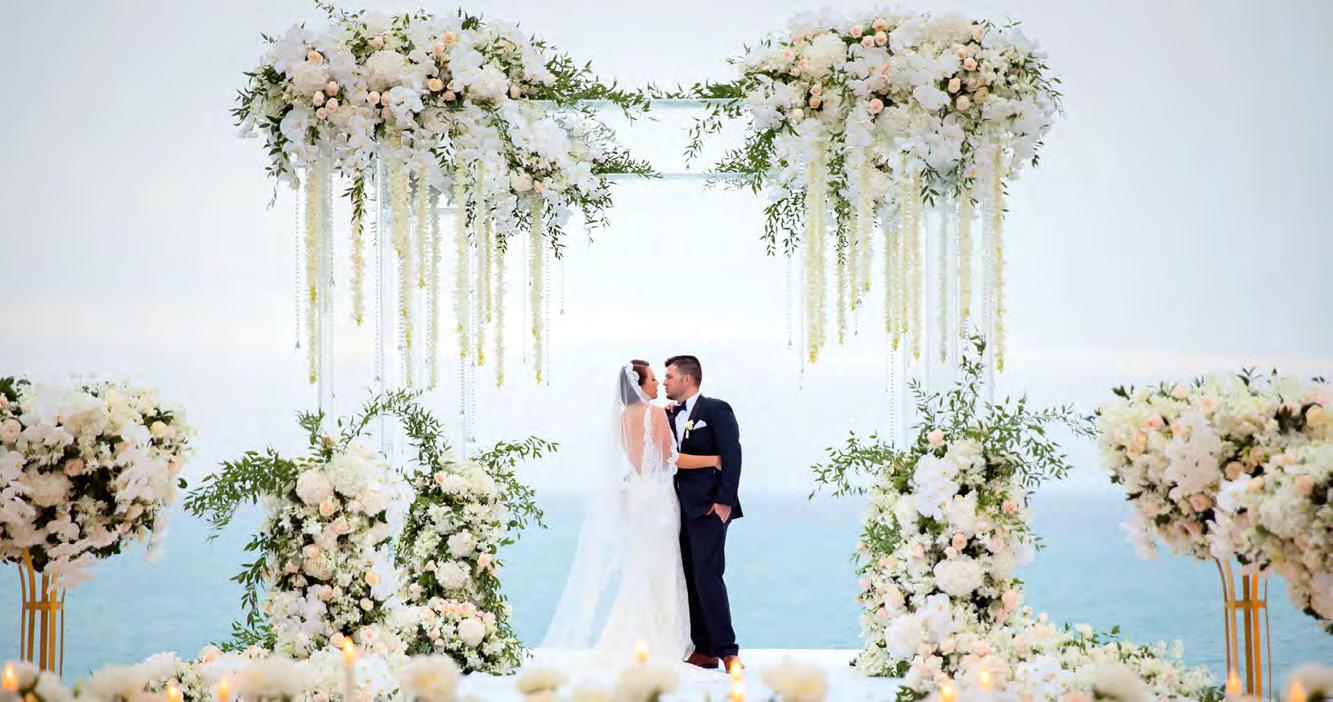

THE WEDDING BLISS THAILAND
Once-in-a-lifetime event, a wedding needs an attentive and caring eye looking after it, that’s why a wedding planner role is so important. The Wedding Bliss Thailand has everything you can look for: style, class, an eye for details, and world-class

professionalism. Clients from all over the world trust their expertise, and Lesley, a beautiful bride who chose Thailand for her destination wedding, was one of them. She quickly understood the full advantage of having a wedding planner, and couldn’t be happier with The Wedding Bliss Thailand: “ Recognise that you can’t do everything! I’m a control freak and wanted to do everything but I realised I couldn’t. Have faith in your planners and your bridal party – they are your best friends for a reason.”
After all, the wedding is all about you and your love. Your
ability to relax and immerse yourself in this atmosphere of joy, happiness and celebration is incredibly valuable. “ During the wedding weekend or day, take quiet moments away for yourself and your partner to really enjoy it all,” says Lesley and we can’t but agree!
With their unceasing passion, The Wedding Bliss Thailand conceptualise unique ideas, attend to the smallest details and oversee wedding planning process from the beginning to the end. A part of exclusive Destination Wedding Planner Congress community and Winners of Asia and Australia Luxury
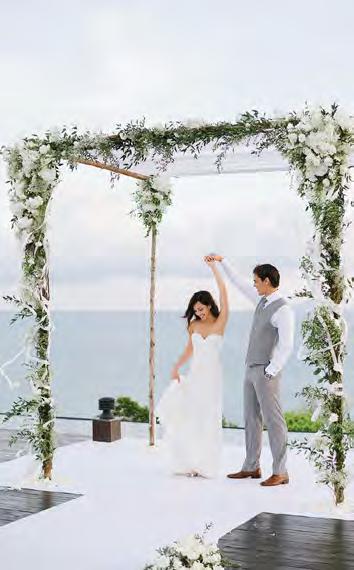
Travel Award 2017 as Best Destination Wedding Planner, they understand that weddings are not just an event, but a part of a unique and beautiful love story, one that will be cherished in a family history for years to come and deserves this extra special touch they’re always ready to offer.

Her chicken liver mousse offers real rich liver with a texture that’s oh-so-smooth. The spicy tamarind sauce topping the entrée is probably inspired by “namjim jaew” (a much-loved and classic spicy, tangy sauce that Thais have with roast pork belly). All in all, the liver mousse, with dried chilli smacks on your tongue and keeps you eating - making it a perfect degustation start. The grilled tiger prawns, complemented by grilled vegetables, is just as sensational.
So it just begs the question as to when she’ll have her own place. From the first to the final episode of Top Chef Thailand, ‘Chef Tam’ was celebrated as the youngest celebrity chef, with time being in her favour. People keep asking when she’ll have her own restaurant – as they can’t seem to wait a minute longer to try her dishes after watching them served to the judges on TV. She, however, remains tight-lipped.
“I cannot yet stay put. Having my own restaurant requires it,” the talented chef said as she pointed out the restrictions. “I enjoy travelling from one place to another in search of inspiration for cooking.”
Recently, Chudaree did a pop-up dinner project with her team. “This conceptual dining experience offers new tasting menus – which are based on a particular ingredient or theme… coffee or black chicken, for example,” she explains. “The project will be hosted in different places, and will last for a week.”
Definitely, our young chef loves the great sense of discovery that comes from experimenting, testing, trying and creating new dishes. Call it a kind of research and development, but one that’s outside of a food laboratory.

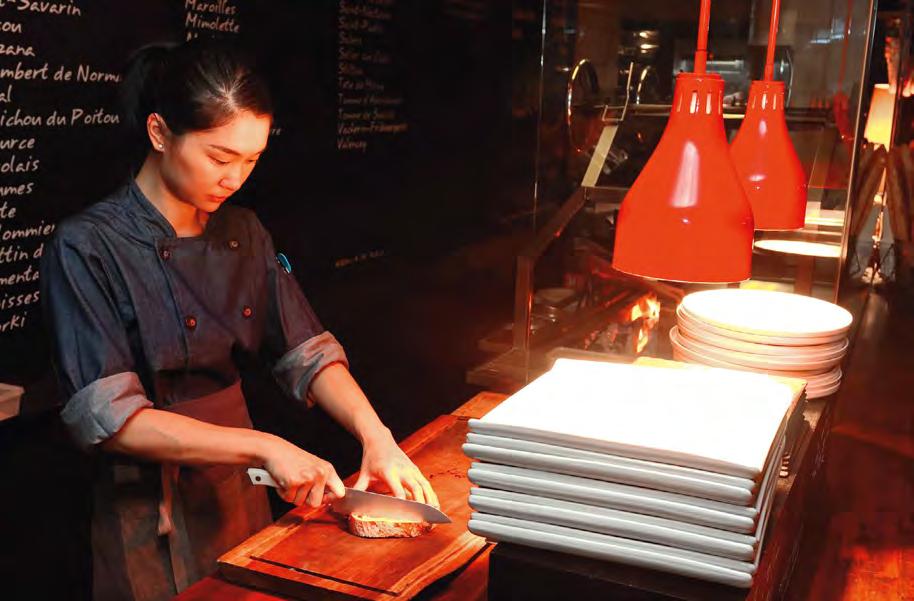
ศาสตร์การอาหารและโภชนาการจาก
อาหารรายล้อม ส�าหรับเธอ การท�าอาหาร
เป็นการหลอมรวมศิลปะและวิทยาศาสตร์
เข้าด้วยกัน “จินตนาการและความคิด
สร้างสรรค์มีบทบาทในการสร้างเมนูใหม่ แต่เราก็ไม่สามารถโยนส่วนผสมทุกอย่าง ลงในหม้อทีเดียวได้ เราต้องคิดอย่าง
นักวิทยาศาสตร์ตั้งแต่เริ่มท� า อาหารเพื่อ ให้ได้รูปและรสตามที่ต้องการ” รายการท็อป เชฟ ไทยแลนด์ ดึง
ความคิดสร้างสรรค์ของเธอออกมา และ เชฟตามขึ้นเป็นที่หนึ่งด้วยส่วนประกอบ อาหารราคาถูกแต่ดูแพง เช่น มะแขว่น
หรือข้าวด� า กับพริกป่าที่มีรสชาติ
ค่อนข้างแรง


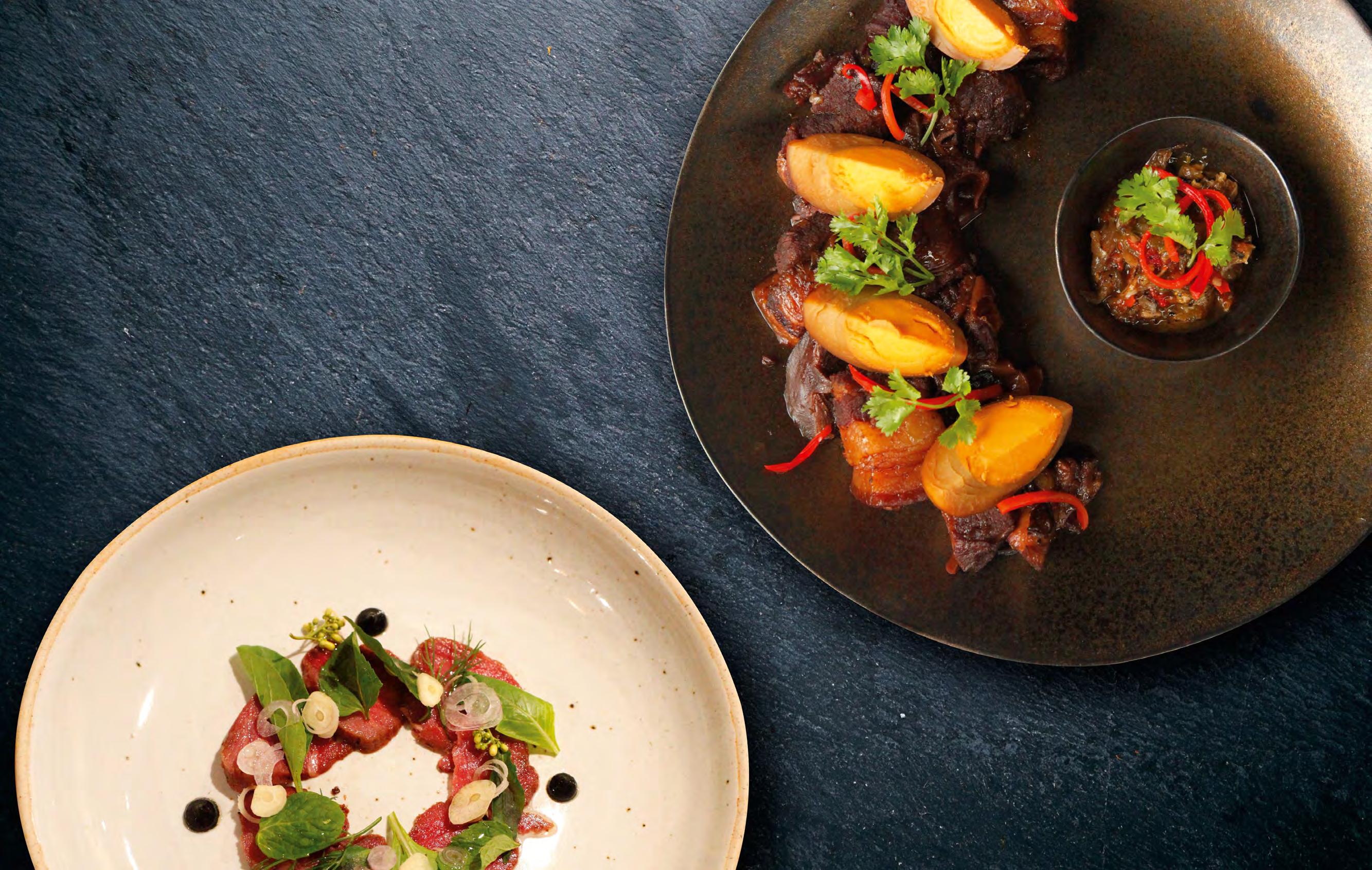

Followers of hip eats might start to find listings passe. Real foodies, those who live and breathe food alone, are seeking something more significant and meaningful beyond the story of a tasty dish. To get their appetites going, they may have to revisit the past.
For the latest in the Thai food scene, the loudest hum might just come from the North. The earth that nurtures growth there is being re-explored, while old stories on cooking are dusted off and retold. Creative dishes are portrayed by enlightened chefs who now ask different questions that relate to a really distant past. From boundless ignorance comes this learning that turns into a great treasure of culinary knowledge.
“It was a tipping point in my life, when I was deep in the jungle and learnt that I knew absolutely nothing, not even how to survive for a day,” says Chef Kongwuth “Kong” Chaiwongkachon, the chef owner of one of Thailand’s hottest table, Locus Native Food Lab, that is in the middle of nowhere Chiang Rai. “That fact gave me a new mind set. I thought I knew everything being a city boy and all that - but that trip provided me with the reality that I really knew so little. And here I am, searching for new things everyday by learning from the wisdom of the locals.”


This time, new learning involves age-old knowledge beyond how locals forage for food using old ways of thinking and methodology. It is a more localised way to eating what’s in season as markets up north change their produce and food every two weeks and in turn determines the change in menus. Thailand has seen a lot of food transformations in the past decades. Now we’re moving past the series of the tasty foreign influx, the gentrification of menus, buzz words like ‘organic,’ ‘housemade,’ ‘artisanal,’ ‘sustainable,’ and sprinklings of ‘farm-to-table.’ We have somehow come of age and coming around to our roots, resulting in more mature foods on the table. In other words, more
Top Chef Kongwuth Chaiwongkachon plates his creations.
Left
The rustic ambience of Locus with its open kitchen.
Opposite Page, Clockwise Thai northern style herbal, yellow rice with young chicken.
Smoked Tomme Cheese from Chiang
Rai with local sausages and herbs.
The tender parts of a young banana trunk in curry served as a contrast to the crispy clear noodles.
The French technique of making a consomme is adapted for Yam Gin Gai, a spicy chicken broth that’s famous in the Thai north.
real and unpretentious. Foods in Thailand have always been packed with variety and diversified through creativity. But now the most exciting thing happening is the combination of earnest searches for knowledge in the chef world, coupled with the rise of enlightened eaters.
Part of this new way of old food is the revival of ancient recipes, which happened three years ago in an old shophouse in Bangkok’s Old Quarter. A former Thai head chef at the then Four Seasons Bangkok quit her job and pursued her dreams. “I wanted to create Thai food of a new era,” says Ann Khanarak of Thai Cooking by Ann Khanarak. “In my years of cooking Thai food, I have always wanted to present them in new ways, but with true Thai tastes and all edible ingredients –not carving pumpkin and making rose petals from tomato skins. Thai food can be interesting since they derive from ancient recipes and there are so many elements we did not know, just because we never searched for it.”
At Ann’s Chef’s Table, many forgotten herbs - all arranged like floral bouquets - are served with an ample bowl of relish, and wellrounded curries served colourfully in old-style ceramics. Side dishes or appetisers - something as ordinary


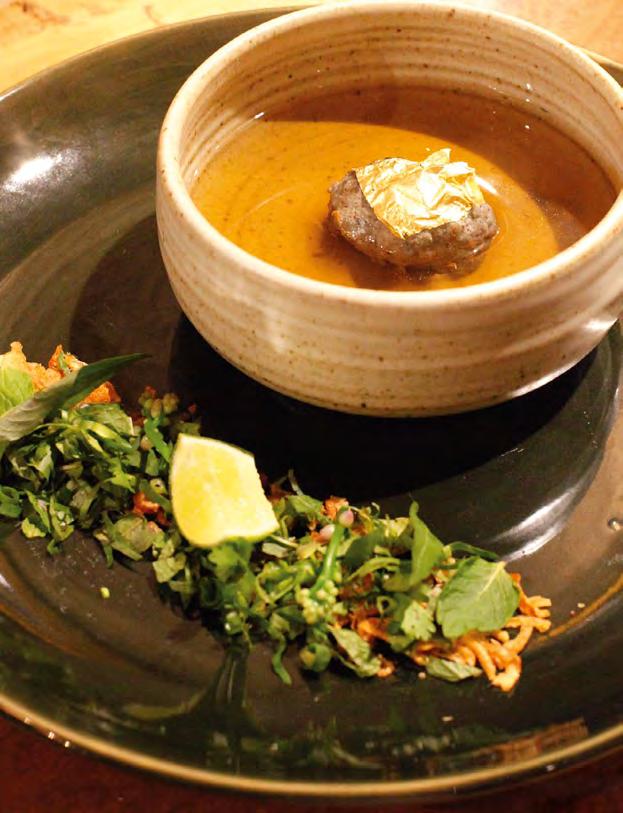



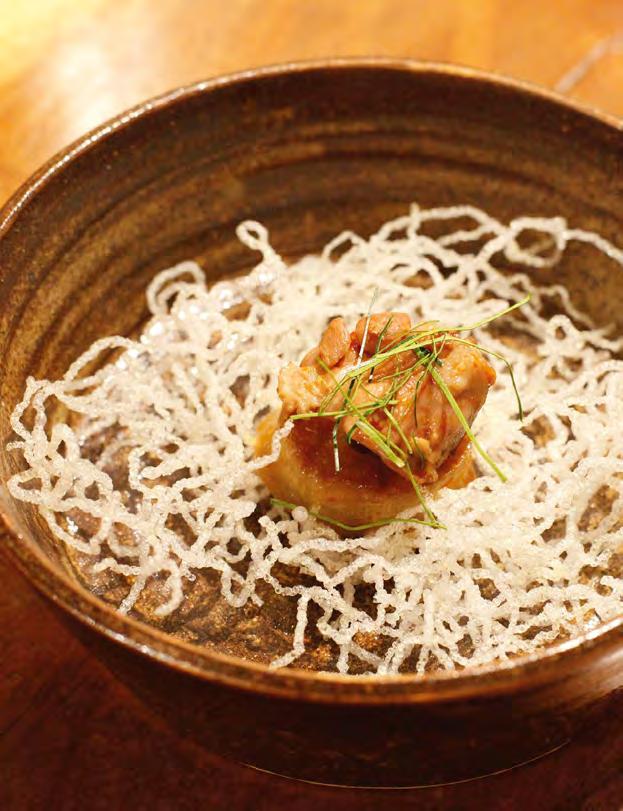
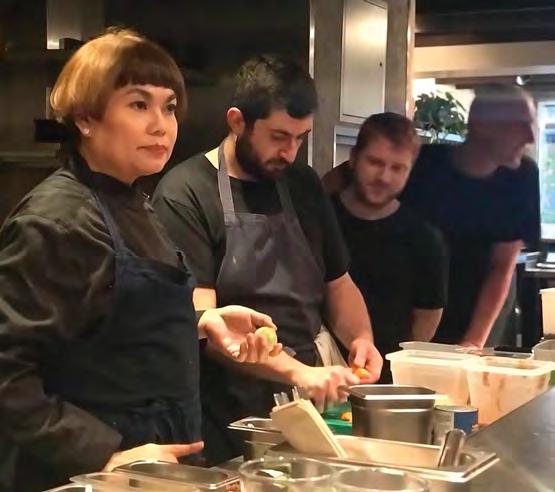
as Mee Krob (fried vermicelli noodles) - are reawakened with new forms of presentation. Gorgeous, dainty and super delicious. Beautiful Thai dishes served by Ann at this shophouse spurred a new creative movement, opening up new possibilities for Thai foods long thought to be hopeless and at the level of other classic ‘gourmet’ cuisines such as French and Italian or even New American.
“Now I dare to say that the Bangkok food scene is on par with many global cities,” says Varatt Vichit-Vadakan. Ten years ago, he pioneered the current craze for craft coffees and foods with his small coffee shop Ohana and now has a
Top, Clockwise from Left Chef Ann Khanarak teaches a crew of chefs from London.
A floral roll with 20 types of flowers.
Varatt VichitVadakan.
Crispy climbing wattles with a mildly spicy minced-pork salad.

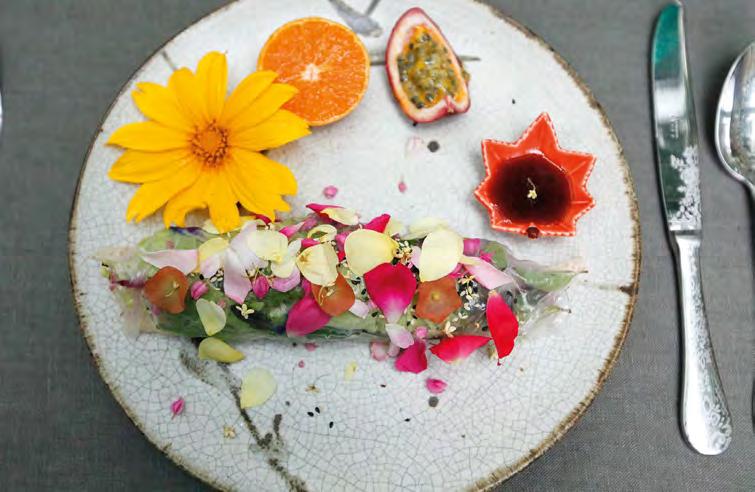
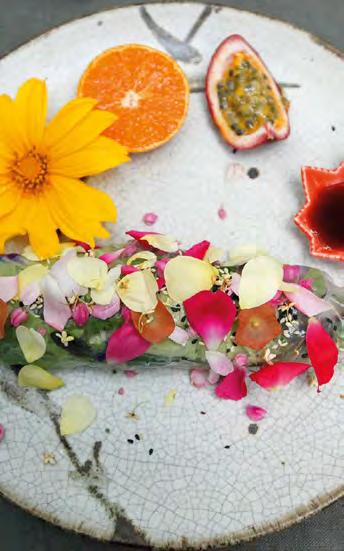
mini-empire of the ever-popular Roast restaurants and Roots coffee shops. In his business plan to build The Commons community mall in Bangkok, Varatt subliminally shaped people’s ideas of ‘trendy foods’ to be something that’s selective, craft-driven, and even personified. Thanks to The Commons’ workshop spaces, young and aspiring chefs have more opportunities to shine. Eating well now means knowing your food well and being able to select the best for yourself. The trend now is to catch up with the demands of even more savvier consumers who scrutinise the total dish and not merely their flavours.
“I think we have come full circle,” says Varatt. “Now what is
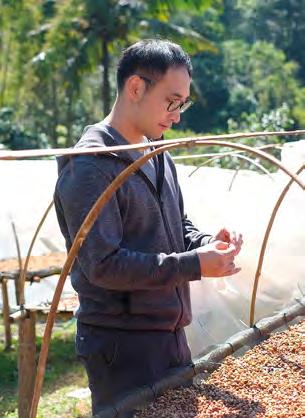
happening is a lot of young chefs are making their own statements in the food and beverage scene by focusing on one or two things they do best. A lot of shops and restaurants are selling just one or two products. Being more focused on those and being able to fully trace it back to its origins. A soy milk café in Chiang Mai can tell you who grows the soybeans you are drinking, for example.”
With even savvier consumers looking for new and more exciting eating experiences, being successful in the current food scene in Thailand now means one needs to spend more time working with the food. This means the backstory, as well as the impact of food to the community, the environment. There is a re-discovery of the repertoire of ancient recipes because consumers seem to be wanting it all. And that means everything is coming together: innovative dishes which are the revival of some forgotten delicacies, a revival of local arts and crafts that is part of the story and meal presentation, revisiting the old days, and perhaps that means more reading of old books and old recipes.
“All the (culinary) treasures I found are inside the heads of older people,” says Chef Kong. “I always have tons of questions for them. Now I realised that everything is connected. The changing of the seasons, the new sprouts, new produce, and that makes cooking for me even more exciting.”




A 10-course Thai degustation (mostly revived from forgotten Northern dishes) by Chef Kong with an entirely new menu each month. Dishes are determined by seasons, which in turn determine the local ingredients. The special thing about this place is the deconstructing of each local dish and presentation that sometimes require haute French cooking techniques. Advanced reservation is a must Address: 171/24 Baan Santarnlhuang, Tambon Rim Kok, Amphur Muang, Chiang Rai, Thailand, T: +66 (0) 86 881 7299, facebook.com/locusnativefoodlab
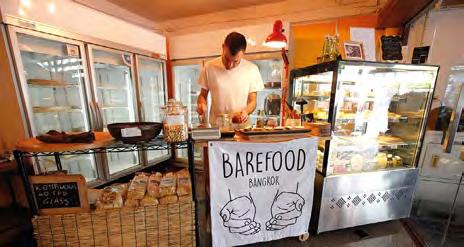
BAREFOOD BANGKOK
Believers in the responsible food movement and within the network of the crafted foods community in Bangkok, Barefood is a project run by Chef Edoardo Bonavolta and Taksina Nuangsri. They create vegan cheeses from assorted nuts, make pickles and plantbased products. To network with like-minded individuals, workshops on crafted and plant-based foods are offered. Address: 26 Sukhumvit 61, Bangkok, Thailand, barefood.live, facebook.com/barefoodbangkok
VILLA MAHABHIROM
Revival of Thai traditional old recipes. Thai-style alfresco lunch by the pool with interesting dishes such as ‘stir-fried sticky rice with dried anchovies, crispy fried ‘climbing wattle’ or cha-om with salad dressing, dried version of pork and eggs braised in five spices and a new version of the famous durian and sticky rice, this time in coconut durian mousse. Address: 62 Moo 10, Tambon Suthep, Amphur Muang, Chiang Mai, Thailand, T: +66 (0) 53 271 200, villamahabhirom.com
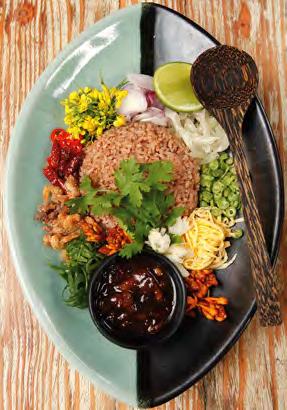
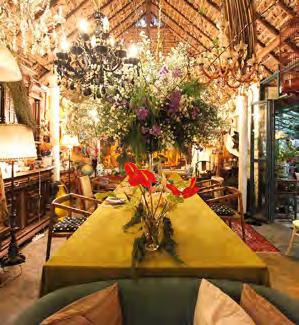
BAD BOY VALLEY
Quality ingredients are sourced, with twists in Thai and western recipes plus the English cottage vibe makes this place a popular sanctuary in Mae Rim district of Chiang Mai. Try their ‘shrimp paste rice’ with sweet pork infused with ‘ma kwaen’ or Thai northern Sichuan pepper, and a salad of phak kood, an edible fern. Address: 592/1 Mae Rim - Samoeng Highway, Mae Ram, Mae Rim, Chiang Mai, Thailand, T: +66 (0) 81 858 3555, facebook.com/theironwoodmaerim

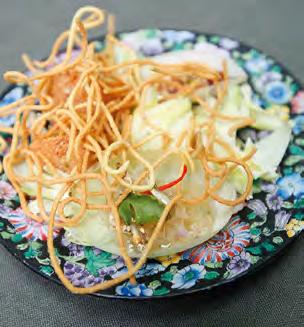
Set menu served in an “Alice in Wonderland” ambience, hidden deep in the woods. The entire place is a jungle of fantasies with the eclectic and personal collections of the owners - ranging from invaluable antiques and taxidermy. Their food is equally fancy with over-the-top flower garnishes. Only prix-fixe menus are available, with accommodations in their antique-strewn rooms. Address: Wat Phraphutthabat Si Roi, Mae Rim, Chiang Mai, Thailand, T: +66 (0) 62 474 1656









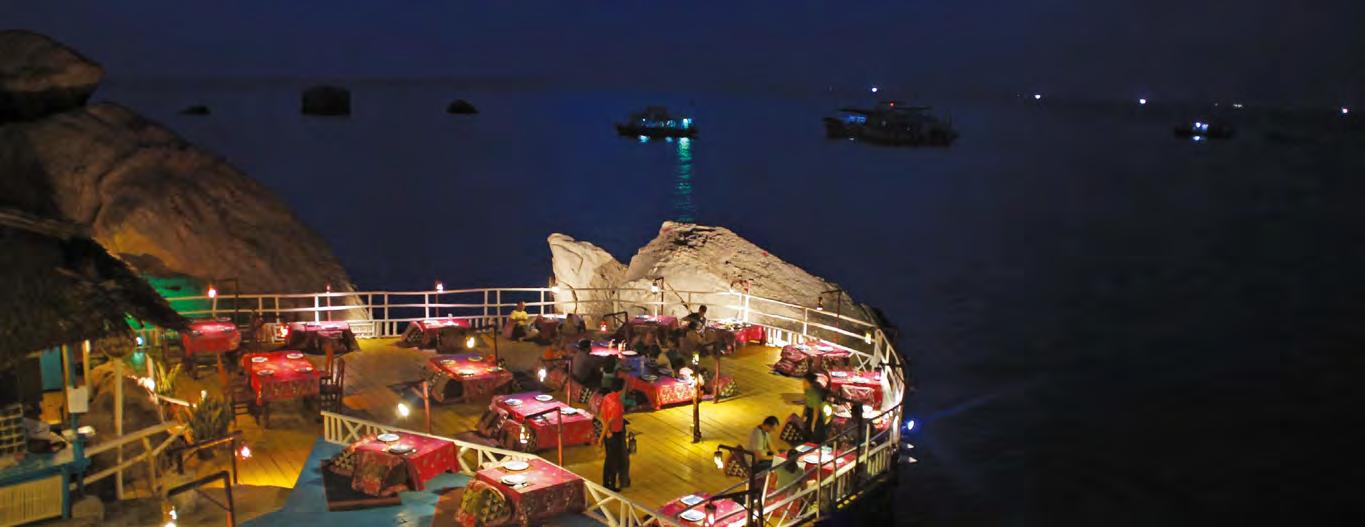
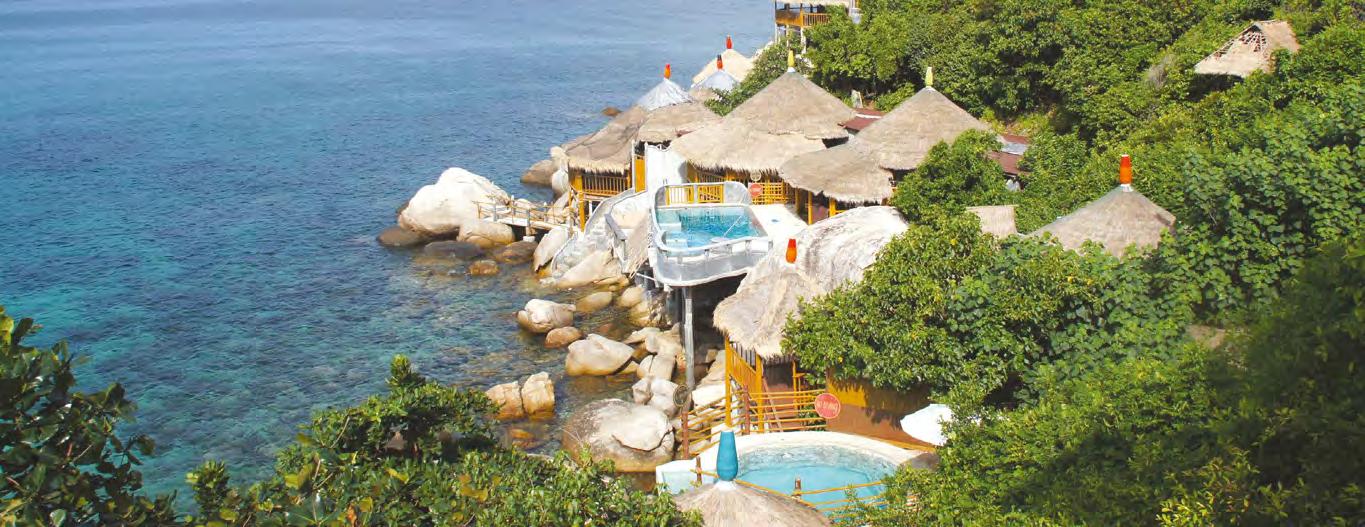

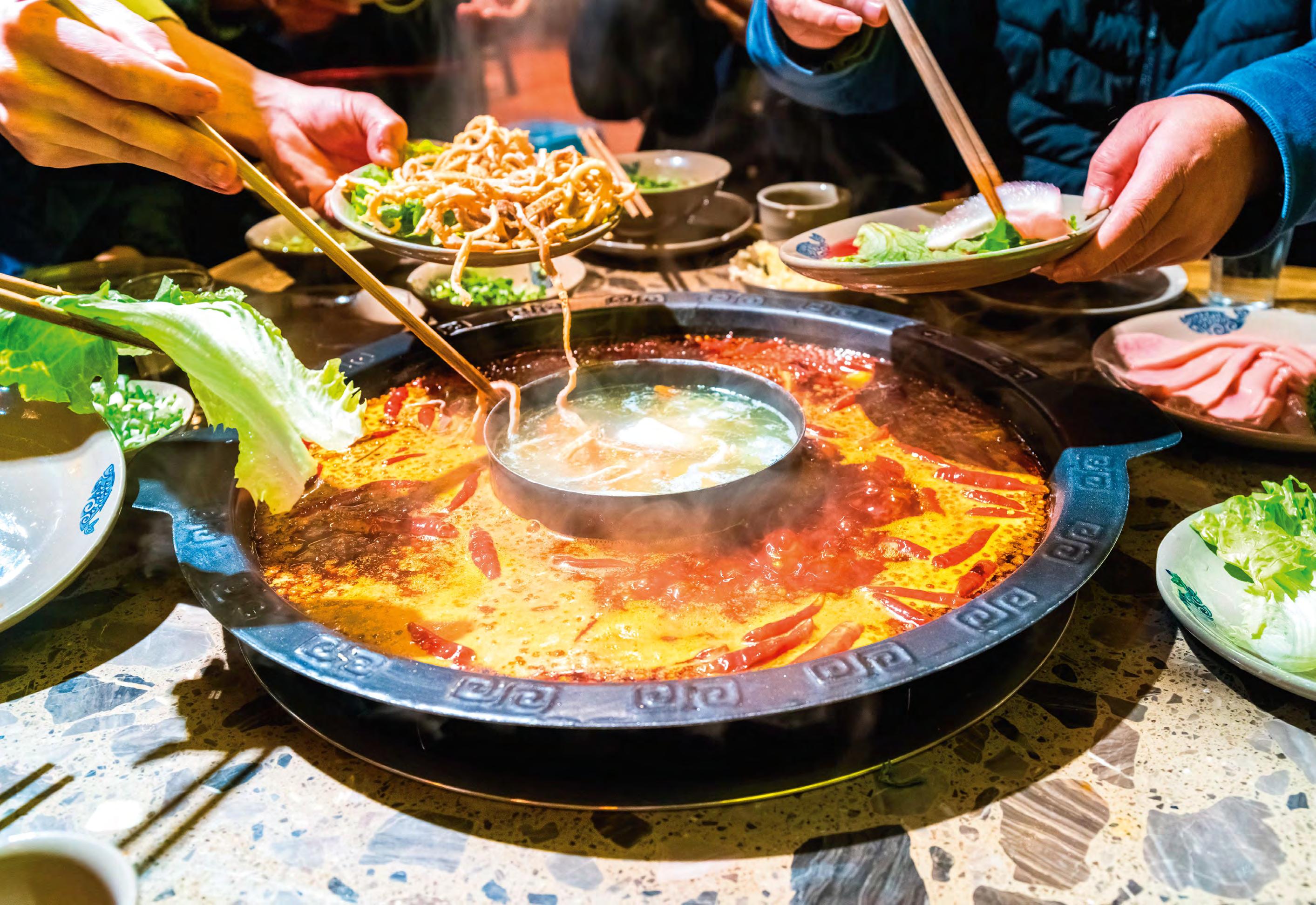
In a cuisine-rich place like Chengdu, no reservations are necessary to eat well — as long as you have no reservations in eating its bold, fiery food.

We arrived in Chengdu late evening, weary travellers with growling stomachs. It was close to 9 o’clock at night, the dreaded hour when you just have to take your chances for any decent meal. But we were excited to be in a city lauded for its culinary culture and dramatic landmarks. While Chengdu served as the base, we were also taking advantage of its gateway to some of the more ancient and beautiful parts of China.
Any visit to Chengdu includes pandas, the giant Buddha image at Leshan, and the awe-inspiring height of Mount Emei. But it’s what we can eat going from place to place that fuelled our anticipation. We were told that the simplest pedestrian bowl of noodles is just as delicious and executed with as much technical prowess as Chengdu haute cuisine. Our group decided to just explore and see where it took us, the only must-eat item being the famous Mapo Tofu. That, we ordered and sampled practically every place we visited.
We retained a local tour guide for exactly one reason: in addition to his recommendations for local eateries, we needed an interpreter for our culinary adventures. We wanted to be able to walk into any local establishment and ask or request anything without a language barrier.
Bottom Left To
We weren’t looking for the most exotic items but wanted to be able to ask about the ingredients. It was a really good idea since the first snack we encountered were rabbit skulls, um, head, dunked in chilli oil. We wouldn’t have wanted to order that by mistake.
Across the street from the hotel seemed a good choice for the first meal. Keep it simple, we tell ourselves and head to a mom-andpop eatery. However, a display of semi-wilted vegetables and other unrecognisable greens that marked the remains of the day didn’t seem promising. Our stir-fry dishes arrived with rice and the first bite revealed depth of flavour despite the simplicity of the cooking.




A nondescript eatery with straightforward dishes whipped up quickly and delicious. Were we just lucky? No, that’s Chengdu. The first meal set the tone for the rest of our trip. Other fascinating seasonal vegetables started to appear. We heard tongue-twisting names, such as celtuce, osmanthus – all sounded so exotically new and, it turns out our guide Jay from yakpanda.com, who had trained to be a chef at one time, explained to us that the first item to master in a Sichuan chef’s training was how to make the right and proper “red oil”. Most dishes were intense colours of red, made so by the presence of dried chillies and the aromatic Sichuan peppercorns, with a final taste profile that’s balanced by dark vinegar and generous presence of peanuts.
The first side trip was to Huanglongzi ancient town. Harking back to the Qing Dynasty, we walked through seven cobbled-stone streets and nine alleys with streams and water snaking through the village. Grandma vendors approached female visitors to sell crowns fashioned from dahlia flowers;


Chengdu has an exhaustive list of
Bottom Left Everyday Sichuan
just like the colourful ones worn at a Swedish midsummer festival. Whether it was just a touristy gimmick or not, everyone looked as picturesque as the rest of the town.
For lunch, we decided on a homey restaurant by the river. The menu consisted of baskets of no less than 30 varieties of seasonal vegetables. We sat by the river blissfully watching a fisherman working his catch. We learned it was river eel which were on display, live, in metal basins in front of the restaurant. Naturally, we ordered some, despite objections by one member of the group who was a devout Buddhist. The simple kitchen had several types of doubanjiang or douban set out. This spicy and salty bean paste worked as the essence in most dishes in Chengdu. When the dishes arrived, it was a feast of colours and tastes - all from only vegetables and some simple seasonings. The depth of flavour and the umami imparted by Chengdu culinary magic made every dish stand out, all done in the flaming heat of a wok.
On to beautiful and misty Mount Emei, one of the four most sacred
The depth of flavour and the umami imparted by Chengdu culinary magic made every dish stand out, all done in the flaming heat of a wok.

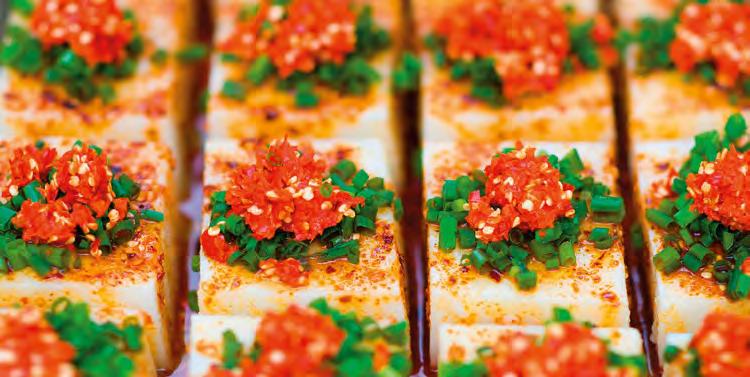

Buddhist mountains in China. Stunning lush trees and waterfalls bring to mind the ink brush paintings done by scholars from centuries past.
We stopped to indulge in a local habit of just hanging at the nearby teahouse, enjoying the taste of fresh mountain air and the scent of bamboo groves in a batch of young tea leaves. The leaves were also visually appealing as they remained suspended upright in the tea, looking like the bamboo leaves that surrounded us. The clicking sound of pumpkin seeds set the tone for a day in the life of Chengdu. Relaxing, spiritual, and gustatory.
A side trip to the Leshan Giant Buddha can be included together with Mount Emei on a single trip. The Buddha is carved from a gigantic hill in terracotta colour at the confluence of three important Sichuan rivers. At 71 metres high with fingers measuring 8 metres long, the Buddha has shoulders larger than a basketball court where dozens of people can stand on.
On the way there, we purchased some fresh picked bamboo shoots from an old woman laden with a basket full. Not quite knowing what to do after we bought them on a whim, we entrusted our acquisition to the cooks at the restaurant we selected for lunch. Simply stir-fried with salt and garlic, this variety

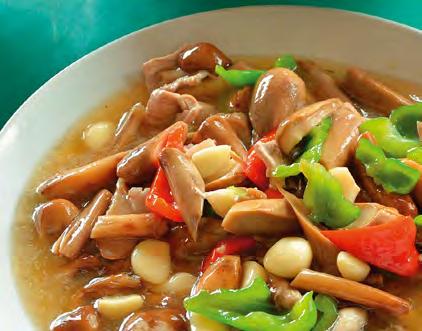
had a slightly bitter bite to it, with the fresh fragrance of mountain flowers. Then we had our first taste of the famous Chengdu fish stew called Sichuan Oil-Boiled Fish or Shui Zhu Yu. Slices of delicate, flaky fish lies beneath a slick, intense bed of red chillies, Sichuan pepper, and boiling oil – this imparts that numbing sensation people refer to with Sichuan cuisine. This lightlypoached local fish is served with green vegetables and potato starch noodles, placed in a large bowl covered generously in a layer of chillies, ginger, green onion, garlic slices and cilantro.
The Chengdu culinary scene is so vast in its offerings that we almost forgot to try the classic mapo tofu. This concoction of soft bean curd with douban is redder, and has the fires of hell sitting on your tongue. There’s an exhaustive list of noodles, like sweet water noodles served in a snack-size bowl with vinegar, classic dan dan noodles, and zajiang mian, a thicker wheat variety with soybean paste and dozens of other variations. The list goes on. The only thing we didn’t get to try was the hot pot and chuan chuan, Chengdu’s version of a hot pot, with of skewered meats and vegetables that’s conveniently cooked. But like most people, we’ll return because we can’t get enough.


Tai Guo Zhi Nan or Thailand Guide is a custom-made guidebook designed for Chinese visitors to Thailand. Packed with insights and recommendations, the guidebook is a colourful presentation of Thailand focusing on Bangkok, Samui and Phuket.
Tai Guo Zhi Nan is curated and edited by some of the most experienced and talented native speakers and multi-award magazine designers. The image-driven contents open with an overview of Thailand followed by events and festivals, recommendations to the best places to Eat, Shop & Play and close with tips tailored for Chinese visitors. The guidebook is divided into distinct sections highlighted by bright bold colours and section openers.
Distributed by Bangkok Airways at airports and travel agents in China, the guidebook is also available at select hotels and resorts in Bangkok, Samui and Phuket and at Bangkok Airways lounges. The Guidebook also comes in a digital format via its website taiguoguidebook.com or scan the QR code on the cover.



Words Mark Pochaw, N Acosta
Photos Chengdu Food Tours
What else in Chengdu is there to try in its vast dining landscape?
We ask Chengdu Food Tours, whose drool-worthy Instagram posts show a Sichuan food repertoire that reflects the scope of their dining itineraries, proving just how many options there are to discover. The CEO, or ‘chief experience officer’ Jordan Porter, gives his top recommendations for a well-rounded Chengdu food experience.
A good bowl of streetside noodles. Porter points out that Chengdu noodle variations run the gamut in toppings and combinations but there are definitely two basic options: soup or dry. A good start would be beef or rib noodles in red soups or zajiang noodles, also generous in chilli oil and fried minced pork – both of which are easily found.
Roast rabbit. “Rabbit is a huge part of Sichuan cuisine and it’s something I don’t think gets eaten at Sichuan restaurants outside of the province as often,” says Porter. But this is not to be confused with rabbit heads, one of the popular local snacks.
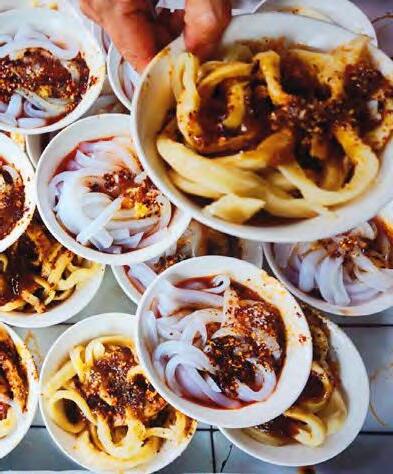


Late night Chuan Chuan! Known as the Chengdu version of hot pot, skewers come most often cooked and already sitting in a master pot to serve, unlike a traditional hot pot that’s cooked at your table. Porter describes it as being “more than a meal – it occupies an important social and cultural space for local people. The word chuan means to skewer, or on sticks, and refers to the fact that all the meat and veggies are threaded onto sticks before being cooked so they are easy to retrieve - rather than tossed into the pot and fished out like in a normal hot pot.” This is more of a convivial and communal style of eating.
“Of course, (enjoy) the bustling jovial atmosphere of hot pot with a group of friends,” Porter says with enthusiasm,

referring to the traditional style.
“Because Chengdu is an amazing city that’s not just full of incredible food and fresh produce, but an energetic and unpretentious food culture that permeates all aspects of society.”
He has lived in Chengdu since 2010 – and the company strongly believes in telling the stories of the city and using food as a vehicle for visitors to gain insight – and not just the food itself, but also its food culture. The result, says Porter, is an amazing experience of seeing what makes the place so special.
“This is a rapidly developing city, but one that retains a relaxed feel, a great work-life balance and harbours a great number of subcultures that make it an interesting place. And mostly, people here are just nice!”
Chengdu is known for an exhaustive list of noodle combinations.
Chuan Chuan it in Chengdu! Meat and vegetable skewers called “chuan” sit in a spicy broth in a city where the food culture and leisure culture go hand-inhand.
Sweet
and pea starch noodles are popular all day snacks.
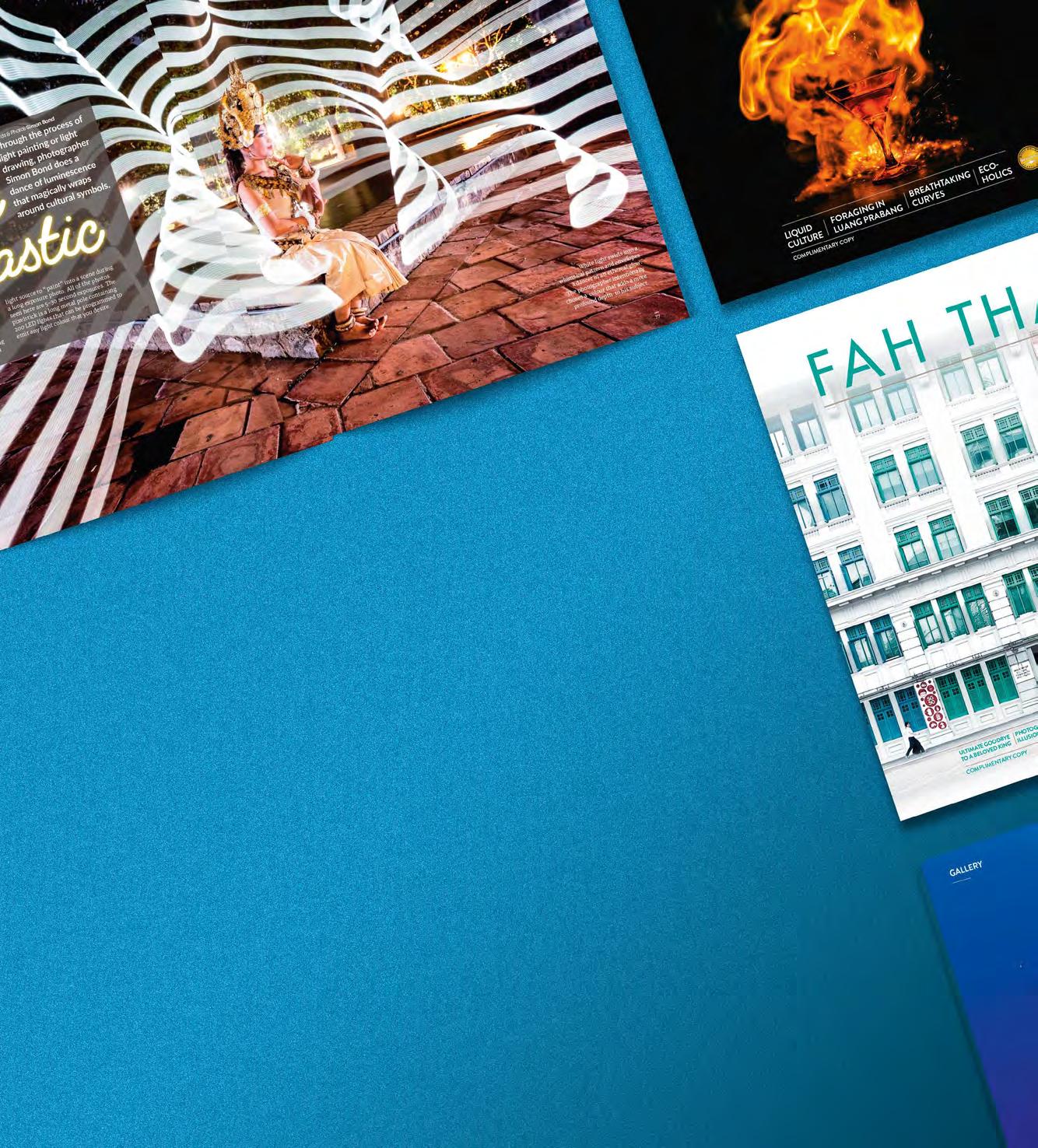





ต้องเดินด้วยท้อง เราตัดสินใจตามใจ
ปาก เพื่อทดสอบความจริงที่ว่าก๋วยเตี๋ยว ข้างถนนที่เฉิงตูจะเทียบเท่าอาหารชั้นสูง
น่าจะเป็นตัวเลือกที่ดีที่สุด ถึงแม้ว่าผัก จะเหี่ยวไปนิด บางอย่างก็ดูไม่ออกว่า

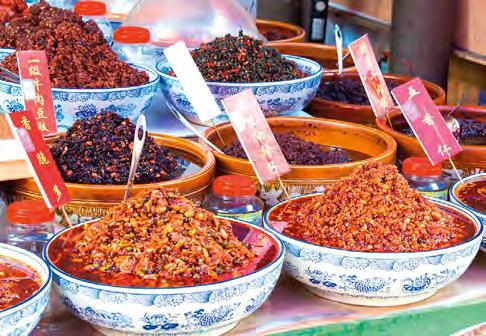

ในสมัยราชวงศ์ชิง เราเดินบนถนนปูลาด ด้วยพื้นหิน มีล� า ธารพาดผ่านหมู่บ้าน
ผู้คนดูเหมือนหลุดมาจากเทพนิยาย กลมกลืนไปกับบ้านเรือนแบบตะวันตก
สไตล์เสฉวน เราพักทานอาหารกลางวัน
ที่ร้านอาหารนั่งสบายริมแม่น�้ า มองชาว
ประมงหาปลา บนโต๊ะอาหารมีตะกร้าผัก
กว่าสามสิบชนิด ตามด้วยเมนูผักอีก
มากมายที่ปรุงด้วยเต้าเจี้ยวเผ็ดสีฉูดฉาด หลากรสชาติผสมปนเปเข้าด้วยกันเป็น
ความกลมกล่อมจากเตาไฟร้อนฉ่า บนเขาเอ๋อเหมย หนึ่งในสี่ภูเขา
ศักดิ์สิทธิ์ในพระพุทธศาสนาของประเทศ จีนที่งดงามดั่งภาพวาดหมึกพู่กันอายุ หลายร้อยปี เราจิบชายอดอ่อนที่มีกลิ่น คลับคล้ายอากาศบริสุทธิ์แห่งขุนเขา

จาจังเมียน ซึ่งก็คือเส้นข้าวสาลีกับ
เต้าเจี้ยวและเครื่องปรุงอีกมากมาย หรือ
จะเป็นขนมจีบซาลาเปาสอดไส้ต่างๆ
จะให้ไล่ทุกเมนูคงมีที่เขียนไม่พอ อาหาร อย่างเดียวที่เราไม่ได้ลองคือ ฮ็อตพ็อต
สไตล์เสฉวน แต่ไม่เป็นไรหรอก เพราะ
ครั้งหน้าจะกลับมาเก็บทีเด็ดให้ครบ อย่างแน่นอน!








Ms.DaruniKlaprapchon(Guitar) 087-929-6611 Guitar@mpmith.com Mr.RezaBizmark(Bob) 082-446-9192 Reza.bizmark@mpmith.com


Thai desserts, or khanom, are blissful treats with a ubiquitous presence. They inspired a popular Thai food blogger and a photographer to engage their sweet tooth and reacquaint with the traditional and contemporary craft of Thai snacks and sweets. With every luscious bite, the team tasted their everlasting appeal.
Words & Style Kay Choomongkol
Photos Chanathip Nantachaibancha
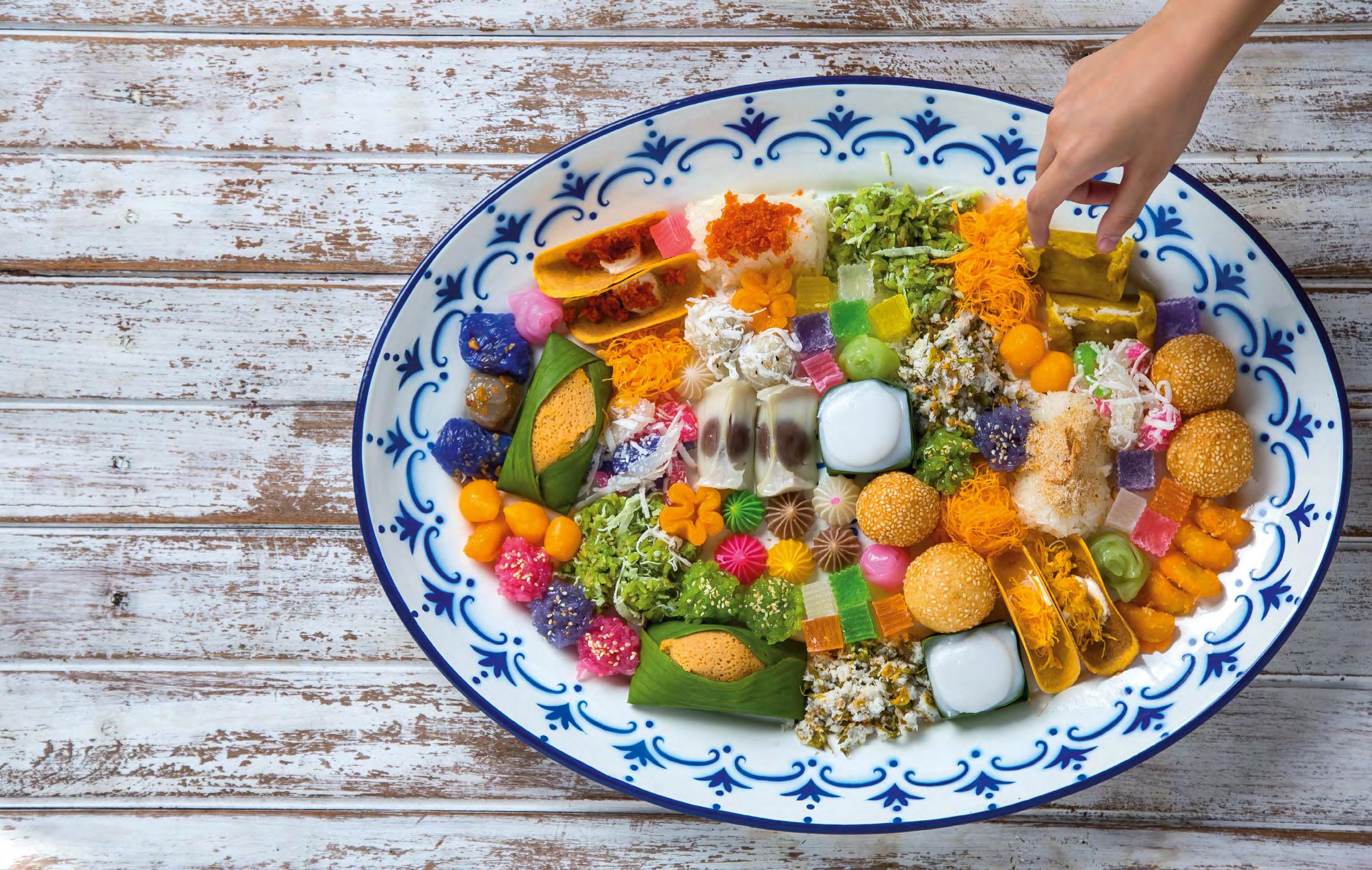
In a bustling market, follow the warm yellow light from industrial bulbs that hang above a dessert stall. The soft hues set the scene for the vendors who busily pack delectable desserts into containers in a familiar retail scene in Bangkok. Even more enthralling are those at smaller markets who do things the old-fashioned way, cutting and trimming banana leaves in geometric shapes to wrap the Thai delights. Gentle piercings
of sharp bamboo sticks called “mai klad” keep the wrapping in place.
Many vendors make the desserts on site at the market, a lively and charming scene in hidden alleys of the bustling capital of Thailand. Stoves light up, fresh coconuts get grated for their cream, and egg yolks drizzle into sugar syrup. All the while, the dessert magicians fry, steam, chat and offer customers sage advice and tips on how to best enjoy the sweets.
The fragrant aroma of boiling coconut milk permeates, with added notes of pandan and other ingredients filling the air with mouth-watering scents.
Such desserts and snacks are available in any market in Thailand starting from early morning while some sellers put them out only in the afternoon. No matter what time they begin, stroll in and explore the flavourful taste of Thai snacks and desserts. At a mere 20 baht, or around USD 60 cents, it’s a taste that lingers forever.

Thai desserts offer a colourful array of textures, from crunch to chewiness with many that are coconut-based.
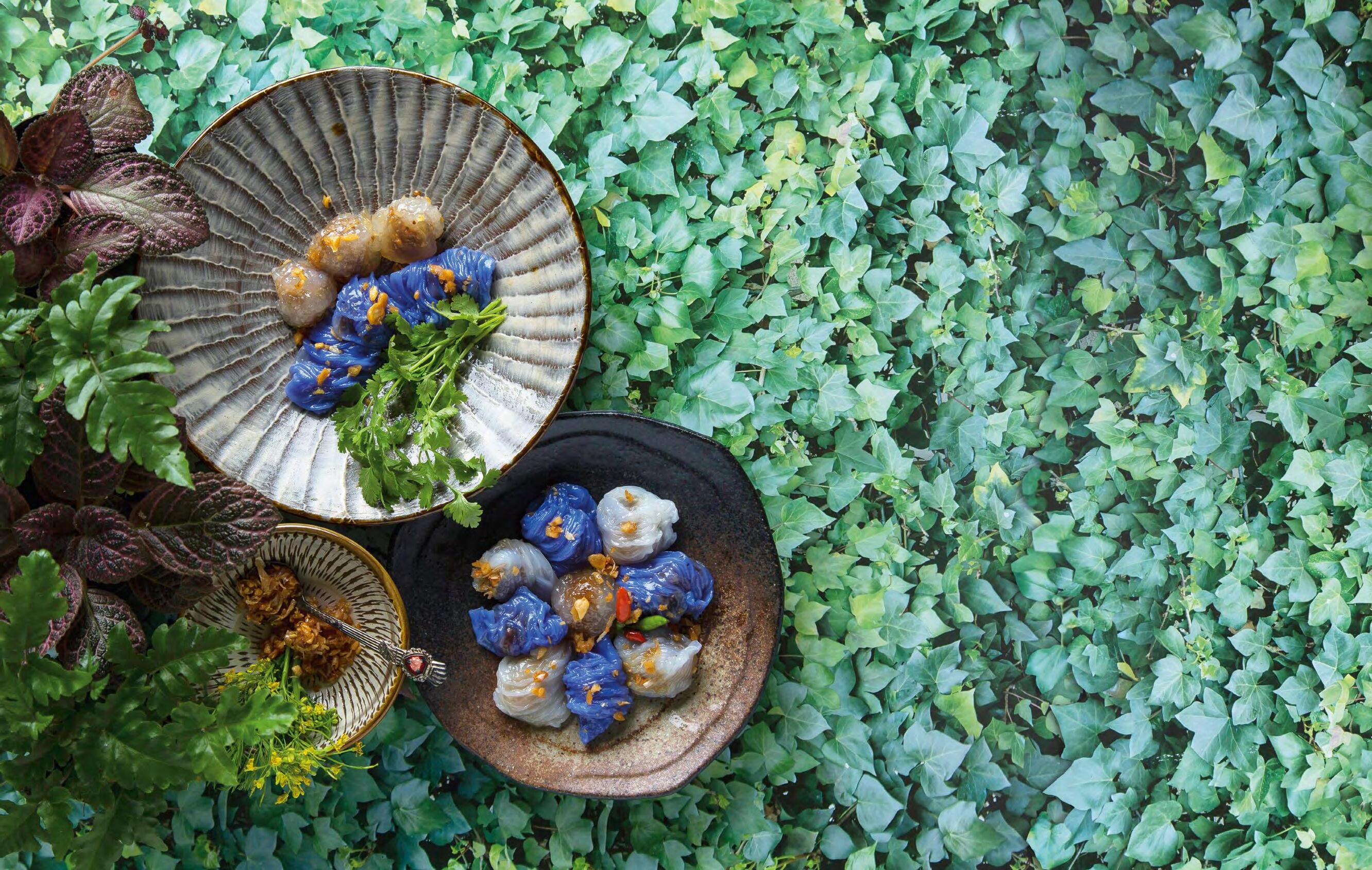

OPPOSITE
Sakhoo Sai Moo and Khao Kriab Pak Mor (Steamed Tapioca Balls with Pork Filling and Steamed Rice Dumpling) are like twins – always together at the same snack stall. Sakhoo Sai Moo uses tapioca to wrap the minced pork filling while Khao Kriab Pak Mor uses a rice flour wrap. Deepfried garlic, aromatic herbs of coriander, lettuce, and fiery chillies complete the taste.

TOP
Making Thai sweets requires patience and attention to detail, right up to the final presentation. Their inspired origins trace back to traditional times when the colourful desserts got their bright hues from flowers and plants and this practice continues to this day. Blue comes from the butterfly pea flowers, yellow from night jasmine flowers and green from pandan leaves.
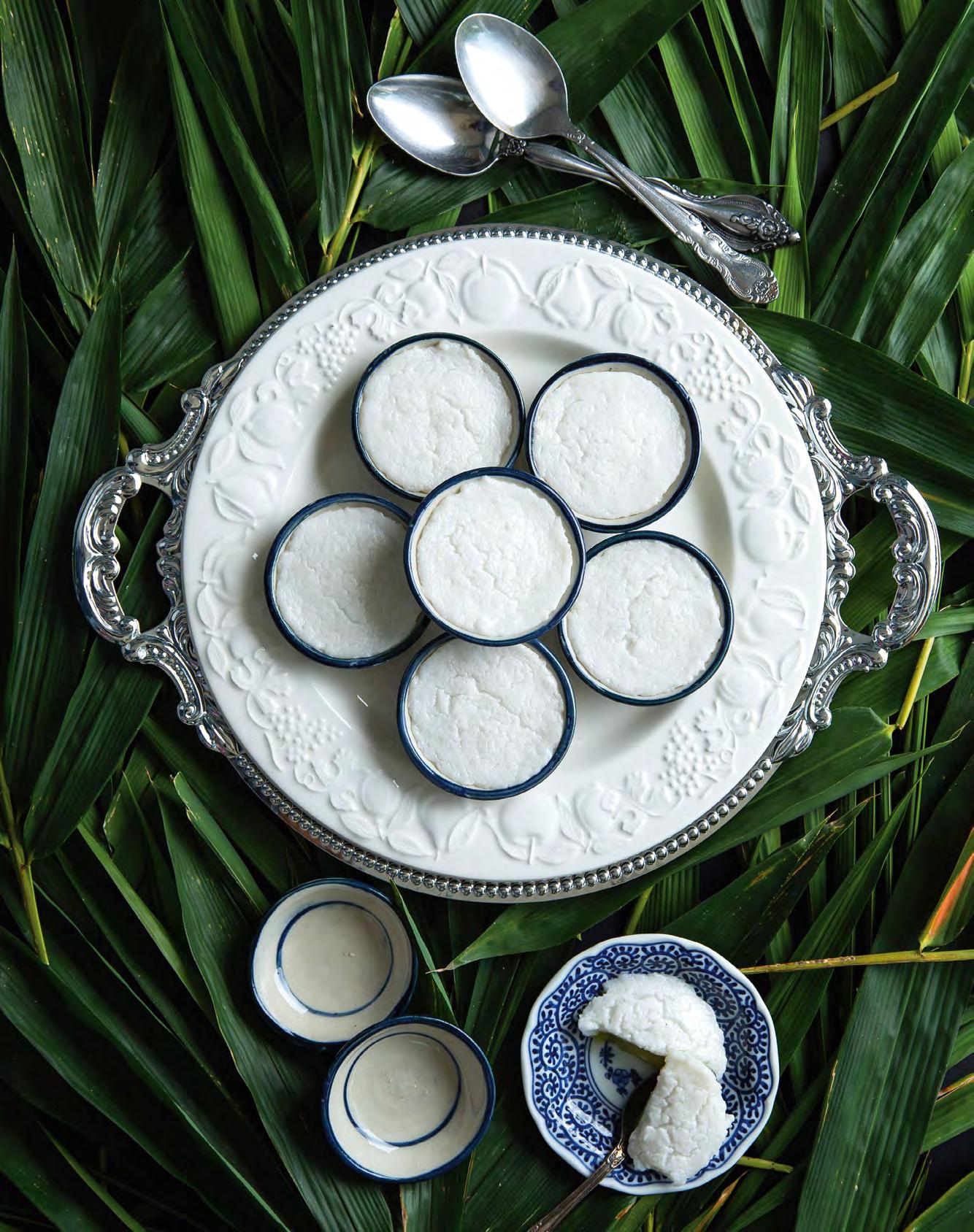



OPPOSITE PAGE
Bouncy soft and creamy Steamed Coconut Milk Custard or Khanom Thuay is a beautiful result of sweet pandan-scented flavours contrasting with the mild tang of saltiness from the cream of coconut topping. This custard gets its name from the tiny ceramic ramekins that hold the mixture as it cooks in a steamer. Some shops may serve it the authentic way, accompanied with a small wooden paddle for a spoon.
TOP
Khanom Tom is a gooey and delicious coconut ball of delight enveloped in glutinous rice flour and draped with grated coconut. It’s the oldest Thai dessert recorded in Buddhist literature from the Sukhothai period. The sticky, chewy coconut balls were traditionally used in a blessing ceremony or religious rituals.
LEFT
Khanom Thua Paep or mung bean ricecrepe got its name from its similarity to the Hyacinth Bean (Thua Paep). A sprinkling of split mung beans, complements the shredded coconut strands and topping of sugar and aromatic roasted black and white sesame seeds.


Khanom Khrok or Thai rice pancake with coconut milk is evidence of shared culture in Indochina as the snack shares a kinship with “montlin mayar” in Myanmar, “khaonomkok” in Laos and “numkrok” in Cambodia. Though they look alike, the Thai Khanom Khrok has its unique charm. It is made with two separate batters: a thinner, more watery blend that results in a crispy outer shell
when cooked while the thicker batter forms the inner core of coconut custard. Ingredients for both batters are flour, coconut milk and salt but in different proportions. Have it plain or choose from the variety of toppings like green onions, corn, taro, and even pumpkin. The succulence and contrasting sweetand-salty of coconut cream is best when it is freshly-made and hot from the cast iron Khanom Khrok pan.

TOP
Fried Sweet Potato Balls are called Khai Nok Gratha because of its similarity to quails’ eggs. It is mostly found alongside other deepfried snacks like banana, taro, and potato fritters. It’s a crunchy first bite, yet soft and chewy with a mild sweetness. Irresistibly light, once the eating starts – it’s hard to stop.
RIGHT
Khanom Bueang or Thai crispy pancake is a Thai dessert that can be traced back to the Ayutthaya period. Made in the style of a crepe and looking like a taco, Khanom Bueang has two types of fillings, salty and sweet. The added touch is a topping of finely-grated coconut that’s been gently stir-fried with sugar, fish sauce or salt and sprinkled with finely-chopped kaffir lime leaves, spring onions, and coriander. When it’s sweet on sweet, it’s topped with Foi Thong on cream.




Chanathip Nantachaibancha graduated from the Faculty of Fine Arts Srinakharinwirot University with a major in painting. He started his professional career as a photographer at Cheewajit magazine under Amarin Printing and Publishing Public Company Limited. His work has been published in various magazines including SEVENTEEN, OK
Magazine, Marie Claire, to name a few. Photography to Chanathip is like painting, but instead of brushstrokes on canvas, he paints his work using light. This set of photos represent the simple concepts of Thai snacks and desserts whose complex tastes remain untainted by trends and time.
View more of Chanathip’s work at www.f8stu.com.

Khanom Nang Led or Khao Taen, has gained much popularity and imitation. The Thai rice cracker was borne of the traditional way to preserve cooked glutinous rice. Leftover cooked grains would be fashioned into flat round shapes and dried. The sun-dried rice cake would then be deep-fried and swirled with palm sugar syrup. In the northern part of Thailand, where Nang Led is called Khao Taen, watermelon juice is added to the cooked rice before letting it dry.




KNOW BEFORE YOU GO
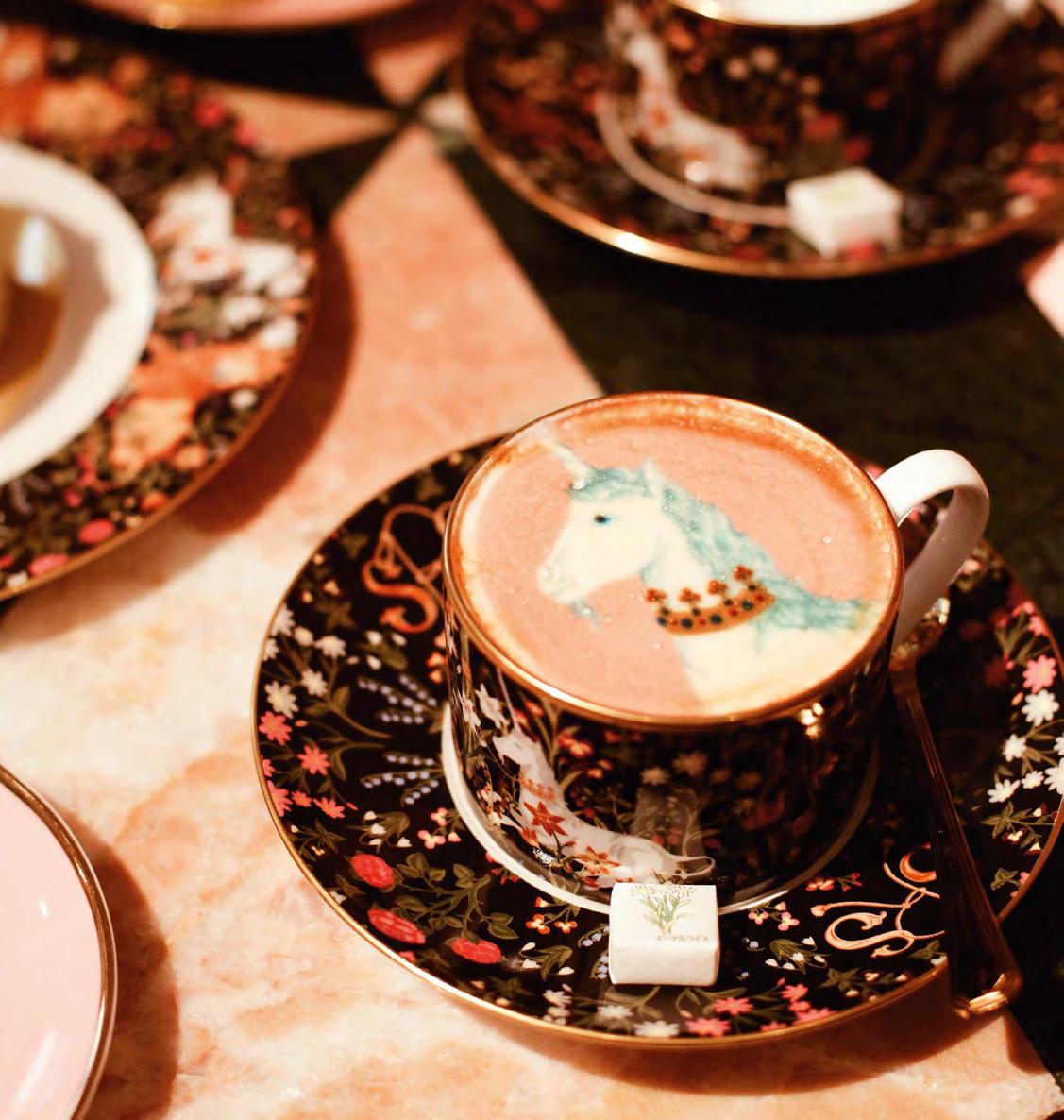
Sit back and take in a leisurely afternoon at the latest tea parlour and café in Bangkok. If you linger long enough, watch as the ceiling opens up to reveal a night sky.


SRETSIS, the Thai fashion brand of unique kitschy and quirky charisma designs has once again released a dream-like manifestation, this time with Sretsis Parlour. The fashion café cum cosy eatery is the ideal spot for a rendezvous as their fantasy-esque den attracts design followers and those wanting space and time with loved ones. Temptations on hand are fantasy confectioneries beautifully decorated, savoury snacks, drinks and music while a home décor section additionally completes the
The hipster kingdom of Ari street now welcomes Calm Spa, the latest zenmotivated addition to complete a work-life balance. This design-oriented spa values the truest sense of relaxation amidst the calm. Their serene atmosphere and use of the finest organic products ensure the most blissful experience. Calm Spa offers different pampering treatments that are inspired by both Thai and Western wellbeing approaches, specifically its highlight treatment –Created by the Culture. Get to know Swedish massage techniques, together with the use of a heated Himalayan salt pot.
facebook.com/CalmspaThailand, +66 (0) 96 941 8645

brand manifesto of ‘iconic romantic.’ The menus give interpretation to the brand’s design sensibilities with names like Sretsis Signature, Forest Fairies, and Siamese Delight of photo-ready presentations. Along with the tantalising décor and sumptuous savoury delights, Sretsis Parlour’s interior showcases their collaborative masterpiece between the Thai brand and London-based label, House of Hackney. Central Embassy, 2/F 1031 Ploenchit Rd., facebook.com/SretsisParlour, +66 (0) 2160 5875
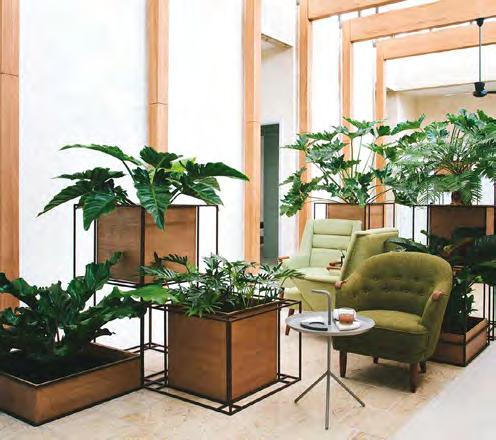
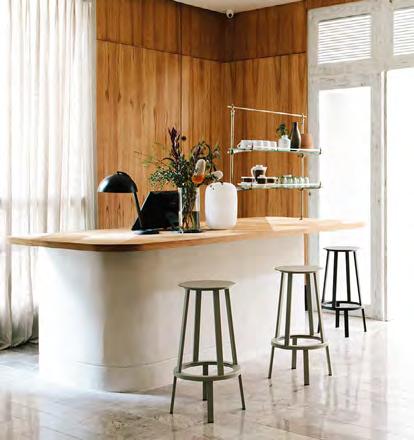


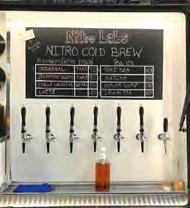
Passionate coffee brewer Nitro Labs is bringing craft cold brew coffee and tea to Bangkokians on tap, adding their unique stamp to the art of coffee brewing. On offer is nitro coffee, which is charged witn nitrogen – just like draft beer. The presence of nitrogen gives the brewed drink a richness and crema that brings out the natural sweetness of the coffee bean and gives every sip a velvety feel.
Housed in a Thai iconic vehicle, the craft drink on tap comes in a coffee Tuk Tuk that is parked at the W District. Their brews are from 3 bean types: Original and Signature Blend (both sourced from the north of Thailand), and a Nepal Single Origin. Nitro Labs is looking to open 8 more outlets in Bangkok. W District, Sukhumvit Rd., facebook.com/nitrolabswdistrict, +66 (0) 2332 2470
Despite the bustling area of Sathorn road, the restaurant Brasserie 9 sits serenely on Soi Phiphat. The elegant wood exterior of this new dining spot retains the splendour of the past while introducing the marvels of French cuisine with a modern twist. Diners can expect classic French dishes such as a Bouillabaisse,
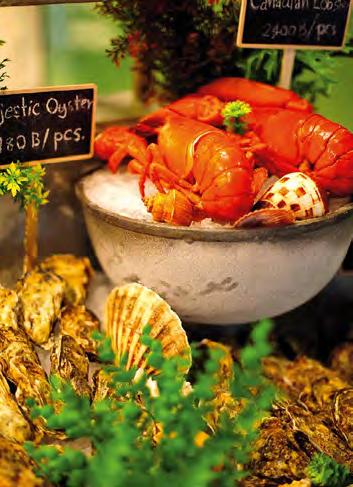
From two bestie friends with a love for the beach comes Sunbath and Pool Only, a complete beachwear store also in the hip area of the Ari neighbourhood. Located on the ground floor of Josh Hotel, the pink summer-loving boutique Sunbath and Pool Only promises to fulfil the wardrobe list for a beach lover’s fabulous getaway. Its variety of stylish beachwear from local designs to one-of-a-kind pieces makes for looking glamourous on a beach holiday. Apart from their own designs that change every season, the boutique features select pieces from unique names such as Parking Lot’s Hawaiian shirts, classy-glam swimsuits from Zika, and cute, trendy sunglasses from Exissoriez.
19/2 Phaholyothin Rd., Soi Ari 4 Nua, facebook.com/Sunbath and Pool Only

Entrecôte Café de Paris and Foie Gras created from the best ingredients with the impeccable skills of trained chefs. Their seafood bar on the 2nd floor is a pleasing highlight. Brasserie 9 is also known for its excellent selection of liquors and wine list as well as cigar rooms with Cuban cigars and a personal cigar locker for members.
27 Soi Phiphat, Silom, brasserie9.com, +66 (0) 2234 2588


SPOTLIGHT
The splendour of Angthong National Marine Park and the surrounding islands can now be appreciated on daytrips
aboard luxury yachts. Private charters such as that of Boutique Yachting offers you travel comfort and style, and the choice of two yachts – The Naga and The Baidee – both of which are well-equipped to ensure smooth journeys. The yacht cruises can be tailored to
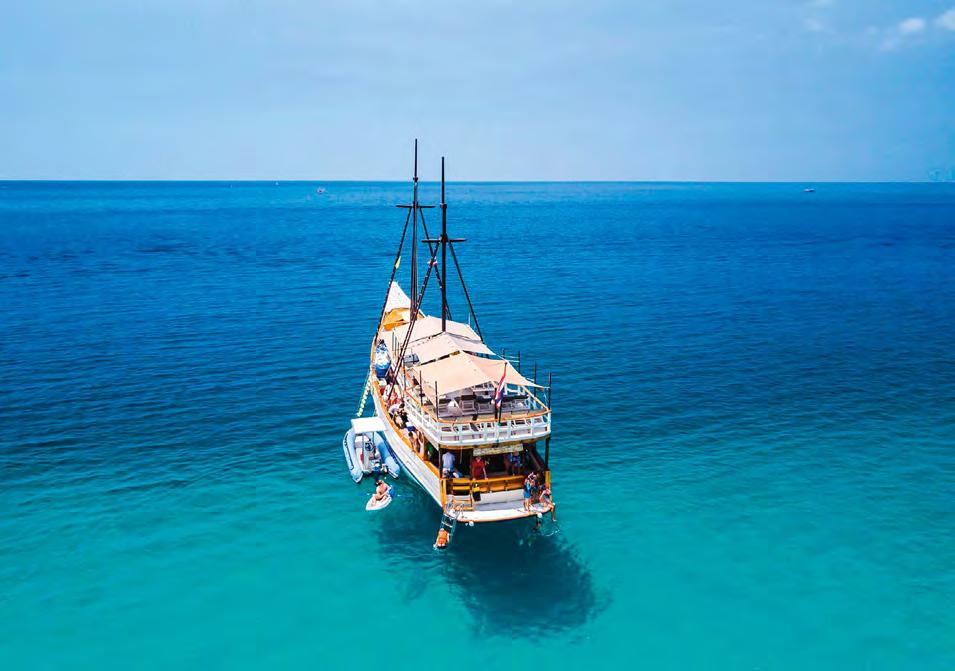
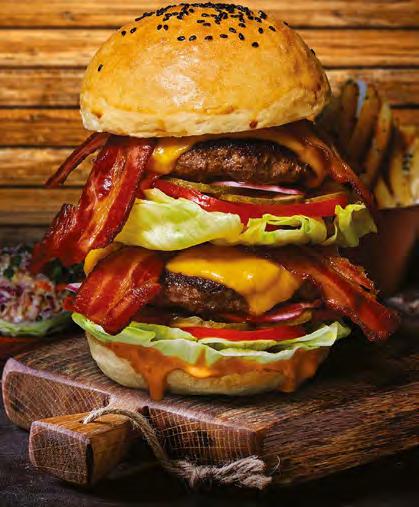
suit your needs with half-day, one-day or multi-day journeys. You can lounge on the yacht’s expansive sundeck with a full bar while taking in the stunning island views that are like no other. Petcherat Marina Pier 82/1, boutiqueyachting.com, +66 (0) 80 695 0801
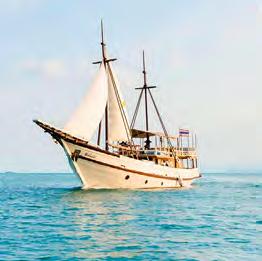

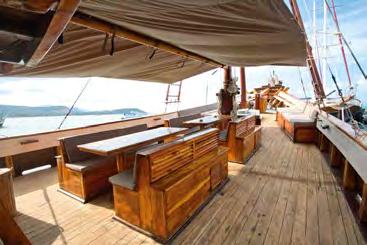
Stacked Burger adds unsurpassable standard to Koh Samui’s burger scene. Since 2014, the contemporary burger bistro of Chaweng has been drawing tourists and locals in for its hearty and juicy burgers with choices of premium ingredients like US and Australian grass-feed beef and homemade buns of varying options. The people of Stacked have great pride in their burger business, as seen from the way each patty is crafted fresh to ensure the delicious taste and tender, juicy texture. Also, Stacked offers menu alternatives for non-beef eaters and vegetarians to ensure that the place is the perfect venue for everyone. If you feel like chilling out in a feels-like-home atmosphere with exceptional casual grub, then Stacked is the right one. Enjoy its best-selling menu “The Cowboy” with onion rings – a showcase of Stacked BBQ, smoked bacon,
cheddar cheese, Stacked sauce, and salad on a black sesame bun – while sipping on a reasonably-priced drink from Stacked’s selection of local craft beers and cocktails.
South Chaweng Beach Road, stacked-samui.com, +66 (0) 77 915 222
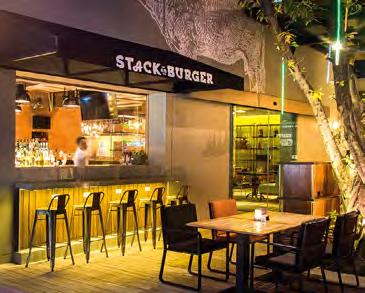



Fly through the Samui rainforest and get an adrenaline rush with zip-lining at Canopy Adventures. Once airborne, marvel at the lush rainforest from high up in the trees as you glide up to 80 kilometres per hour along its 2,000-metre route. Relying solely on gravity, the zip-line is an activity that is a friend to the environment with a simple and safe setup. A professional team will be in tune to your needs to provide thrilling fun. No experience is necessary, so first-timers should simply buckle up and enjoy the ride. canopyadventuresthailand. com, +66 (0) 77 300 340
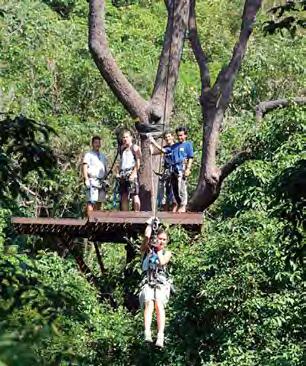

It began in 2004 when Bonnie and her family decided to call Koh Samui home. Bonnie is a certified instructor in Hatha yoga, which emphasises physical exercises to master the mind and body. Together with her husband Ian, an accomplished chef with a passion for healthy food, they

collaborated to create their centre for wellbeing: The Yogarden.
Part yoga sanctuary, part wellness retreat – the Yogarden strives to deliver an experience catered to both the body and the mind. The venue, near Fisherman’s Village, offers a Yoga Holidays programme packaged as a comprehensive guide that paves the way for you to plan directly with Yogarden and they’ll take care of the rest.
Their Detox Programmes range from 3 days to 5 days, with the belief that true healing involves the body getting rid of all toxins, as well as the stress and feelings impeding the path to wellbeing. Fisherman’s Village, theyogardensamui.com


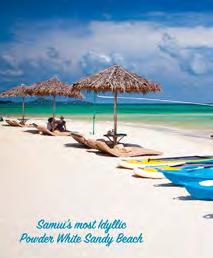

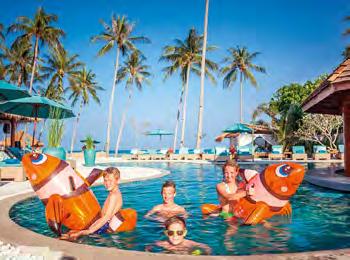
Free sunbed & use of towel
Beach Volleyball everyday
Beach Bar / Swim-Up Pool Bar
Happy Hour 4-7pm. everyday
Children’s Activities
Table Tennis & Pool Table
Beach Front Restaurant & Bars
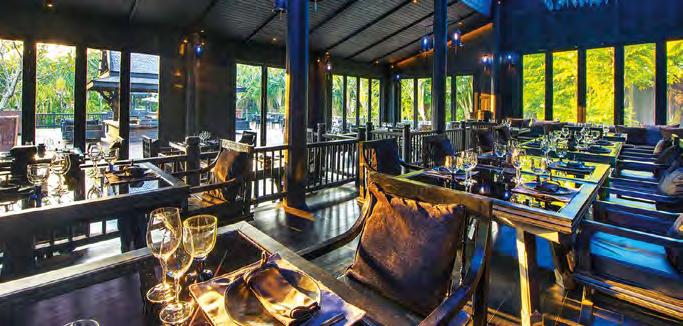
This black traditional Thai teak house sits on stilts in a floating illusion that seems to exist in your surreal dreams. Black Ginger – an elaborate Thai restaurant at the Slate Phuket – is known for its dreamy and mysterious atmosphere, as well as its good mixture of Thai southern flavours served as exquisitely as the ambience.
Phuket-style fresh spring rolls derived from a Hokkien recipe – is among the favourites, as well as Bua Thod – Phuket’s popular appetiser made from local

leaves and spices. In case you want to delve deep into the local food repertoire, try their yellow fish curry and the equally fiery Khua Gling Moo, a southernstyle stir-fry minced pork, also with southern curry. While all these intense flavours seem too daunting to enjoy with wine, the restaurant does provide a wellcurated wine pairing experience, ensuring that even the spiciest curry in Thai cuisine goes well with a well-selected drink. Open daily: 6.30 - 11pm, T: +66 (0) 76 327 006, theslatephuket.com/black-ginger



The origins of Phuket’s most famous shaved ice dessert, ‘O Aew,’ has always been a mystery, even for the locals. In a bowl, the translucent jelly is cut up into big cubes and typically served with red kidney beans, black glass jelly and adlay millet. A lot of people explain that this strange-sounding dessert is made from banana, thanks to the fruit’s natural pectin component.
At Cafe’in Thaihua Museum in Phuket Old Town, O Aew is revealed to be a derivative of a Hokkien sweet made of Aiyu Jelly – a natural jelly made from the dried seeds of a fig-like fruit. The museum also shows many new creations of Aiyu Jelly desserts served to fit modern tastes. You can try many variations such as lemon and lychee jelly, red bean paste jelly or watermelon jelly. Although some of the newer desserts may look unorthodox, they sure are as refreshing as in the old days. Open Tues - Sun: 9.30am - 7pm, T: +66 (0) 88 766 0962

For coffee connoisseurs, spending time to slowly appreciate a cup of craft coffee is a given. At many third-wave coffee bars, you get to know your beans, the farmer who grows it and your barista provides the full coffee experience and brewing method.
At The Shelter Coffee in Phuket, the AeroPress coffee maker replaces the expensive high-end espresso machine. Each cup of your coffee is hand-pressed, or if you prefer slowly dripped, to perfection. Coffee beans are also hand-roasted in small batches via a small ceramic pan by the owner – who came into the spotlight after winning the Specialty Coffee Association of Thailand’s AeroPress Thailand 2016 competition. A small menu of craft coffees, two snacks, or lunch of the day featuring a one-dish meal, is also made by the owner. A perfect place to take it easy and be gentle on your soul.
Open daily except Wednesdays: 9am - 5pm, T: +66 (0) 86 595 5148


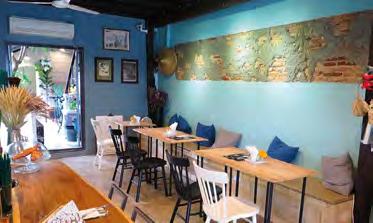

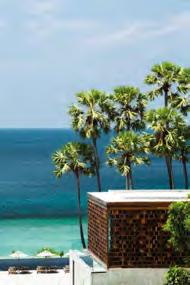


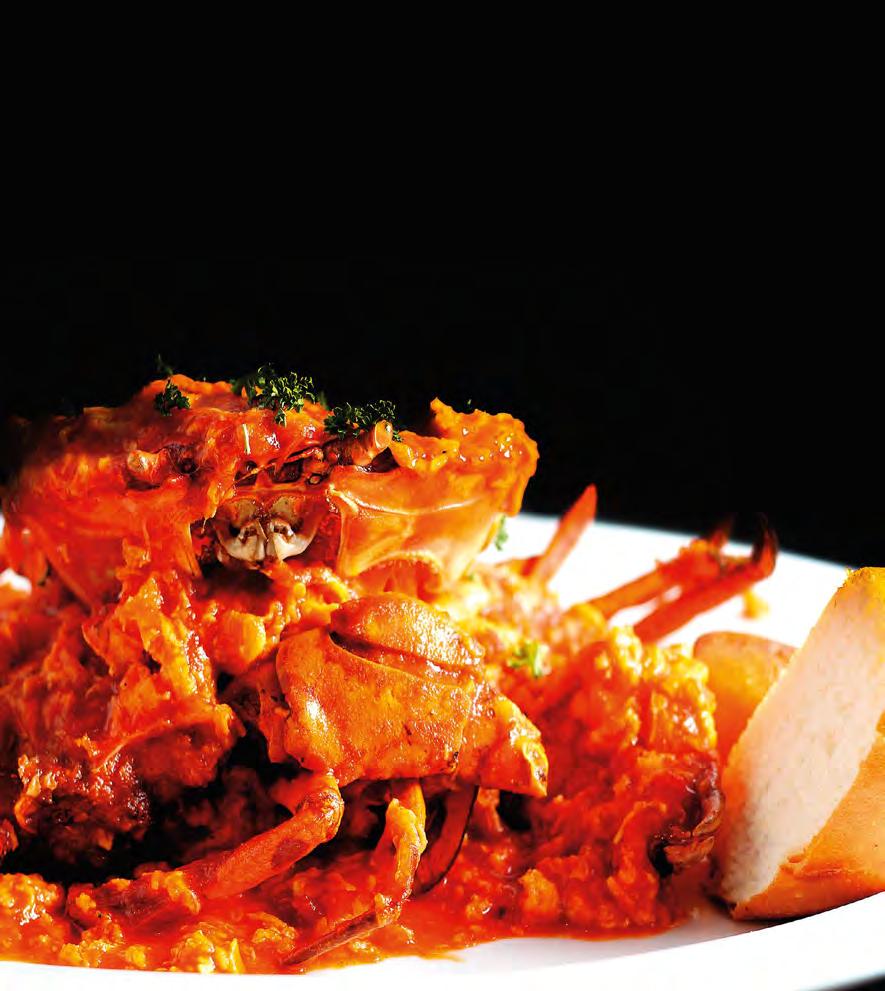
Specialising in giant black crabs, The Crab House is a crustacean-centric seafood restaurant in the Patong area that serves an array of delicious dishes with crabs, Phuket lobsters and seafood from the Andaman sea. Black crabs are the specialty here and super-sized, a sign that they are imported. Popular menus include Singaporean-style Chilli Crab served with mantou (Chinese steamed buns,) lobster in XO sauce, and steamed blue crab with the special house sauce.
The place is not by the beach, but it has a big room for functions and a separate full bar that’s good for sipping a drink before or after a meal. 169/83 Phang Mueang Road, Patong, Kathu, Phuket, open daily from noon - 11pm, T: +66 (0) 76 687 065, thecrabhouse.net
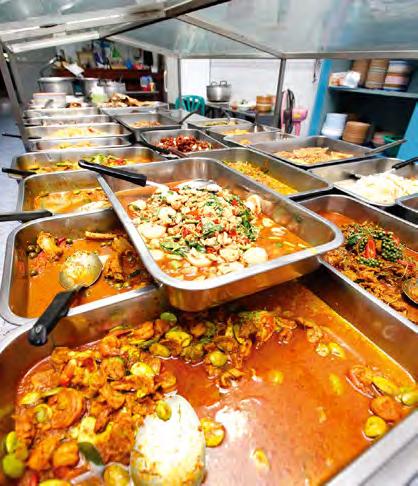
Phuket cuisine offers a mixture of southern Thai and Hokkien favourites. At Go Huad, one can tuck into a variety of Phuket style rice and assorted curries plus some side dishes, just like real locals do. Go Huad has been a go-to local restaurant for more than 30 years. Each morning, the back kitchen will be humming to churn out trays or pots of freshly cooked curries, soup, stir-fries and deep-fries. Phuket is known for its seafood and the restaurant offers more than 80 different seafood selections per day – a showcase of how locals make the best from local ingredients. Musttries include deep-fried Bigeye Trevally (pla mong), stir-fried morning glory with shrimp paste, fish kidney curry (gaeng tai pla). Gaeng Som (fiery clear curry) serves as an indicator of a cook’s expertise for the flavours since the curry needs to be perfectly balanced before adding fresh vegetables, fish or shrimp and served piping hot. The best time to pop in if you want to see the grandeur of all their selections is around 11am. Open daily: 8am - 3pm, T: +66 (0) 85 882 0416

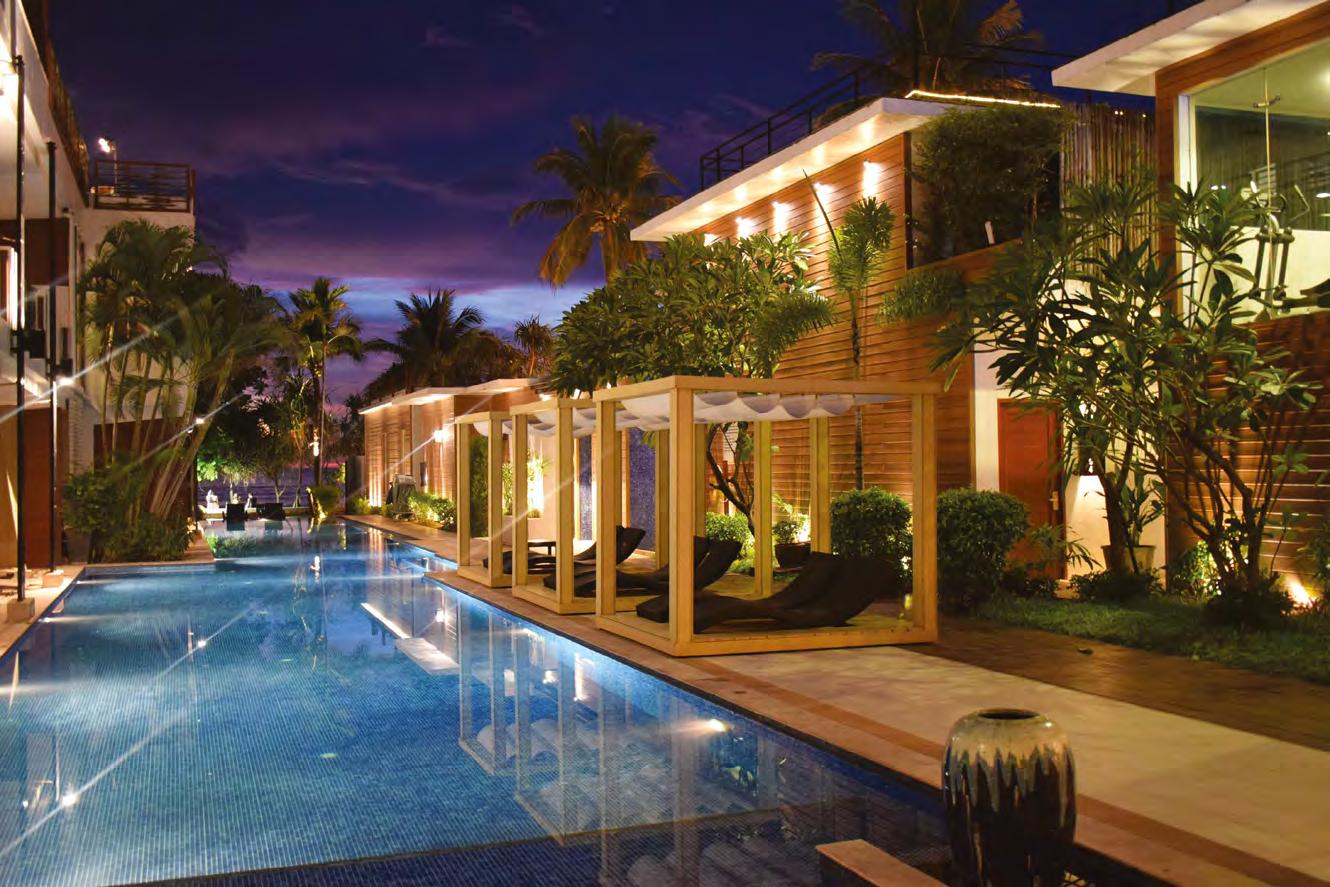

Thalang Road in Old Town Phuket was once called ‘Lad Yai’ – the local dialect for ‘Talad Yai’ meaning ‘Big Market.’ Looking at the road and the surrounding neighbourhood now, you would not believe this place was once next to a main pier where seafaring traders stopped to moor their vessels and stock up at the big market nearby. Phuket is about 150 years old, but its Old Town thankfully retains its charms despite modernisation. On Thalang Road in particular, many old family shopkeepers still live and sell their wares in the same houses for decades.
New generations of locals perpetuate the old market vibe of the street. Every Sunday, at sundown, a new market is created with a main road closed for a street fair. Live bands complement the presence of local snacks, fruits, and assorted goodies. Look out for a truck of Thai southern durian for a real Phuket delicacy. Open Sundays from 4 - 10pm, facebook.com/phuketwalkingstreet
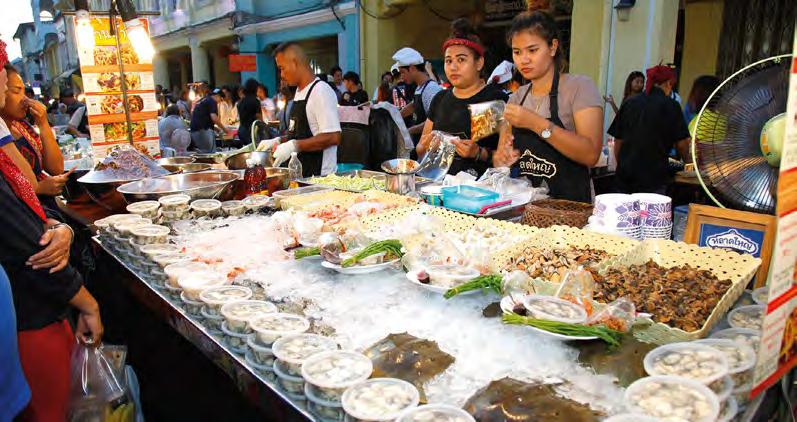





One way to celebrate Songkran in its most traditional form is a good dousing of water and even more non-stop fun where it all began – Chiang Mai. The Water Festival actually marks the Thai New Year and it is the longest and most anticipated public holiday in Thailand. This year, official celebrations in Chiang Mai starts from April 12 to April 15. Following ancient traditions, there will be religious ceremonies held to auspiciously mark the beginning

of the New Year. The first day will feature a long parade with Phra Singh, one of Thailand’s most sacred Buddha statues and a chance for everyone to join in the bathing ritual of the sacred statues.
People in traditional costumes will perform cultural dances during the procession. The province will also hold a beauty contest for Miss Songkran and the other for Mister

Add smart purchases to your Chiang Mai trip with clothing and textiles ranging from tie-dyed items to creations with elaborate embroidery done by the Mon people. Known as the Loang Him Kao community, you can now visit and support their creations of handmade items.
Loang Him Kao also offers various workshops for everyone to participate, such as ones on traditional Lanna cooking, crafting earrings from “teen jok” fabric, and learning the art of dyeing in the Japanese Shibori style. For those wanting to learn more about the community and their projects, a local guide is available at 500 baht per visit. facebook.com/Loanghimkao, +66 (0) 85 037 5252
Songkran. On the streets, foreign visitors must be prepared for a “warm welcome” from the hosts, who will greet them with water pistols or buckets full of water. Traffic will come to a standstill as part of the festival charm, with many roads crammed with people celebrating and visitors are encouraged to explore as many fun spots as possible.
Chiang Mai Municipal, +66 (0) 53 359 365
A must-visit for those wanting to learn more about Chiang Mai, now that the Chiang Mai City Arts and Culture Centre has just finished renovations; recently unveiling 15 multi-media permanent exhibition rooms. The centre is home to interesting Lanna arts and exhibitions with comprehensive history and traditions of the northern region.
The centre introduced 15 permanent exhibition rooms under the “Discover the Origins of Chiang Mai’s Identity” theme. The presentations are spectacular with usage of new media like video, software, models and graphic boards and comprehensive descriptions. Do carve out some time, it is worth spending an hour or more at the centre. Tickets cost 90 baht. Open Tuesday to Sunday from 8.30am to 5pm, cmocity.com, +66 (0) 53 217 793

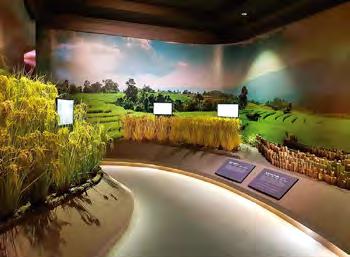


Doi Pha Mee village, literally means “Bear mountain,” – a former opium plantation in Chiang Rai turned coffee growing area. Coffee produced by the Akha hill tribespeople is more than just a commodity; it’s also an expression of love and care from the late King Bhumibol who worked hard to transform the community. Now the Akha tribespeople have also developed a community-based tourism programme, allowing tourists to catch a glimpse of their daily lives through various activities. Visitors can join the local people in planting fruits and vegetables, picking and roasting home-grown coffee, weaving and embroidering indigenous clothing or sample their freshly-brewed Arabica coffee. The community still observes old traditions and one of the must-see attractions on the mountain is the
wooden giant swing. Men in the village would remove the wooden seat and swing as high as they could to prove their manhood. In addition, it is the focal point of the Akha new year. Tourists can also hop on the swing; it’s actually a pretty safe activity. Those interested in absorbing the environment a bit longer can stay a night or two on the highlands, where there are various homestay accommodations. Alternatively, the tourists can also erect tents in areas designated for camping. The spot uniquely offers a great view of three countries –Thailand’s Mae Sai district, Tachileik in Myanmar and Laos. It’s an unforgettable sight as Doi Pha Mee greets visitors with mornings mists and a scenery that’s serene and beautiful. tourismthailand.org/chiangrai, +66 (0) 53 717 433, +66 (0) 53 744 674-5
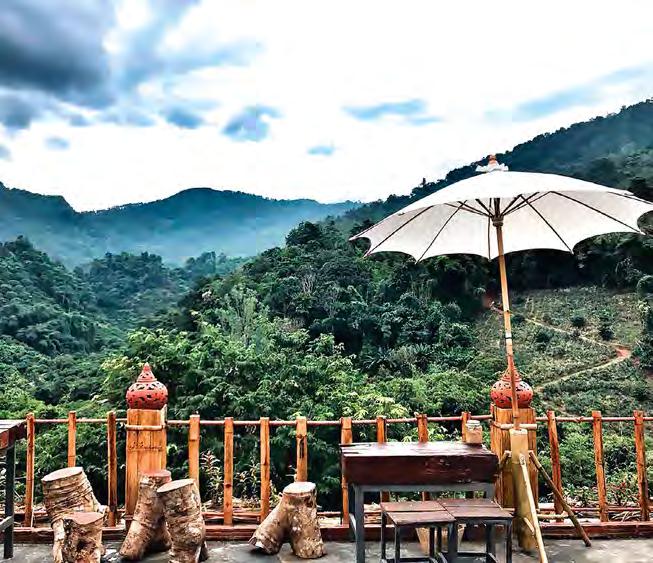
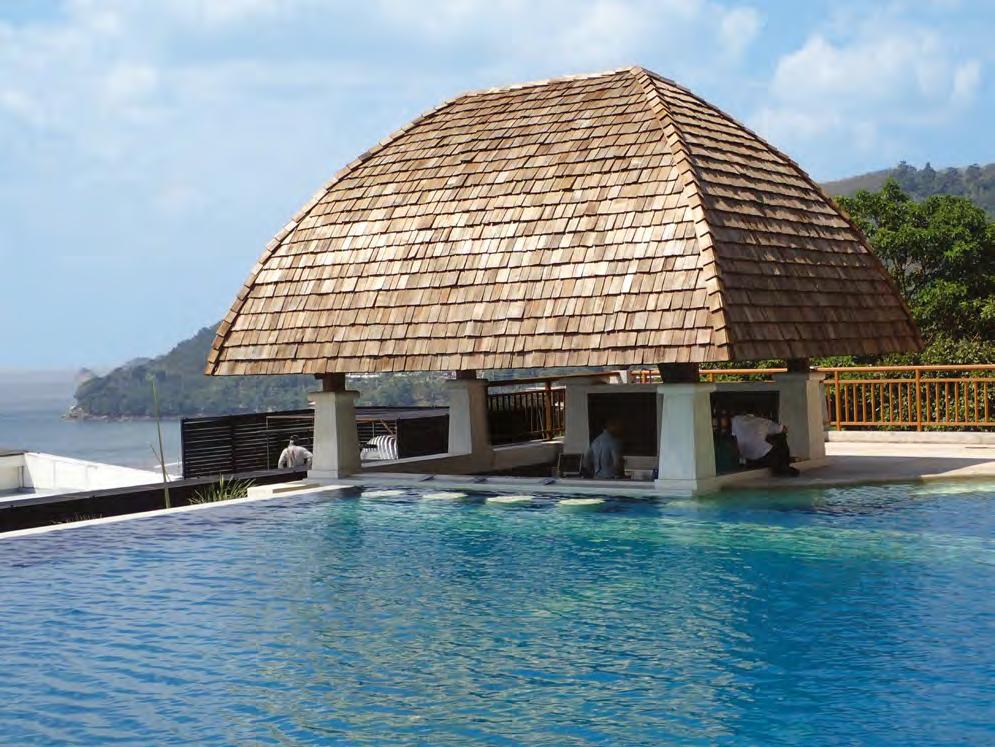



Get to know all about the deep roots of Thai art and culture at the Thai Thani Art and Culture Village in Pattaya. This new tourist attraction offers old Thailand as they preserve the art, culture, traditions, crafts and traditional performances. It is also a good place to soak up the beauty of Thai architecture, with structures like the multi-gabled pagoda, houses in various
styles from the four regions of the country. You can join activities like painting on cotton fabric and mulberry paper, pottery making, creating Thai sweets from palace recipes and other skilled crafts. Spare a full day for these cultural experiences and enjoy the old Thai way of life in a contemporary setting.
thaithanipattaya.com
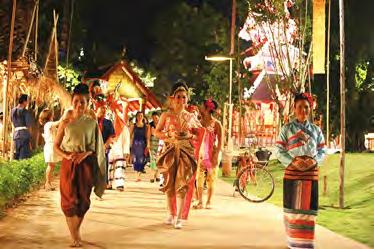


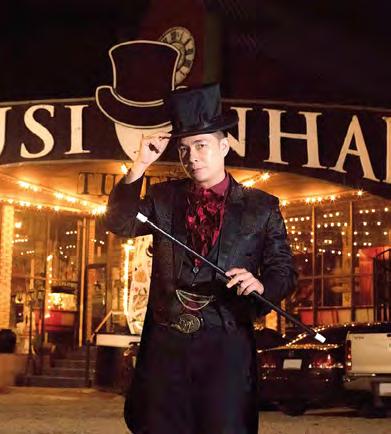
Do magic tricks and disappearing acts continue to amaze you? Do you always wonder how such sleight of hand is possible? If yes, come and explore the world of magic in Pattaya at the Tuxedo Illusion Hall. Prepare yourself for the fascinating mysteries in magic acts and illusions by Mr. Tuxedo, a professional magician. The theatre, arranged at full maximum to showcase tricks and illusions, presents a Broadway-like production. A full range of world-standard magic performances blows your mind away with live exhibits and ‘headless’ opportunities of jaw-dropping experiences at Tuxedo Illusion Hall. tuxedopattaya.com
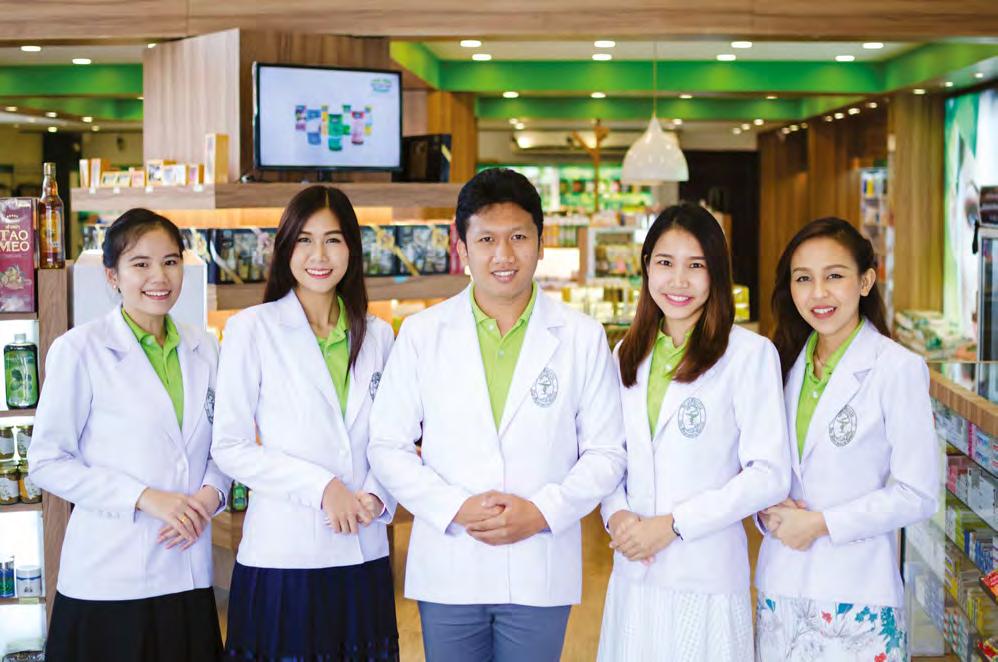


It’s not just peaceful relaxation on the beach that defines the island destination of Koh Chang. Get off the sand and consider stand up paddleboarding, or SUP. The fun and exciting sport offers an adrenaline rush while on the water. Unlike traditional surfing, an SUP rider stands on a board, using a paddle to manoeuvre through the water. This novel way to explore the ocean and nature is an alternative and adventurous fun and big waves aren’t needed for paddling. You can go to any open water and enjoy the ride on an SUP and experience the beautiful waters of the island, get closer to nature while keeping yourself fit at the same time. facebook.com/supstationkohchang

Visitors looking for a perfect place to end a productive beach day are usually enthralled by the the ideal sunset setting at Porn’s Bar and Restaurant. Nestled in the secluded beach of Kai Bae, this resort is a Koh Chang fixture and guests benefit from its wooden bungalow architecture surrounded by trees and tranquillity. The restaurant and the stairs lead


to the upper levels where you could absorb the peaceful atmosphere in their terraced pavilions while enjoying the beautiful views and great food of Thai and Western specialties. Hammocks or lounging on pillows ensure comfortable viewing of four nearby islands, making the restaurant a popular place. For a little more action, there’s also a fire juggling pornsbungalows-kohchang.com




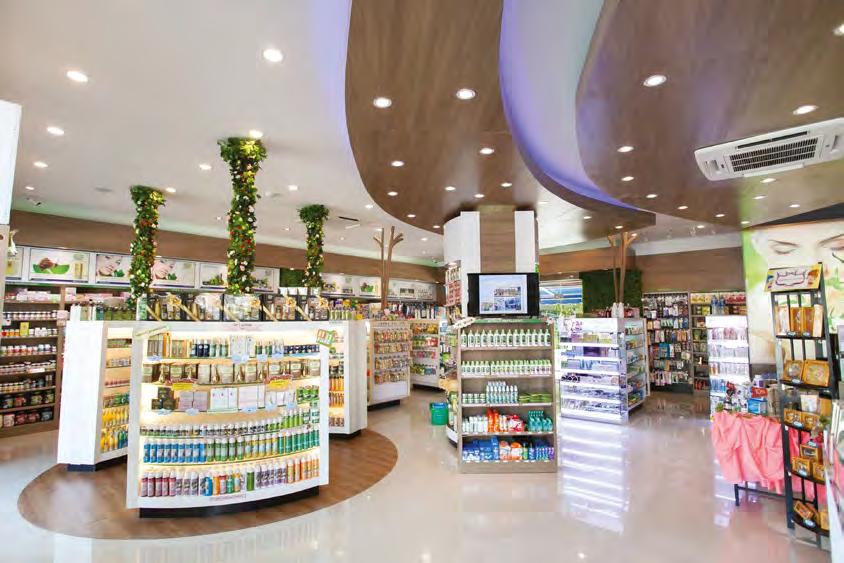
Dongshankou in Guangzhou is best visited on foot or by bike. Take a leisurely walk along the tree-lined streets radiating out from the Dongshankou metro station, and duck into the many historic buildings turned art galleries. Kui Yuan Art Gallery in the 1922 building is an excellent place to savour art from Chinese and international artists, or explore the quiet streets to discover smaller galleries like Art 11. You may catch a traditional guzheng (Chinese zither) performance or a tea ceremony demonstration. Those looking for a more guided itinerary can join Cycle Canton bike tour complete with guides well versed in local history. cyclecanton.com

Qingcheng Mountain is an oasis of verdant green with historic sites nestled among its trees and winding streams. One of China’s most significant Taoist mountains, it is home to Jianfu Palace which was constructed in the Tang Dynasty (618-907 CE) and Tianshi Cave, a major temple that houses a Sui Dynasty (581-618 CE) stone statue of Master Zhang Daoling. The mountain is a two-hour drive from Chengdu, or from the Chengdu Railway Station, take the bullet train to Qingchengshan and connect to the number 101 bus.
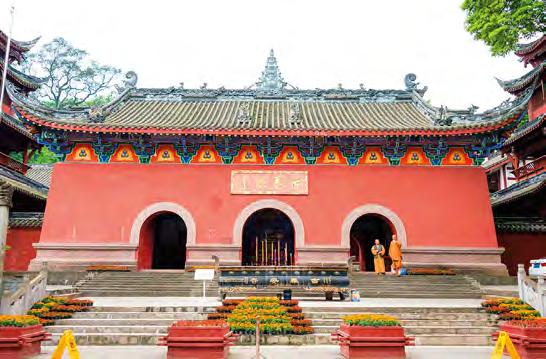
Shibaozhai Pagoda, or “Stone Treasure Fortress” in English, is considered an architectural wonder of the Qing Dynasty (1644-1912) as it was constructed without nails. Built into a steep, craggy hill, the Pagoda’s twelve stories overlook the Yangzte River in Zhong County, Chongqing.
One of China’s largest wooden temples, the Pagoda’s red pavilion is accessible via a wooden bridge and a yellow

entrance gate adorned with dragons and lions. Shibaozhai Pagoda can be reached via cruise boats along the Yangzte River, stopping at the Pagoda for two to three hours. Another outstanding presence is that of the Pavilion, whose vivid red colour provides a striking contract to the surrounding greenery, and its surprising shape that’s similar to a pyramid. yangtze-river-cruises.com

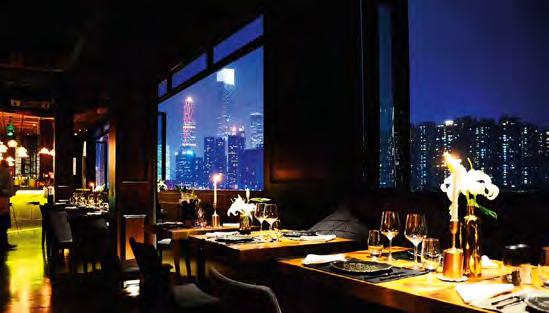


With two floors, a stylish bar, and rooftop lounge, Fuel invites guests to enjoy French bistro cuisine and drinks overlooking the dramatic Guangzhou skyline across the Pearl River. Chefs Greg Louraichi and Steven Chen have just launched a new menu and highlights include “Alaska king crab in jelly with Kaluga caviar, avocado foam, and saffron aioli” to start; “pigeon with daikon, pumpkin, fig, chutney, and fresh fig” for a main; and an irresistible “chocolate bomb with chocolate biscuit, black spicy chocolate, vanilla cream brulée, coconut, and Bailey’s sauce” to end. Yuexi Road 118 Pearl River Pazhou District B, 4-5, greglouraichi.com, T: +86 592 531 6600
The Guangdong Museum of Art’s 2017 Triennial explores the way modern technology is expanding the definition of what constitutes photography. The exhibition argues for a flexible concept of photography that draws on dynamic uses of traditional and modern art, physical and non-physical space, and multidimensional images that interact with the museum’s setting in old Canton and the modern Pearl River Delta. Catch this free exhibit Tuesday through Sunday. 38 Yanyu Lu, Ersha Island, Yuexiu District, guangzhouimagetriennial.org





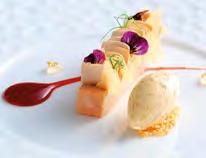

Vicky Lau has carved a reputation for serving beautifully presented edible stories at the well-established Tate Dining Room & Bar. The professionally trained graphic-designer-turnedchef has clearly meshed her two talents together as Tate has consistently brought diners on a journey of discovery through food.
Established in 2012 in Soho, Elgin Street, Tate now calls Hollywood Road its home. The new facility now incorporates a dining room with space for 30, as well as a private chef’s kitchen and a private bar. The outlet prides itself on its French and Asian Cuisine, all of which are presented intricately on a plate.
Dining at Tate is best described as a full-on sensory experience, with dishes that deliver both visual and gustatory simulation. Intimate and personal, Tate opens only for dinner with seasonal tasting menus on offer along with a carefully selected wine list. 210 Hollywood Road, Sheung Wan, Hong Kong, +852 2555 2172, tate.com.hk

Despite taking a whimsical approach to cocktails – specifically gin-based drinks – Dr. Fern’s Gin Parlour is serious about its staple beverage. The speakeasy outlet celebrates gin, evident by over 250 varieties and brands housed in their outlet.
On the official website, the outlet is said to specialise in treating “patients’ ailments, and stress-related symptoms with concoctions of fresh, local herbs and botanicals – paired with gins from around the world”. That is certainly evident by its menu, which is populated by creative concoctions, expertly made in-house by resident mixologists.
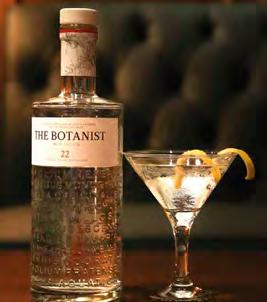

that is inspired by a vintage apothecary. With its wooden décor, retro wallpaper and ingredients housed in glass jars, Dr. Fern’s Gin Parlour certainly provides the ideal setting to throw back a gin or two in the evening, or even in the afternoon. Shop B31A, First Basement Fl., Landmark Atrium, 15 Queen’s Road, drfernshk.com

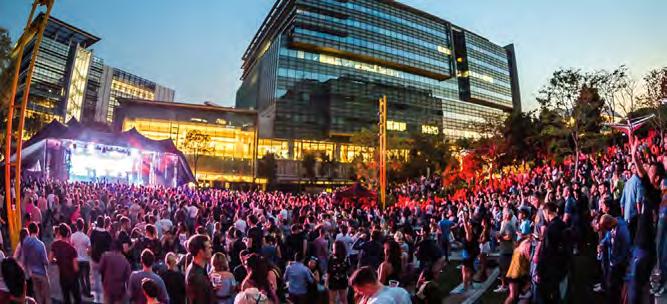
ATTENTION ON DECKS
Technology meets music in Sónar, one of the world’s biggest electronic music events. Respected by music fans the world over for its eclectic line-up, high-quality production and unwavering support for pioneering electronic artists, Sónar first began in Barcelona back in the mid-90s.
Continuing its worldwide success, the event returns to Hong Kong for its second edition to enthral electronic music lovers. Just like the previous instalment, Sónar will deliver a
line-up of established artists and hotly tipped emerging talents. The mix of performances will range from live acts to DJs, and dance-floor-driven sets to experimental electronica. Sónar will also showcase technology-centred activities, including Workshops, Talks, an Expo, Virtual Reality and New Media, which will allow guests to exchange ideas and technology in a fun and inspiring environment. 17-18 March, Hong Kong Science Park, Shatin, sonarhongkong.com/en/2018
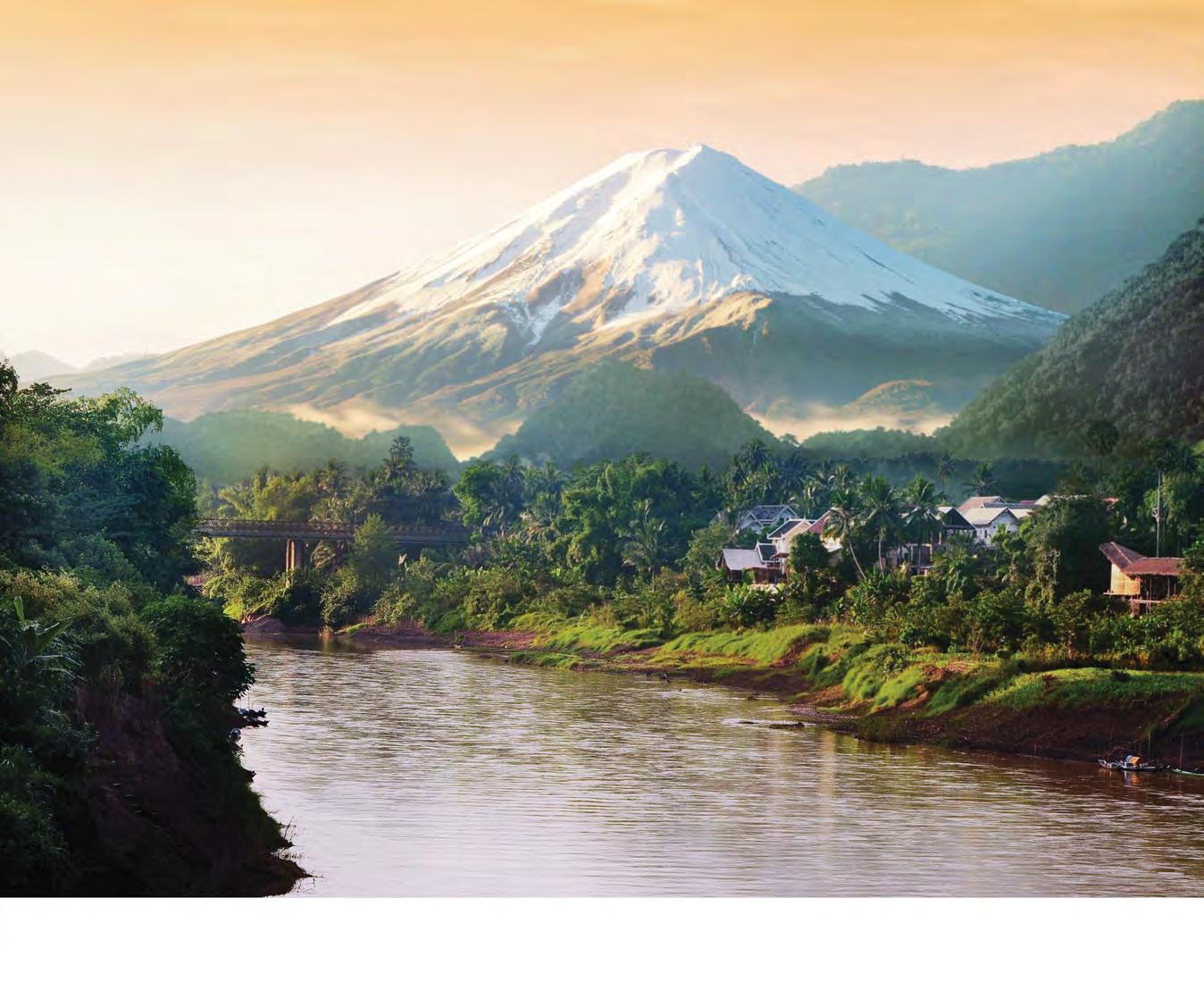

With over 12 million albums sold, Katy Perry is an artist that needs no introduction. Famous for her hit singles “Roar”, “Firework” and “Dark Horse”, Perry is an icon of American music, despite only making her debut just a decade ago.
In March, Perry will be bringing her brand of music and entertainment to Hong Kong as part of her world tour. Fresh off her North American leg, Perry’s WITNESS: The Tour will set the stage for the artist’s highly-anticipated debut performance in Hong Kong.
Her sold-out performances in America have thus far garnered rave reviews for its enormous, colourful sets with eye-popping props. Hop on board WITNESS: The Tour for an entertaining journey through Katy Perry’s
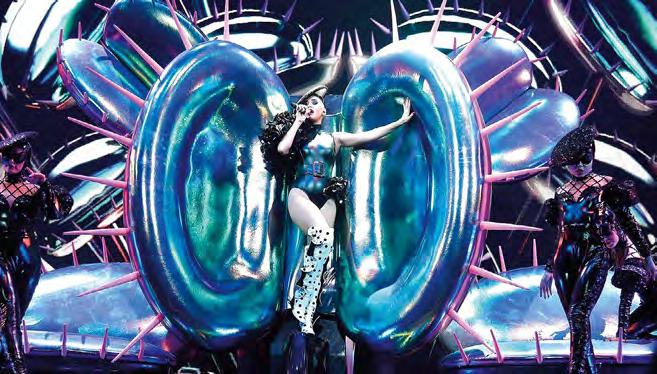




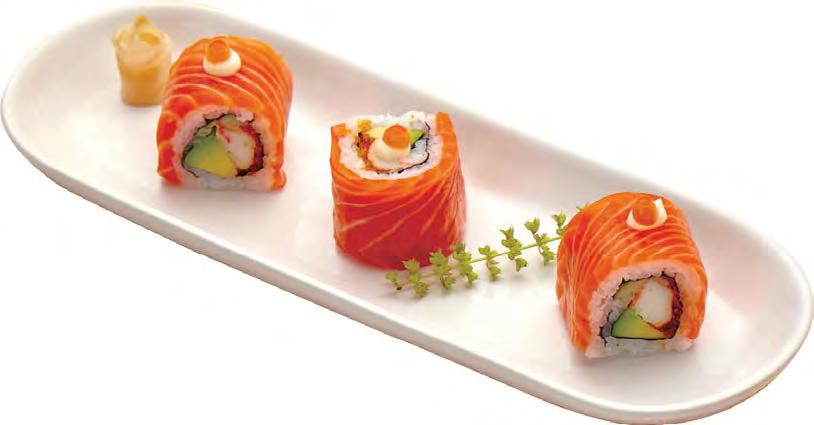

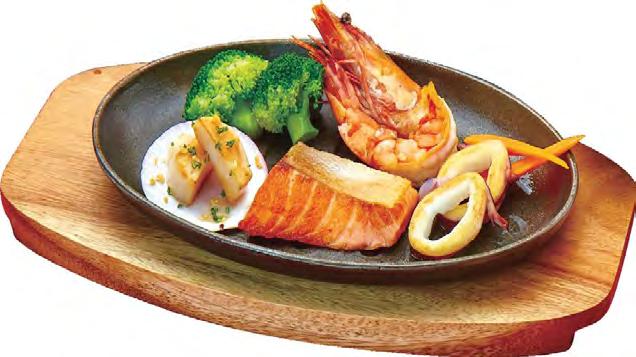
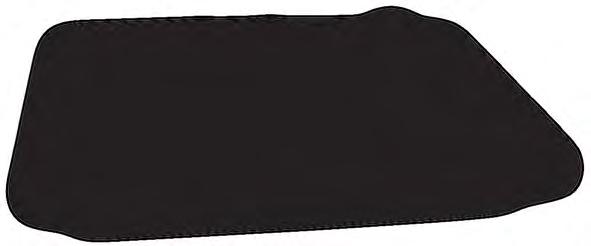

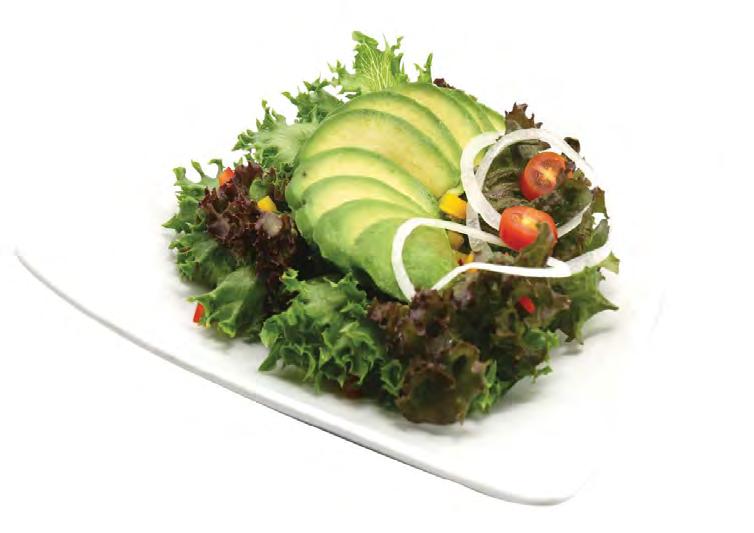



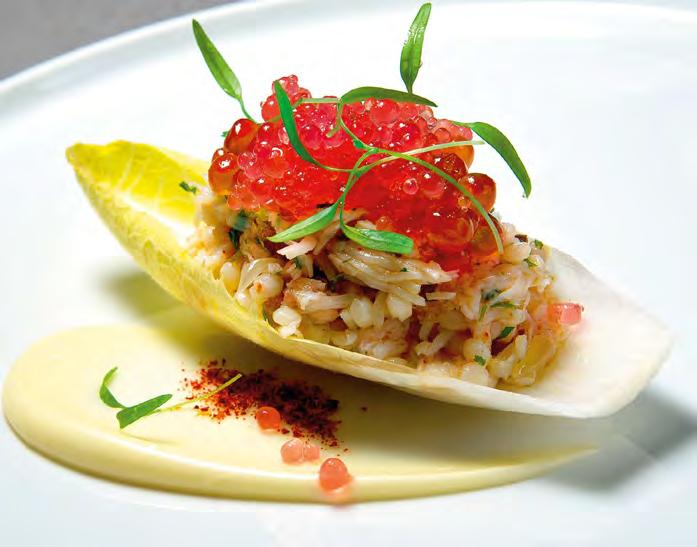
Lined with beautifully restored colonial shophouses, Duxton Hill makes for a very picturesque setting. Its unique architecture aside, this prominent neighbourhood has carved a reputation as an area that is both a feast for the eyes, as well as the stomach.
The area once known more for its KTV operations decades ago is now a renowned foodie
destination – thanks to a number of quaint restaurants, bars and cafés that have set up shop in the neighbourhood. Catering to the tastebuds of Singapore’s young, hip crowd and omnipresent expat community, this delicious enclave serves up a wide variety of international flavours and refreshing beverages.
Backed by Norwegian design and expertise, the FiSK Seafoodbar & Market has elevated the fish market concept in the Garden City. Part restaurant and part retail outlet, the upmarket establishment offers a Scandinavian-inspired menu by Executive Chef Markus Dybwad.
The outlet smokes its own fish; menu highlights include Norwegian favourites such as Atlantic Halibut and Lobster Salad, as well as Asian-influenced offerings like the Sea Bream Curry and Black Pepper Salmon. The outlet is also well-stocked with a selection of quality wines. FiSK Seafoodbar & Market, 30 Stevens Road #01-01, fisk.com.sg, +65 6732 0711
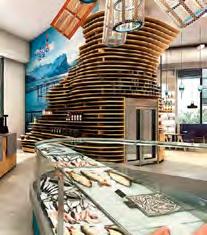

From fresh seafood to Spanish tapas as well as Mexican bites, being spoilt for choice is a requisite in Duxton Hill. Although there are too many to mention, some of the standouts in the area include the newly opened Brightside, for light bites and refreshments and French fine-dining establishment, Rhubarb Le Restaurant, which owns the distinction of a Michelin Star. Duxton Hill, Singapore
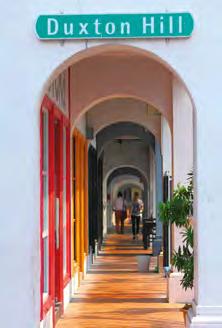
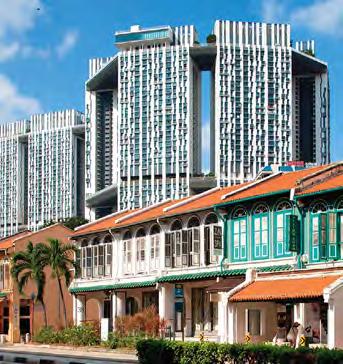
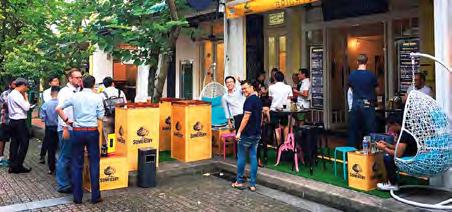
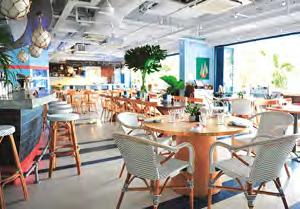
Surrounded by the pristine Keppel Marina, Bayswater Kitchen provides the ideal setting for tucking into fresh and delicious seafood. A favourite haunt for seafood lovers, this casual seafront dining establishment has been reeling in customers with its approachable ambience and menu that’s populated by seasonal favourites. Bayswater Kitchen’s alfresco setting and waterfront views have made it a top pick for the brunch
crowd where favourites such as Lobster & Prawn Rolls, Soft-Shell Crab Eggs Benedict and traditional Fish & Chips are the order of the day. It’s also widely popular with the after-office hour crowd and families, thanks to its laidback atmosphere and its extensive sharing platters.
Whole fish, lobsters, Fisherman’s Feasts and fresh shucked oysters are the top picks here, naturally. Cutlery is, of course, totally optional.
2 Keppel Bay Vista, Marina at Keppel Bay, bayswaterkitchen.com.sg, +65 6776 0777



This traditional old school kopitiam (coffee shop) is an institution for KL-ites. Situated near the centre of the Kuala Lumpur City Centre on Jalan Kamunting, Yut Kee has been dishing out delicious Hainanese dishes for decades.

One of the ‘go-to’ places for a typical Malaysian breakfast, Yut Kee serves up an interesting variety of dishes ranging from the staple, half-boiled eggs with toast, to more elaborate offerings such as the Roasted Pork Roll, which is only available on weekends. Other mainstay favourites include the Roti Babi - a deep fried bun stuffed with minced pork, stir-fried Hailam Noodles, and the Hainanese style Pork and Chicken Chop.
The décor of the outlet is stereotypically Chinese with Western influences such as mosaic

tiles and it exudes a nostalgic appeal that keeps fans and foodies coming back for more. As such, it’s not surprising to find a regular crowd lining up outside the outlet to get a table in the morning –especially on weekends.
1, Jalan Kamunting, Chow Kit, Kuala Lumpur, +603 2698 8108
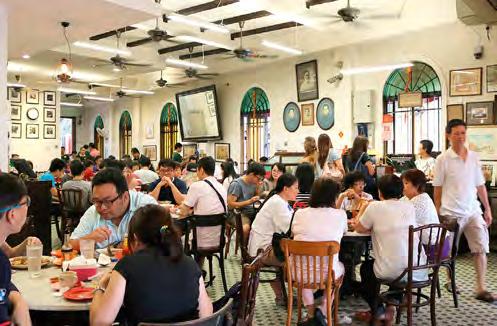


Cycling remains one of the best ways to truly soak in the sights and sounds of Cambodia. Each year, the CamNam Noble Challenge affords that opportunity to cycling enthusiasts via an epic 10-day trek through Cambodia and Vietnam. Despite the arduous and challenging journey, the event is for a good cause as it helps raise money for charity.
The cycling adventure takes participants from the iconic temple complex of Angkor Wat to Phnom Penh before the final
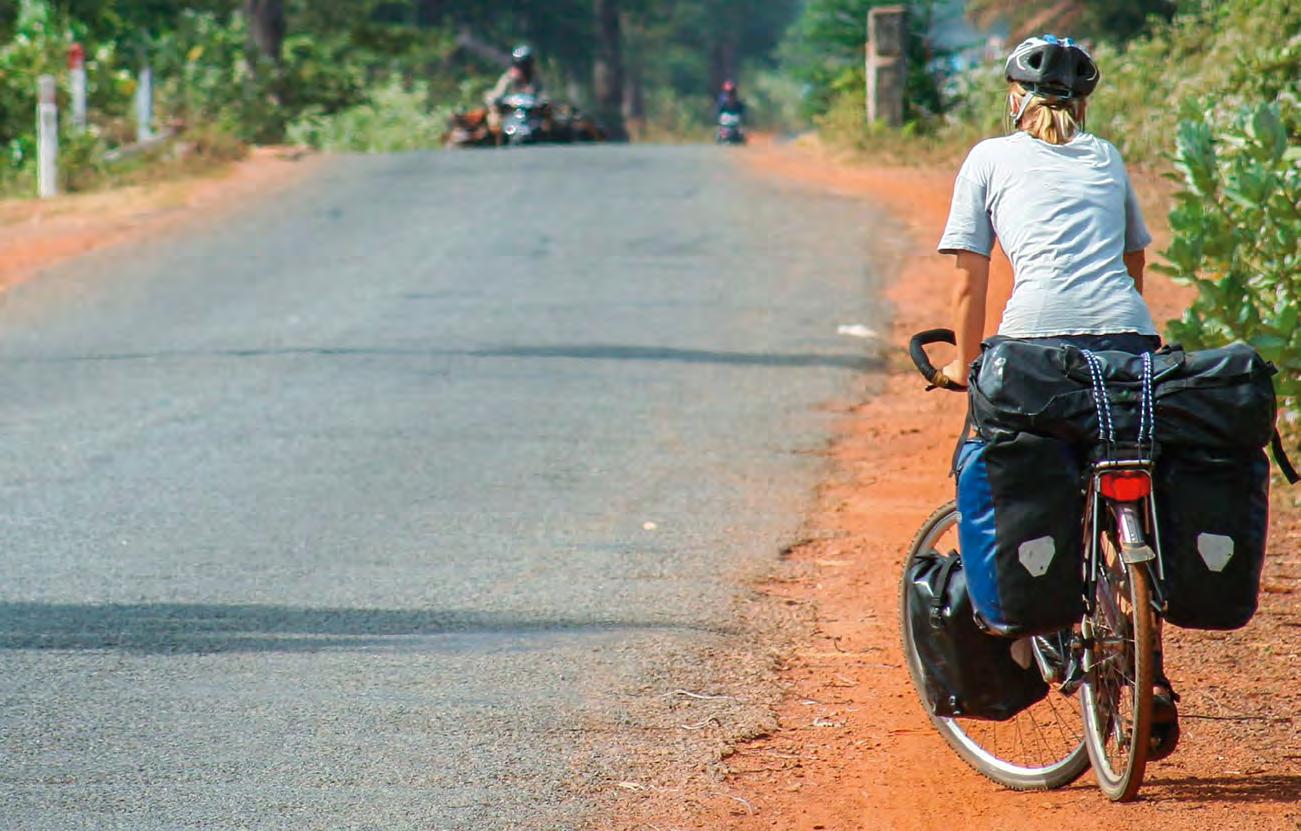
leg to Ho Chi Minh. The itinerary, which covers over 400km, will take participants through some of Southeast Asia’s most stunning landscapes.
The CamNam Noble Challenge officially ends at the Christina Noble Children’s Foundation’s flagship project, the Center of Social Assistance for Disadvantaged Children. The money raised from this event will be channelled towards the charity, for the betterment of these young deserving children. 21-30 March, cncf.org/camnam


Adventurous eaters who want to experience more than just Khmer cuisine may want to pay a visit to Bugs Café in Siem Reap. But be forewarned, dining here isn’t for those with weak stomachs, as the specials here are of the insect variety.
Bugs Café holds bragging rights to being the first ever Insect Tapas restaurant in Cambodia. Each dish boasts a fusion of both French and Khmer cooking methods, and made with locally-sourced insects.
Opened from 5pm daily, the outlet allows diners to tuck into items such as Spring Rolls stuffed with Ants, Tarantula Donuts, Pan-Fried Scorpions and Savoury Cupcakes topped with crickets and silkworms. Bugs Café also carries a noninsect menu for its guests. 351 Angkor Night Market St., Krong Siem Reap, +855 17 764 560, bugs-cafe.e-monsite.com
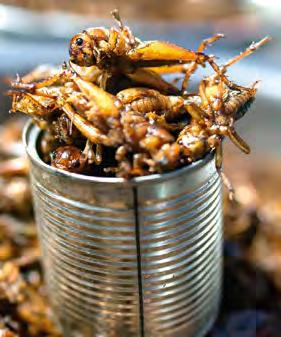
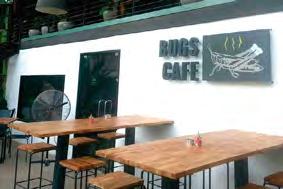

CAKES FOR A GOOD CAUSE
Blossom Training Centre & Café in Siem Reap has carved itself a reputation for its beautifully designed cakes and confectionaries. But the sweet and delectable sweet treats are just one aspect of this elegant café. Established in 2013 by Bloom Asia, the F&B outlet helps assist and tutor Cambodian women in vocational training.
Managed by Matthew and Melissa Stock, Blossom Training Centre & Café primarily educates, equips and empowers young Cambodian women. The students at Bloom Asia are trained on-site in a
VET-accredited hospitality course before they are employed in the social enterprise café and cake business, where they continue to receive ongoing training, education, mentorship and support. Transforming communities aside, the café is also well worth a visit for its impressive array of cakes and pastries, as well as creative coffee and teas. 6 Mondul, 1 Svay Dangkum, Central Market, Siem Reap, +855 17 800 301, blossomcakes.org

PHNOM PENH / SIEM REAP
With its strong European influences, Cambodian cuisine possesses a natural fusion of both European as well as traditional Khmer cooking techniques. Black Bambu, however, has taken this concept up a few notches by presenting fine gourmet food and cocktails in Phnom Penh at affordable prices.
Run by the Cambodian Children’s Fund (CCF), Black Bambu offers both big plates as well as small plates, with dishes inspired by cuisines from across the globe. This includes European and Asian-inspired tapas, tacos and pizzas, which are perfect for sharing as well as mains such as Crispy Snapper, Chilli Crab Linguini and Prawn & Cashew Nut Curry.


Housed in a beautiful setting, the outlet also supports the CCF’s mission of transforming children into tomorrow’s leaders. Proceeds of the restaurant’s profits go towards funding this initiative. Black Bambu opens for lunch and dinner daily, except Mondays from 10.30am to 3.30pm and dinner from 5.30pm to 11pm. 28, Street 228 (corner of Street 55), Phnom Penh, +023 966 895, black-bambu.com






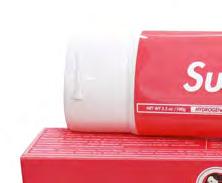

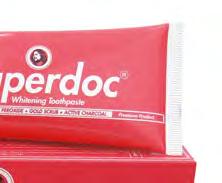


VIETNAM
After a day being barefoot at the beach, end it by catching a sunset.
Chuon Chuon Bistro & Sky Bar, perched high over the city and beach is your place to watch the sun slip into the horizon.
Chuon Chuon Bistro & Sky Bar started as a small bar up on a hill and has now turned into the largest and highest location in town. It’s usually packed with young locals, tourists and expats who come to wind down as they listen to some R&B. Chuon Chuon offers a variety of drinks with their signature being the “Five Elements” cocktail. The bar serves dinner with the beautiful night sky, together with a view of the ocean, mountains, and the town itself. Sao Mai Hill, 69 Tran Hung Dao, Phu Quoc, T: +84 (0) 297 3608 883

Vietnam’s Phu Quoc Island may be noted for its beaches and chill vibe. However, this southern island has more to offer holidaymakers beyond its seafood and beaches. Because Phu Quoc’s soil is rich in minerals and produces quartz, it is also an ideal environment for growing pepper. Anyone can take a side trip to explore this popular souvenir item. The pepper plant here is among the world’s finest in its aroma and grown from such a unique terroir. With exposure to the sun and sea breezes, the vines of the plants produce outstanding peppercorns. A visit to a pepper plantation can literally spice up your holiday in the discovery of how the pepper finds its way from Phu Quoc farms to dining tables everywhere. Currently over 400 hectares of pepper plantations and farms can be found throughout the central and northern regions of Phu Quoc Island. phuquocislandguide.com




The Rumba, Cha Cha, Tango and other dances that complement a street party will be demonstrated as Danang plays host to a series of street bands and party music with Street Festival 2018. Street Festival 2018 is scheduled to take place on the Han River banks for two hours (7.30 - 9.30pm) on the last Saturday of each month. Brass bands performing Vietnamese and international music gets the dancing going and the partying in full swing. Cultural and festive shows with activities ensure a festive mood while dancers wearing masks do the Paso Doble, Rumba, Cha Cha, Tango, Disco, Salsa moves. In addition to the brass bands and parades – expect spontaneous dance demonstrations. tourism.danang.vn/en
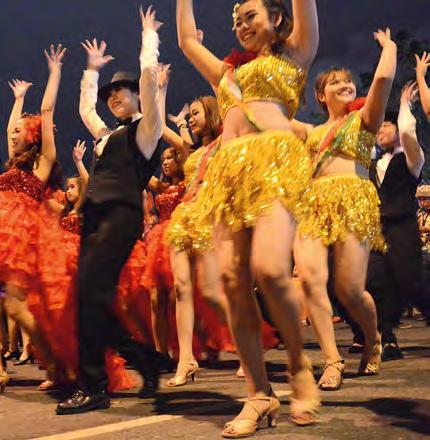
The Danang International Fireworks Competition (DIFC) returns to the Han River waterfront in 2018 with a longer, more spectacular series of duelling fireworks from teams across the globe. The first event in 2008 saw the participation of four international pyrotechnic teams, and the festival always draws crowds of spectators and pyrotechnics enthusiasts to the waterfront for enormous fireworks displays. This year, the competition will be spread over a month. From April 30 to June 9, a pair of eight pyrotechnic design teams from Poland, France, US, Hong Kong, Italy, Sweden, Portugal, and Vietnam will be fighting for top prize, culminating in the finale and awards ceremony on June 30. difcdanang.com

What you get is a promise to sample authentic Vietnamese food and Danang specialties when you sign up with Danang Food Tour. But beyond just eating, the tour regales participants with stories on how people in Danang live and play, with an itinerary that’s culture and lifestyle focused as well. Whether it’s during the day or night, you decide. For the early birds, the Danang Morning Food Tour (40 US$/person) promises walking and eating adventures on the streets of Danang. For the night owl, the tour (45US$/person) starts at 5pm off the city centre before making its way down bustling side streets to check out some local eateries.
T: +95 9 302 58388


For those wanting a break from the local hotel breakfast, there’s always dim sum near Kandawgyi Park. Signature Fine Dining and the Garden Bistro serves steaming hot dim sum
in the early morning as well as a delicious Western-style breakfast. Lunch and dinner are also offered in both Asian and European cuisines. You can choose to sit inside the
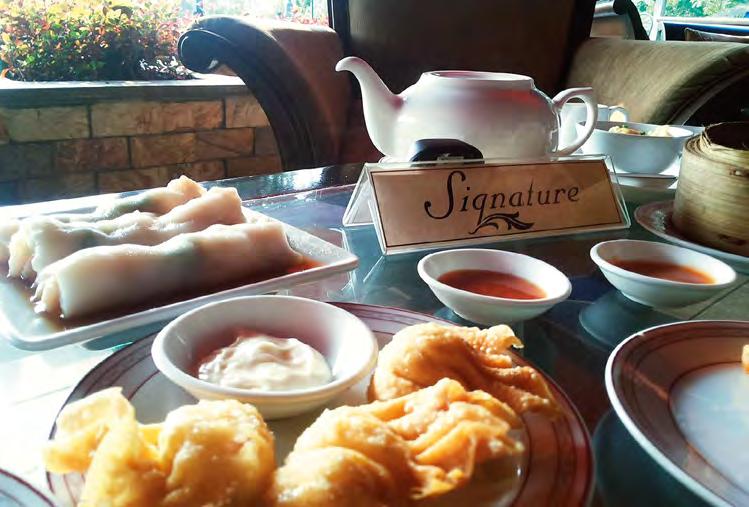
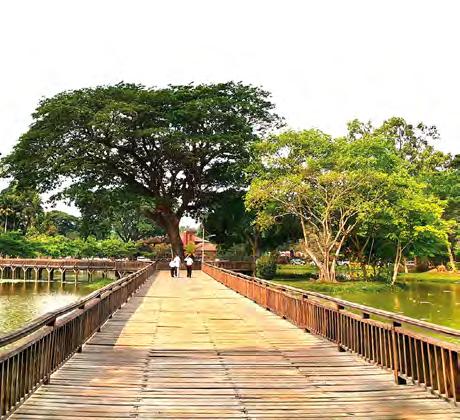

air-conditioned room or have a meal in comfortable outdoor seating. The restaurant is located just right at the park, where the views go well with your meal. Corner of Kaba Aye Pagoda Rd. and Kanyeikthar Rd., Yangon, open daily from 7am - 10pm, T: +95 1 546 488

Think of it this way: when you go on a run – you’ll be sightseeing on foot and working out at the same time. And to achieve this along the most pristine banks of Mekong River? Well, bring a comfortable pair of running shoes if you are in Vientiane in early March when the annual Vientiane International Half Marathon takes place. This annual run starts at That Luang Pagoda, winding through Vientiane’s interesting and hidden parts. March 4, facebook.com/ vientianehalfmarathon
Lovers of traditional and even antique textiles are in for a treat in Vientiane, as the Lao Textile Museum is one of the many must-see attractions. Located just a little outside of the capital, the Lao Textile Museum is a labour of love from the Sisane Family. It began as a private collection whose inventory turned into the remarkable Lao Cultural Centre showcasing Lao traditional textiles, architecture and handicrafts. The museum stands on a leafy traditional Lao compound — where a large traditional house stages the private museum. On the ground floor are traditional looms used
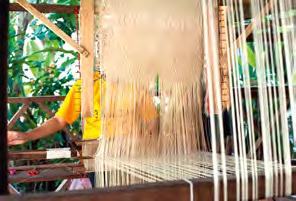
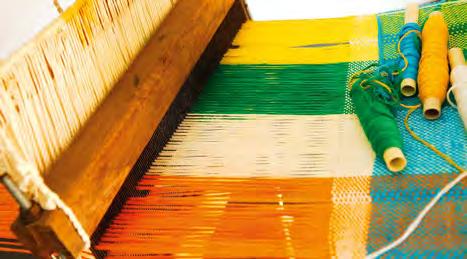
over the last century, while the second floor features antique silk pieces made by different ethnic groups in Laos. The life in Laos and its history have been woven into the fabric, inspired by present and past weavers. Many fabrics on display are mostly ceremonial and have been made for all occasions – weddings, religious and shrouding events. Some of these priceless fabrics take many months to make, whilst others are quite old and delicate. Visitors would definitely enjoy the stories beyond the traditional looms, shuttles and yarns, further appreciating a textile before grabbing a piece or two at the retail space. Lessons on natural dyes and the process are also available for those who want to get down with the indigo process. Ban Nongtha Tai (4 kilometres from Vientiane’s downtown), open daily from 9am to 4pm. Admission is 30,000 kip.

Goa seems to be the flavour of the season in Mumbai.
Lady Baga brings the relaxed Goa beach shack vibe with an ambience of deck beds, hammocks, and bean curtains. This is coupled with some authentic Goan fare such as prawn curry, pork vindaloo, Rechado crabs, and more. The cocktails are also Goa-inspired with ingredients such as Goan port wine, tamarind, and even a chorizo-infused vodka! Other new openings worth checking out are Keiba at Mahalakshmi
The world-class holiday destination of the Maldives never runs out of hospitable choices for a dream sojourn. It has recently welcomed Park Hotel Group’s first luxury resort Grand Park Kodhipparu, the one-island-one-resort masterpiece created from award-winning hospitality firm Hirsch Bedner Associates. Calling on the design firm’s artistic spirit, the resort sets a state-of-the-art standard for the property. Its unique combination of contemporary interior design and

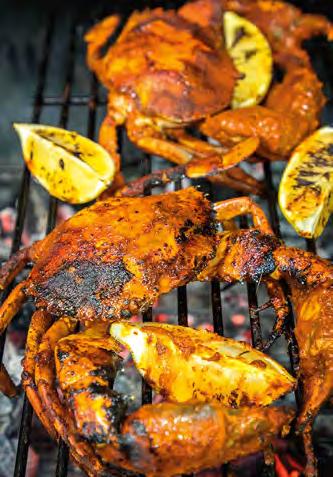
traditional charisma calls on native wood and rattan aesthetics.
As an oasis of cherished peace, the resort located in the North Malé Atoll, is blessed with pristine beaches and cobalt sea as well as marvellous sites for snorkelling and diving. The property has one of the best house reefs in Maldives, with a stunning display of coral, other marine life like turtles, sting rays and hundreds of colourful fish species – all seen from your villa. parkhotelgroup.com/en/maldives




Racecourse, where you can relish Japanese & Chinese delicacies while overlooking the stables, and The Wine Rack, a stylish wine bar where you can choose from more than 300 wines and pair them with a menu curated by celebrity chef Sarah Todd (of MasterChef Australia fame).
Lady Baga, Kamala Mills, +91 49731012
Keiba, Mahalakshmi Racecourse, +91 8976040121
The Wine Rack, Lower Parel, +91 8452833377
NCPA, the city’s premier theatre venue starts the Spring Season of the Symphony Orchestra of India (SOI) with a stellar line-up. On March 4th, the Bournemouth Symphony Chorus will join SOI to bring two glorious choral works to Mumbai – Beethoven’s Choral Fantasy and Haydn’s Mass For Troubled Times. This will be followed by their rendition of Handel’s Messiah on March 6th. Both performances will take place at NCPA’s Jamshed Bhabha Theatre. On March 10th and 15th, NCPA’s Godrej Dance Theatre will stage an opera screening of Puccini’s La Bohème followed by a theatre screening of the French play Scapin the Schemer on March 21st. Book tickets on bookmyshow.com/mumbai.
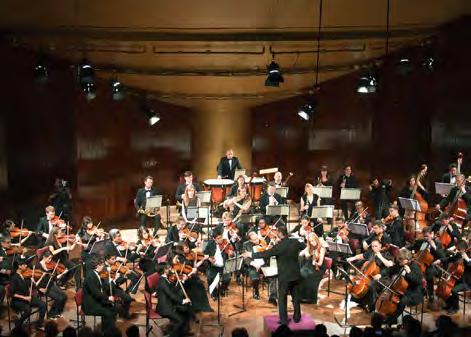


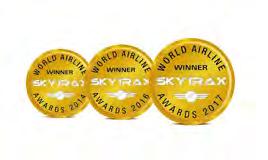



Recently, Mr. Sanit Promwong, Director of the Department of Land Transport and Mr. Puttipong Prasarttong-Osoth, President of Bangkok Airways PCL signed an agreement for public buses to service routes to relevant airports. Plans are underway for public buses to provide service to commuters needing travel between the 3 airports operated by Bangkok Airways; namely Sukhothai, Trat and Koh Samui airports and the respective city centres. Apart from the convenience, the collaboration supports the tourism and aviation industry with the goal to boost economic growth to the areas.
Mr. Sanit Promwong, Director of the Department of Land Transport, said, “The memorandum of understanding (MOU) articulates the government and the Ministry of Transport’s ‘One Transport’ policy to develop and integrate a public transportation system to connect airports, city centres and bus terminals – under the rules of high standards and safety supervision. Land transportation
representatives have been delegated in each province where each airport is located, so they can liaise with the airports and involved parties to plot bus routes, bus stops, bus parking areas, and determine fares that match commuter demands and flight schedules. This collaboration will increase more options for travellers and their lifestyles.”
Mr. Puttipong Prasarttong-Osoth, President of Bangkok Airways PCL also added, “We have elevated our service standards in all of our 3 operating airports in order to make it convenient for all travellers. These days, they can choose to commute from airports into the city using a taxi or limousine for more independent transport. On the other hand, this (agreement) will be providing a great option with public transportation. Parking areas for buses will be wellorganised and addressing safety standards. It’s all within a short walking distance and for the convenience of the public.”
Recently, Bangkok Airways Public Company Limited led by Mrs. Darunee Debavalya, Senior Director – Customer Satisfaction and Relationship Management (3rd from left), together with Mrs. Waewta Chaiyapol, Director – Customer Relations and Experience Management (2nd from left) had the pleasure of selecting 10 lucky winners from a second draw that was part of the Bangkok Airways Public Company Limited Customer Satisfaction Survey 2017. The event was held at the Bangkok Airways Ticketing Office on Vibhavadi Rangsit Road.


Passengers on Bangkok Airways flights can now enjoy new International Passenger Lounges at Suvarnabhumi Airport, an additional service offering extra comfort and convenience. The brand new International Passenger Lounges are located on the third floor of concourse D, opposite gate D7.
The new lounges have been designed to showcase the airline brand identity of the “boutique” touch. The new Boutique Lounge, 250sqm in size, can accommodate up to 120 passengers, while the Blue
Ribbon Club Lounge is 200sqm in size and can accommodate up to 50 passengers.
Passengers of Bangkok Airways departing on international flights can now enjoy these brand new lounges from today onwards. Opening hours are from 04.30am to 10pm. For more information, please visit our website: www.bangkokair.com or Call Centre by dialling 1771, 24 hours a day.
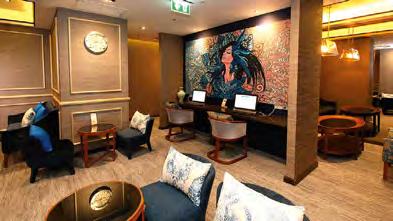

“LOVE EARTH, SAVE EARTH: LOVE SAMUI, SAVE THE COCONUT TREES” YEAR 3

Bangkok Airways, led by Ms. Nutchayathorn Nutsudanijvipa –Director, Samui Airport and other representatives, recently relaunched the environmental awareness project, “Love Earth, Save Earth: Love Samui, Save the Coconut Trees.” Now in its third consecutive year, the eco-initiative was held at Wat Laem Suwannaram, Koh Samui district, Surat Thani. The joint goal is to share eco-conscious knowledge among the island community to preserve and protect the iconic coconut trees of Koh Samui.
In the “Love Earth, Save Earth: Love Samui, Save the Coconut Trees” Year 3 project, more than 140 farmers, planters, locals and tree enthusiasts in Koh Samui gained more knowledge on care for their coconut trees. Participants were taught about pest control and eradication methods, such as the biological control of tree pests such as black-headed caterpillars, and having vespidae wasps as a natural way to control coconut pests. Young coconut plants and vespidaes were also donated during the event.
It’s another feel good moment for the Blue Volunteers of Bangkok Airways who were lucky to spend quality time with Thai kids recently. On Thailand’s Children’s Day last January 12, 2018, Mrs. Chanthip Thongkanya – Vice President, Office of the President; together with the Bangkok Airways’ Blue Volunteers team organised fun activities and prepared lunch for students at Thewa Khlong Trong School in Samut Prakan province. The event aimed at sharing in the happiness and fun with the children and challenging them with games and activities. The following day also was a great opportunity as the National Council on Social Welfare of Thailand under the patronage of His Majesty, the late King Bhumibol Adulyadej, appointed the Blue Volunteers to create wonderful activities under the theme, “10 Duties for Good Kids” around the Mahidol Building grounds.
Earth, Save Earth: Love Samui, Save the Coconut Trees”


Blue Volunteers

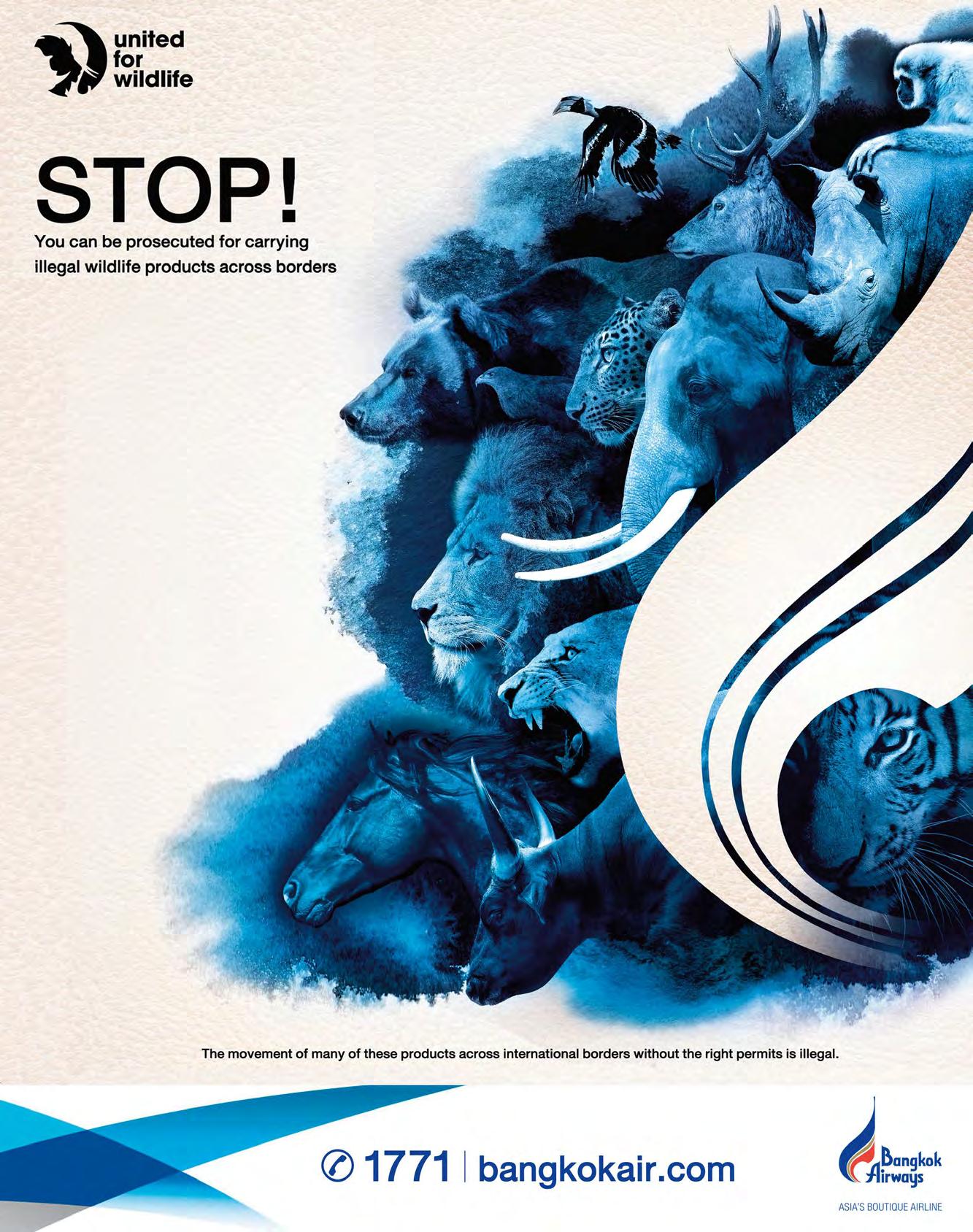







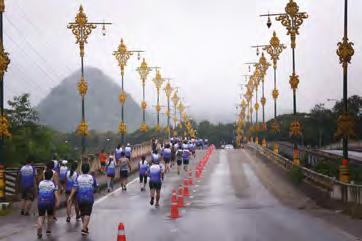




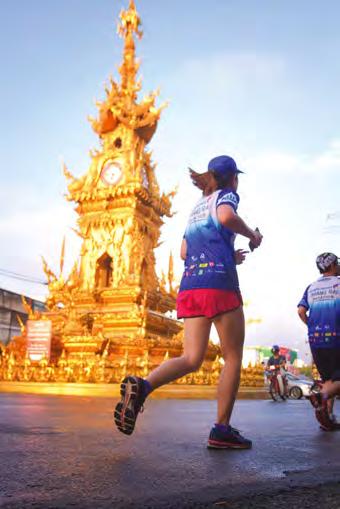

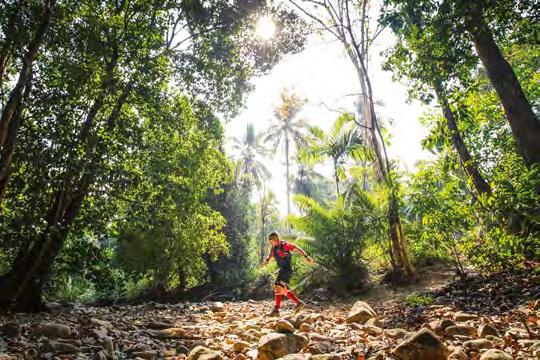








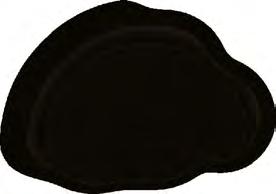















































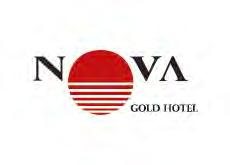
























AIRCRAFT INFO
NUMBER OF FLEET : 14
LENGTH : 33.84 m
WINGSPAN : 34.1 m
HEIGHT : 12.17 m
BANGKOK AIRWAYS OPERATES FOUR TYPES OF
IAE V2500 ENGINE : 920 km/h
NUMBER OF FLEET : 9
39,800 ft
CRUISING SPEED : MAX OPERATIONAL ALTITUDE : PASSENGER CAPACITY :
12 seats & 108 seats / 144 seats / 138 seats
CRUISING SPEED :
870 km/h
MAX OPERATIONAL ALTITUDE :
WINGSPAN : 34.1 m
HEIGHT : 12.17 m
:
39,800 ft
PASSENGER CAPACITY :
162 seats
ATR 72-500
NUMBER OF FLEET : 6
LENGTH : 27.17 m
WINGSPAN : 27.06 m
HEIGHT : 7.65 m
2 x 2,750 hp
Pratt & Whitney
Canada PW127F
ATR 72-600
NUMBER OF FLEET : 9
LENGTH : 27.166 m
WINGSPAN : 27.050 m
HEIGHT : 7.72 m
: ENGINE : LENGTH : 37.57 m
2 x 2,750 hp
Pratt & Whitney
Canada PW127M
OUR SCHEDULE DOMESTIC FLIGHTS
CRUISING SPEED :
509 km/h
MAX OPERATIONAL ALTITUDE :
25,000 ft
PASSENGER CAPACITY :
70 seats
CRUISING SPEED :
509 km/h
MAX OPERATIONAL ALTITUDE :
25,000 ft
PASSENGER CAPACITY :
70 seats
INTERNATIONAL FLIGHTS FLIGHTS AND FREQUENCY
Bangkok, Koh Samui, Phuket and Chiang Mai :
Numerous flights every day from a variety of destinations
Chiang Mai : 1 fligh t per day from Phuket ;
1 fligh t per day from Koh Samui
Chiang Rai : 3 fligh ts per day from Bangkok
Hat Yai : 1 fligh t per day from Phuket
Koh Chang/Trat : 3 fligh ts per day from Bangkok
Krabi : 3 flights per day from Bangkok ; (As from March 25, 2018 onwards)
1 flight per day from Koh Samui
Lampang : 3 fligh ts per day from Bangkok
Mae Hong Son : 1 flight per day from Chiang Mai (As from March 25, 2018 onwards)
Pattaya : 1 fligh t per day from Phuket ;
1 flight per day from Koh Samui
Sukhothai : 2 flights per day from Bangkok (As from March 25, 2018 onwards)
Chengdu : 4 fligh ts per week from Koh Samui
Chongqing : 3 fligh ts per week from Koh Samui
Danang : 1 fligh t per day from Bangkok
Guangzhou : 1 fligh t per day from Koh Samui
Hanoi : 1 flight per day from Chiang Mai (As from March 25, 2018 onwards)
Hong Kong : 2 fligh ts per day from Koh Samui
Kuala Lumpur : 1 fligh t per day from Koh Samui
Luang Prabang : 2 fligh ts per day from Bangkok
Malé : 1 fligh t per day from Bangkok
Mandalay : 1 fligh t per day from Bangkok ;
Mumbai : 1 fligh t per day from Bangkok
Nay Pyi Taw : 6 fligh ts per week from Bangkok
Phnom Penh : 6 fligh ts per day from Bangkok
Phu Quoc : 4 fligh ts per week from Bangkok
Siem Reap : 5 fligh ts per day from Bangkok
Singapore : 2 fligh ts per day from Koh Samui
Vientiane : 2 fligh ts per day from Bangkok (As from March 25, 2018 onwards)
Yangon : 4 fligh ts per day from Bangkok ; 1 flight per day from Chiang Mai 1 flight per day from Chiang Mai

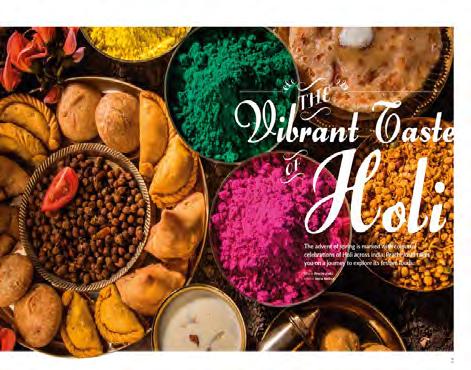

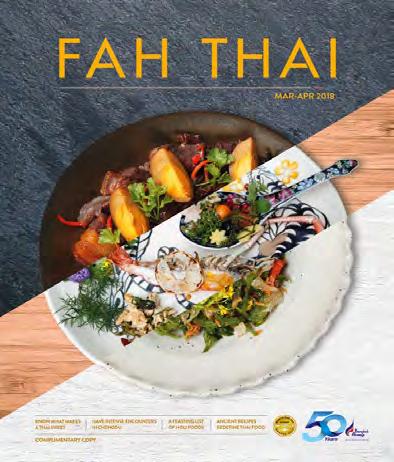


Hanoi’s coffee lifestyle is now within easy reach, as Bangkok Airways introduces flights from Chiang Mai to Hanoi starting March 25, 2018. Sit with dedicated locals and sip the smoothness of a Ca Phe or Vietnamese coffee, ideally with the scenic West Lake in full view.







